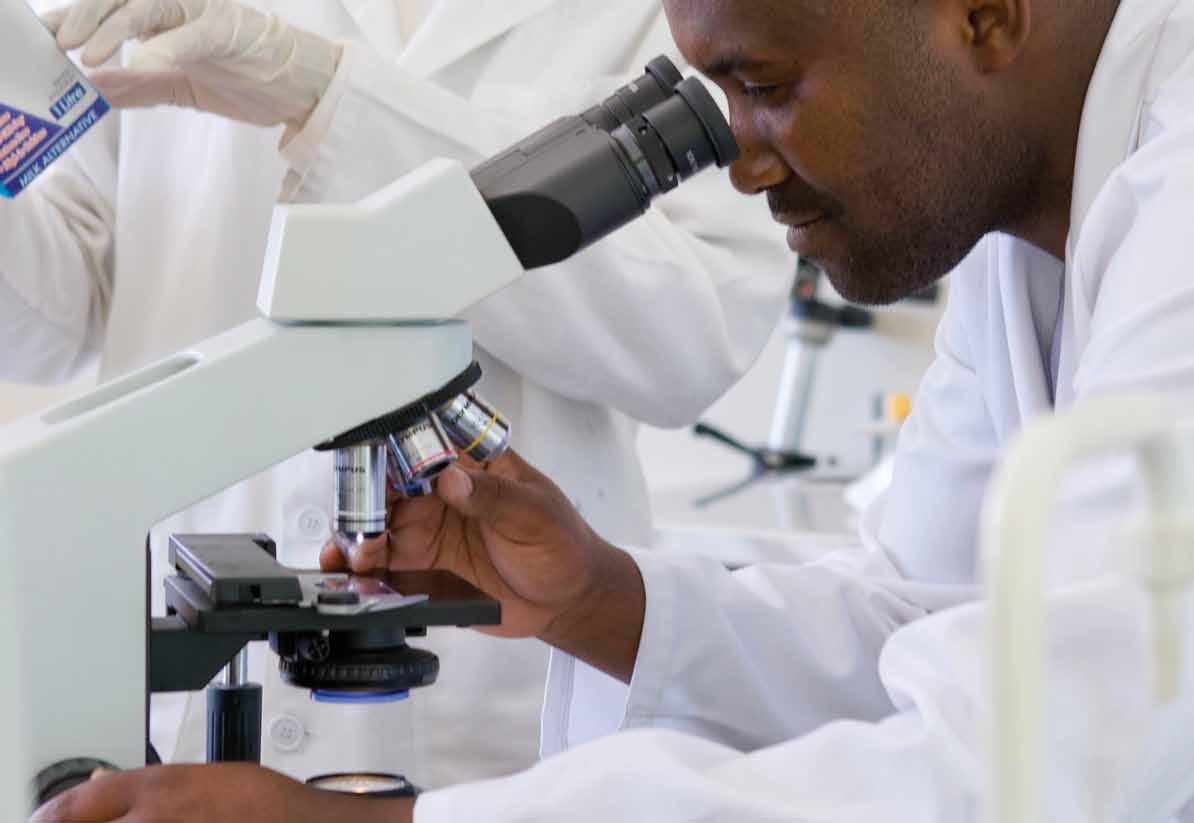Research Report 2015





[Please note that Dr John Volmink is CPUT’s Acting Vice-Chancellor as of 31 October 2016]
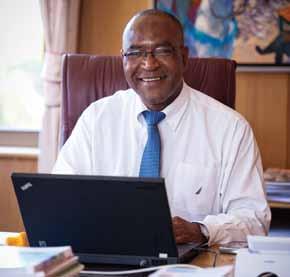
Just over ten years on from the successful merger which resulted in the Cape Peninsula university of Technology, we are well on the way to creating our own legacy as a university of technology and internationally recognised research institute. In order to forge ahead in terms of research throughput, recognition from peers and increased NRF ratings, we are continuing to nurture a healthy and thriving university research environment.
Over this time, we have established niche research areas and units; actively promoted and pursued peerreviewed journal publications and conference papers produced by staff and postgraduate students, and enhanced the capacity and quality of postgraduate research, while keeping in sight our financial obligations when it comes to gathering grant and funding income.
While CPuT advances teaching and learning, its foundations as an institution of higher learning are built on the tenets of quality research. We continue to foster research collaborations, disseminate knowledge through publications and presentations, sustain focus on the commercialisation of research products to justify research investment, and nurture
a passion for research, while complying with good practice and international guidelines through professional management and innovation.
Developing and advancing excellence in researchers continues to be strongly highlighted, and we do this in accordance with the NRF’s mission toward diversity and transformation. Our mandate is to grow the next generation of academics and inspire them to create new knowledge. By striving to become a cornerstone of academia in Africa, we are also charged with a responsibility and commitment to cultivate researchers who can dedicate themselves to uplifting the continent. This year, we’re pleased to note continued growth in DheT-subsidised research output, which remains promising in our quest for continuous improvements.
In line with CPuT’s vision “to be at the heart of technology education and innovation in Africa”, these are some of the exciting contributions to society made by CPuT researchers during 2015:
Learners’ projects supervised by researchers from our Institute of Biomedical and Microbial
Biotechnology won accolades at this year’s Cape Town eskom Science expo for Young Scientists
TshepisoSAT, the first nanosatellite to be developed on the African continent, continues its journey of discovery, significantly transforming the way humans explore space
SAReTeC, the first national renewable energy technology centre in South Africa, continues to
provide accredited renewable energy training and education tailored to industry needs
• Climate change and environment
A hydrological expert and award-winning researcher, based in the Department of environmental and Occupational Studies, is exploring changes in climate and the ever increasing demand for freshwater resources in our country
• Human and social dynamics
CPuT academics have published a book about Digital Storytelling (DST) in heIs with an informed social justice approach to teaching and learning, at the heart of which is the exploration of DST as a practice of voice and agency
• Economic growth and international competitiveness
CPuT has more than 40 patent applications spanning across the globe; our Technology Transfer Officae’s annual student innovation competition generates many new ideas, products and services that often result in enterprise through an incubation process
• Design for sustainability
CPuT inventors are tackling traffic congestion, poor public transport integration, and carbon emissions with our first electric vehicle in the TIA Adaptronics Advanced Manufacturing Technology Laboratory; the Watt scooter, which won the Innovation Award at the Design Indaba; and continued research into micro-mobility vehicles
We continue to build on the foundations laid by the Research Technology Innovation (RTI) Blueprint, paying particular attention to research excellence, strategic partnerships, tapping into our entelechy and constantly improving research uptake. having established various research chairs, garnered funding for three prestigious projects, launched five startups and attracted more postgraduate students and postdoctoral fellowships, we are well on our way to implementing the goals of this strategic framework.
The table below outlines our propitious research chair set-up for 2015 and into 2016:
Literacy Prof Rajendra Chetty
Oceans Economy Prof Kenneth Findlay
Biotechnology Prof Wentzel Gelderblom
Energy (still to be filled)
Innovation in Society (still to be filled)
Tourism (still to be filled)
Innovative Small Satellite Technology & Application for Africa (still to be filled)
Teacher Education Prof Yusuf Sayed
Work Integrated Learning Prof Chris Winberg
I would like to thank all our researchers – including postgraduate students, postdoctoral fellows and adjunct professors – who have contributed to the growth of research and innovation at CPuT during 2015. Thank you also to the Deputy Vice-Chancellor Research, Technology Innovation & Partnerships, Dr Chris Nhlapo, and the head of RTI Strategic Initiatives and Partnerships, Prof Shaun Pather, for continuing to pave the way for CPuT to move CPuT’s research and innovation from good to great. My gratitude also goes to the directors and staff of the three directorates who tirelessly work to develop and promote research and innovation at CPuT. These units include the Research Directorate (led by Prof Dina Burger); the Centre for Postgraduate Studies (led by Prof Michael McPherson), and the Technology Transfer and Industrial Linkages Office (led by Prof Gary Atkinson-hope).
Work Integrated Learning Dr Joyce Nduna
Wholesale and Retail Prof Roger Mason
CPuT’s vision is “to be at the forefront of technology education and innovation in Africa”. To do this we need to continue empowering and sustaining an environment where students and staff can create and apply knowledge through research and scholarship that can contribute to development of South African communities and industries. each year we move closer to our goal of becoming a great university of technology as evidenced by this year’s showcase of research activity. We hope that you enjoy reading through our report.
Net meer as tien jaar na die suksesvolle amalgamasie wat gelei het tot die totstandkoming van die Cape Peninsula university of Technology, is ons goed op pad om ons nalatenskap te vestig as ‘n universiteit vir tegnologie en ‘n internasionaal erkende navorsingsinstelling. Ten einde vooruit te gaan wat betref navorsingsuitsette, erkenning deur medeakademici en verhoogde NNF-graderings, is ons steeds besig om ‘n gesonde en vooruitstrewende navorsingsomgewing binne die universiteit te kweek.
Gedurende hierdie tyd het ons nisareas en -eenhede gevestig; aktief gepoog om publikasies in portuurbeoordeelde vaktydskrifte deur personeel en nagraadse studente na te jaag en te bevorder, en die kapasiteit en kwaliteit van nagraadse navorsing verbeter, terwyl ons ook ons finansiële verpligtinge wat betref die inwin van toekennings en befondsingsinkomste nagekom het.
Soos wat CPuT onderrig en leer bevorder, word haar grondslag as ‘n instelling van hoër onderwys gevestig op die beginsels van gehalte navorsing. Ons gaan voort daarmee om navorsingsooreenkomste aan te moedig, om kennis oor te dra deur middel van publikasies en aanbiedings, om die fokus op kommersialisering van
navorsingsprodukte te plaas ten einde beleggings in navorsing te regverdig, en om ‘n passie vir navorsing te kweek. Al hierdie dinge gebeur teen die agtergrond daarvan dat ons voldoen aan goeie navorsingspraktyke en internasionale riglyne deur professionele bestuur en innovering.
Die ontwikkeling en bevordering van uitnemendheid in ons navorsers bly op die voorgrond, en word gedoen in ooreenstemming met die NNF se missie van diversiteit en transformasie. Ons mandaat is om die volgende geslag akademici te kweek en om hulle aan te moedig om nuwe kennis te skep. Deurdat ons strewe daarna om ‘n hoeksteen van die akademie in Afrika te word, het ons ook die verantwoordelikheid en is ons verbind daartoe om navorsers te kweek wat hulleself kan toewy aan die opheffing van die vasteland. Vanjaar is ons bly om te sien dat daar volgehoue groei was in DhOO-gesubsidieerde navorsingsuitsette, wat belowend is in die lig van ons strewe na voortdurende verbetering.
In aansluiting by CPuT se visie om “die middelpunt te wees van tegnologie-onderrig en innovering in Afrika”, deel ons graag ‘n aantal opwindende bydraes tot die samelewing wat gedurende 2015 deur CPuTnavorsers gemaak is :
• Bio-ekonomie en biotegnologie
Leerders se projekte, wat onder toesig van navorsers van ons Instituut vir Biomediese en Mikrobiese Biotegnologie voltooi is, wen toekennings by vanjaar se eskom Wetenskap expo vir Jong Wetenskaplikes in Kaapstad
• Ruimtewetenskap en Tegnologie
TshepisoSAT, die eerste nanosatelliet wat op die Afrika-vasteland ontwikkel is, sit sy ontdekkingsreis voort, en maak ‘n merkbare verskil aan die manier waarop die mens die ruimte verken
• Energie
SAReTeC, die eerste nasionale sentrum vir hernubare energie-tegnologie in Suid-Afrika, lewer steeds opleiding en onderrig op die gebied van hernubare energie wat geskoei is op die behoeftes van die bedryf
• Klimaatsverandering en omgewing
‘n hidrologiekenner en bekroonde navorser, van die Departement Omgewings- en Beroepstudies, ondersoek klimaatsverandering en die konstant toenemende vraag na varswaterbronne in ons land
• Menslike en Sosiale dinamika
CPuT-akademici publiseer ‘n boek oor digitale storievertelling aan instellings van hoër onderwys met ‘n benadering van sosiale geregtigheid tot onderrig en leer, en met die verkenning van digitale storievertelling as geleentheid vir individue om hulle stemme te laat hoor
• Ekonomiese groei en internasionale mededingendheid
CPuT het meer as 40 patentaansoeke regoor die wêreld; ons Tegnologie-oordrag Kantoor se jaarlikse studente-innovasiekompetisie genereer baie nuwe idees, produkte en dienste, wat, deur middel van ‘n mentorskapproses, dikwels lei tot sakegeleenthede
• Ontwerp vir volhoubaarheid
CPuT-uitvinders takel die probleme van verkeersopeenhopings, swak integrasie van openbare vervoer, en koolstoofemissie met ons eerste elektriese voertuig in die TIA Adaptronics Advanced Manufacturing Technology Laboratory; die Watt-bromponie, wat die Innovasie
Toekenning by die Ontwerp Indaba gewen het; en ook voortgesette navorsing oor mikromobiliteitsvoertuie
Ons gaan voort daarmee om te bou op die grondslag wat gelê is deur die Bloudruk vir Navorsingstegnolgieinnovering, en gee veral aandag aan uitnemendheid van navorsing en strategiese vennootskappe, terwyl ons put uit die ontwikkeling van potensiaal en voortdurend die aanwending van navorsing verbeter. Met die vestiging van verskeie navorsingsleerstoele,
die verkryging van befondsing vir drie toonaangewende projekte, vyf aanvangsprojekte die lok van meer nagraadse studente en post-doktorale genote, is ons goed op dreef om die doelwitte van hierdie strategiese raamwerk te implementeer.
Die tabel hieronder gee ‘n aanduiding van CPuT se navorsingsleerstoele vir 2015 en 2016:
Geletterheid Prof Rajendra Chetty
Oseane-ekonomie Prof Kenneth Findlay
Biotegnologie Prof Wentzel Gelderblom
Energie (nog nie gevul nie)
Gemeenskapsinnovering (nog nie gevul nie)
Toerisme (nog nie gevul nie)
Innoverende
Kleinsatelliet-tegnologie & Aanwending vir Afrika (nog nie gevul nie)
Onderwysersopleiding Prof Yusuf Sayed
Werkgeïntegreerde Leer Prof Chris Winberg
Werkgeïntegreerde Leer
Groot- en Kleinhandel
ek wil graag al ons navorsers bedank –insluitende nagraadse studente, post-doktorale navorsingsgenote en ereprofessore – wat in 2015 bygedra het tot die groei en innovering van navorsing by CPuT. Baie dankie ook aan die AdjunkVisekanselier Navorsing, Tegnologie-Innovering en -Vennootskappe, dr Chris Nhlapo, en die hoof van
Strategiese Inisiatiewe in die kantoor van die AdjunkVisiekanselier, prof Shaun Pather, wat die weg baan vir CPuT om navorsing en innovering te verbeter van goed tot uitmuntend. ek betuig ook my dank aan die direkteure en personeel van die drie direktorate wat onvermoeid werk om navorsing en innovering by CPuT te ontwikkel en bevorder. hierdie eenhede sluit in die Direktoraat: Navorsing (met prof Dina Burger aan die stuur); die Sentrum vir Nagraadse Studie (met prof Michael McPherson as hoof), en die Kantoor vir Tegnologie-oordrag en Bedryfsvennootskappe (onder leiding van prof Gary Atkinson-hope).
Dr Joyce Nduna
Prof Roger Mason
CPuT se visie is “om aan die voorpunt van tegnologieonderrig en -innovering in Afrika te wees”. Om hierin te slaag, moet ons voortgaan daarmee om ‘n omgewing te bou en te ondersteun waar studente en personeel kennis kan skep en toepas deur middel van navorsing en akademiese uitmuntendheid wat kan bydra tot die ontwikkeling van Suid-Afrikaanse gemeeskappe en industrieë. Ons beweeg elke jaar nader aan ons doelwit om ‘n uitmuntende universiteit vir tegnologie te word, soos gesien kan word in vanjaar se vertoonvenster van ons navorsingsaktiwiteite. Ons hoop u geniet die lees van ons verslag.
emva nje kweminyaka elishumi ukusukela mhla
ngendibanisela eyathi yakhokelela ekusekweni
kweYunivesithi yezobuChwepheshe yoSingasiqithi
weKapa, sithe ngcembe kuhle ekudaleni owethu umzila njengeyunivesithi yezobuchwepheshe nethathelwa ingqalelo kumazwe ngamazwe
njengeziko lophando. ukuze siqhubele phambili ngokwemveliso yophando, ukuthathelwa ingqalelo ngoogxa bethu nokuphakamisa izinga leNRF, siyaqhubeka sisakha isimo sophando esizinzileyo seyunivesithi.
Ngalo lonke eli xesha, sikwazile ukuqulunqa iinkalo zophando namacandelo; ukuphakamisa ushicilelo oluphononongwe ngabelo candelo kwiijenali kunye namaphepha engqungquthela aveliswe ngabasebenzi kunye nabafundi abanezidanga, nokuqinisa amandla nomgangatho wophando lwasemva kothweso-zidanga, ngelixa sihleli silubazel’amehlo uxanduva lwethu ngokwasezimalini ngokubhekiselele ekuqokeleleni isibonelelo kunye nengeniso yenkxaso-mali.
Nakubeni i-CPuT iqinisa ekufundiseni nasekufundeni, iziseko zayo njengeziko lemfundo ephakamileyo zakhelwe kwimigqaliselo yophando olusemgangathweni. Siyaqhubeka sikhuthaza
uphando ngokubambisana, ukutyala ulwazi
ngokushicilela nokunikezela, sigxininise nasekujoliseni kunaniselwano lweemveliso zophando ukuze
kuzaliseke utyalo-mali kuphando, kwaye sakhe
amatshantliziyo okuphanda, sikwenza oku
sayame kwiinkqubo ezingundoqo nakwizikhokelo ezisemgangathweni zamazwe ngamazwe kulawulo lwamakhondo emisebenzi noyilo.
uphuhliso kunye nokuphakamisa ukugqwesa kubaphandi kuthe gqolo ukuqapheleka ngamandla, kwaye oku sikwenza ngokwayamene nomsebenzi ongundoqo weNRF wokusebenzela inguqu nokusengela thungeni linye kwabo bahlukeneyo nkalo zonke. elona gunya lethu kukukhulisa isizululwana esizayo sabantu abanemfundo aphakamileyo nokubakhuthaza ukuba bayile ulwazi olutsha. ekuzimiseleni kwethu ukuba sibe yintsika yemfundo ephakamileyo e-Afrika, sijongene noxanduva kunye nesibophelelo sokukhulisa abaphandi abaya kuthi bazinikele ekuphakamiseni ilizwekazi. Kulo nyaka, sinochulumanco ngokuqaphela ukuba imveliso yophando efumene inkxaso-mali kwiDheT ikhula ngokukhula, nto leyo isinika ithemba kwisidingo sethu sokuqhubeka sisenza ngcono.
Ngokuhambelana nombono waseCPuT “ukuba sembindini wezobuchwepheshe kwezemfundo kunye noyilo e-Afrika”, le yeminye yeminikelo eluntwini echwayitisayo eyenziwe ngabaphandi baseCPuT ngonyaka wama2015:
• Ezobom noqoqosho kunye nobuchwepheshe kwezobom
Iiprojekthi zabafundi bezikhankathelwa ngabaphandi abasuka kwiziko lethu leBayomedicali
neleMayikhrobhiyali. elezobuChwepheshe kwezobom liphumelele iimbasa kwiCape Town eskom Science expo yeenzululwazi ezisakhasayo.
• Ezenzululwazi ngomoya ojikeleze umhlaba kunye nezobochwepheshe
ITsepisoSAT, inanosathelayithi yokuqala ukuveliswa kwilizwekazi i-Afrika, iyaqhubekeka nohambo lwayo lokufumanisa, nokwenza inguqu emandla kwindlela abantu abahlola ngayo umoya ojikeleze umhlaba.
• Ezamandla
ISeReTeC, eliziko lezobuchwepheshe lokuqala
eMzantsi Afrika lokuphehla ngokutsha amandla ombane, iyaqhubeka ngokunikezela imfundo noqeqesho olugunyazisiweyo ngokusemthethweni lokuphehla ngokutsha amandla ombane kujoliswe kwiimfuno zokuphehla umbane.
• Ukuguquka kwemozulu nokusingqongileyo
Ingcali yehayidroloji newongwe ngembasa yophando, ezinze kwisebe lezemfundo ngokusingqongileyo nohlaliwo-mhlaba, ihlola iinguqu kwimozulu kunye nokukhula kwegunya lwezixhobo zokuzisa amanzi elizweni lethu.
• Ukutshintsha koluntu nentlalo
Abanemfundo ephakamileyo eCPuT bashicilele incwadi engokubaliswa kwebali ngezikrweqe zobugcisa kumaziko emfundo ephakamileyo nokundululwa yindlela yobulungisa kwezentlalo
kwinkqubo yokufunda nokufundisa, okumandla
ke kukuhlola ukubaliswa kwebali ngezikrweqe
zobugcisa njengomsebenzi welizwi nenkxaso.
• Ukukhula kwezoqoqosho kunye
nokukhuphisana kumazwe ngamazwe
ICPuT inabafaki zicelo abangaphezulu kuma-40
jikelele. ukhuphiswano loyilo lwabafundi lonyaka kwi-ofisi yethu yokugqithiswa kobuchwepheshe
idale intlaninge yeengcamango ezintsha, iimveliso kunye neenkonzo ezikhokelela kushishino ngendlela yokutatanyiswa.
• Uyilo lokuzinzisa
Abavelisi baseCPuT baqubisene nengxinano
yezithuthi, ukulamabatha kolungelelaniso lwezithuthi
zikawonke-wonke, nekhabhoni ekhutshwayo
yinqwelo yethu yokuqala yombane kwiTIA
Adaptronics Advanced Manufacturing Technology
Laboratory; isikuta sewathi esithe saphumelela
imbasa yoyilo kwingqungquthela yoyilo; kwaye nokuqhubeka bephanda ngeenqwelana.
Siyaqhuba sisakha kwiziseko ezandlalwe
kucwangciso loPhando ubuChwepheshe noYilo, sinika ingqwalasela eyodwa kuphando olugqwesileyo, ubugcisa bobambiswano, nokuphucula umnqweno kuphando rhoqo.
Njengoko simisele oosihlalo bophando abaninzi, saqokelela nemali yeeprojekthi ezintathu
ezibalaseleyo, similisele ngokufanelekileyo oovulindlela abahlanu kwaye oku kutsale umdla wabafundi
abasele bethweswe izidanga kunye nabo sele benazo
ezobugqirhalwazi, sithe chu kuhle ekuzalisekiseni
iinjongo zesi sikhokelo.
Ngaphantsi luludwe loosihlalo bethu bophando
esizingcayo ngabo ukusuka kuma-2015 ukuya kuma-
2016:
nentloko yoPhando kubuChwepheshe
Ilitherasi Njingalwazi Rajendra Chetty
Uqoqosho lweelwandle Njingalwazi Kenneth Findlay
Ubuchwepheshe kwezobom Njingalwazi Wentzel Gelderblom
Ezamandla (isithuba esivulelekileyo)
Uyilo eNtlalweni (isithuba esivulelekileyo)
Ezokhenketho (isithuba esivulelekileyo)
Uyilo lwezobuchwepheshe kwisathelayithi encinane nasekuyisebenziseleni i-Afrika
(isithuba esivulelekileyo)
Izifundo zobutitshala Njingalwazi Yusuf Sayed
Ukufunda okulungelelaniswe nomsebenzi
Ukufunda okulungelelaniswe nomsebenzi
Ihoseyile nokuthengisa ngemiyinge emincinane
Njingalwazi Chris Winberg
Gqirhalwazi Joyce Nduna
Njingalwazi Roger Mason
Ndifuna ukwenza umbulelo kubaphandi bethuababandakanya abafundi abasele bathweswayo
izidanga, abo sele benazo izidanga zobugqirhalwazi
kunye noonjingalwazi abancedisayo - abathe
banegalelo ekukhuleni kophando kunye noyilo
e-CPuT ngonyaka wama2015. Ndiyabulela
kananjalo kwiSandla sikaSekela-Ngqonyela
kuPhando, uYilo lwezobuChwepheshe noBambiswano, uGq Chris Nhlapho, kunye
noYilo kuMalinge Aluncedo kunye noBambiswano. uNjingalwazi Shaun Pather, ngokuqhubekeka evula indlela ukuze uphando noYilo e-CPuT luhlabele mgama ukusuka kokulungileyo ukuya kokubalaseleyo. Awombulelo akwaya kubalawuli nabasebenzi bamasebe amathathu abasebenze bengethi mandla ekuphuhliseni nasekuphakamiseni uphando kunye noyilo e-CPuT. La masebe abandakanya isebe lezoPhando (elikhokelwa nguNjingalwazi Dina Burger); iziko lwezifundo zabo sele benezidanga (elikhokelwa nguNjingalwazi Michael McPherson), kunye nelokuDluliswa kwezobuChwepheshe ne-Ofisi eliKhonkco kweZemisebenzi (ekhokelwa ngoNjingalwazi Gary Atkinson-hope).
u mbono waseCP u T “kukuba sembindini wezobuChwepheshe kwezemfundo kunye noyilo e-Afrika”. u kufezekisa oku kufuneka siqhubeke sixhobisa kwaye sizinzisa isimo sentlalo yethu apho abafundi kunye nabasebenzi baza kuzuza izakhono zokuyila nokusebenzisa ulwazi ngokuphanda, kuvele nenkxaso-mali enokuthi ibe negalelo ekuphuhliseni intlalo yoluntu namaziko ezemisebenzi aseMzantsi Afrika. u nyaka nonyaka siyasondela kwiinjongo zethu zokuba sibe yiyunivesithi yezobuchwepheshe egqwesileyo njengoko ingqinwa yimisebenzi yophando yonyaka ebonakalayo.Sinethemba lokuba uza kukonwabela ukufunda ingxelo yethu.
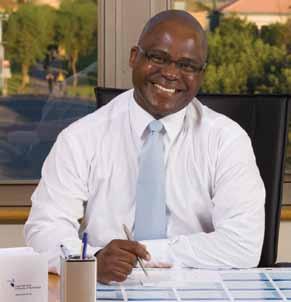
It is indeed my great pleasure to share some thoughts about the Cape Peninsula university of Technology (CPuT) 2015 Annual Research Report.
The 2015 academic year was a challenging one for the entire higher education sector in South Africa due to the #FeesMustFall movement. The research community was indeed affected and so were the postgraduate students. however, there are gratifying experiences and good stories to tell about how we succeeded in the midst of these challenges. The annual Research Report provides a platform to look back and reflect about our contribution as an institution to the South African National System of Innovation (SANSI) and the broader knowledgeeconomy.
It was humbling to see our researchers toiling against all odds for months to produce satisfactory research output and bettering the records we set
ourselves in the past years. It was also a year in which we bade farewell to our Director of Research, Dr Tembeka Mpako-Ntusi, due to retirement. her sterling role and contribution to CPuT research system will forever be cherished. It is a matter of great pride for me and a special tribute to the dedication and professionalism in which she served CPuT. In 2015 we also welcomed her successor Prof Dina Burger towards the end of the year.
our task is not to foresee the future, but to enable it.
(Antoine de saint-exupéry,1900–1944)
The 2015 annual Research Report tells a tale of achievement and resilience indicative of the fact that
there are no short cuts in research and innovation. The institution is committed to, supports and encourages scholarship. Our academics are always aware of the importance of research integrity when submitting their claims and are urged to focus on
quality research and not merely maximum accrual of subsidy funding. The graph below shows the DheT subsidised output from 2008 to 2015. It is clear that CPuT research is growing annually at a rapid rate.
Given this, and based on an assessment of our various pockets of excellence, CPuT has developed seven RTI Focus Areas:
1. Bio-economy and biotechnology
2. Space science and technology
3. energy
4. Climate change and environment
5. human and social dynamics, including issues related to service delivery
6. economic growth and international competitiveness
7. Design for sustainability
The strategic pillars of the RTI Blueprint are:
• Excellence
• Strategic partnerships
• Unlocking staff and student potential
• Service and research uptake
• Multidisciplinary RTI focus areas
In 2012, CPuT adopted a long-term strategy to advance its Research and Technology-Innovation (RTI) mission. The strategy has been aligned with key priorities of South Africa and Africa –including the DST Grand Challenges, the National Development Plan and the African union’s developmental goals. In adopting this strategy, CPuT committed itself to working within a triplehelix framework to support the eradication of unemployment, poverty and inequality. Thus, the DNA of our RTI strategy is that of Research uptake. In this regard, CPuT seeks to align its RTI effort with that of government, such that RTI outcomes flowing from CPuT do indeed make an impact on social and economic transformation.
Within the cross-cutting Focus Area Programme, we have made a considered decision to develop a RTI niche aligned with Operation Phakisa (Oceans e conomy). As part of our commitment to support government to advance the Oceans e conomy, CP u T has launched the very first Research Chair in the country in Oceans e conomy.
This report gives global insights and a total picture of the university’s overall performance in the above seven focus areas that underpin the Research Technology and Innovation (RTI) Blueprint.
CPuT’s RTIP Blueprint provides the strategic underpinning and operational framework for all RTI portfolios. In the RTI Blueprint, the driving force is the interdisciplinary expansion, breaking silos, which yields innovative and great results.
As an institution, we are indebted to our stakeholders both internal and external for their unwavering support. The Department of Science and Technology (DST), the National Research Foundation (NRF), the Department of Trade and Industry (DTI), the Department of higher education and Training (DheT), and many international partners and networks are all greatly thanked for their support.
It is therefore my great pleasure to present CPuT’s 2015 annual Research Report. I wish to thank all our researchers, faculties, library, Cape higher education Consortium (CheC), centres and institutes for the work well done amid a challenging 2015 academic year.
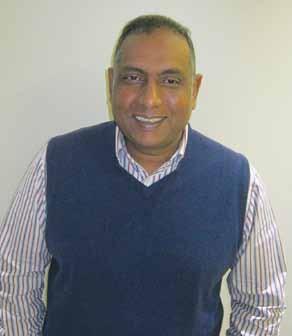
In I t IAt IV es A n D PAR tne R s HIP s (R t I- s IP)
P ROF Sh A u N PAT he R
2015 was a remarkable year in the history of higher education in post-apartheid South Africa. The stark reality of economic hardship within which universities operate is a reality with which we must contend.
The CHEC consortium comprises the four universities in the Western Cape – CPUT, UCT, UWC and Stellenbosch. CPUT’s DVC: RTIP, Dr Nhlapo, takes over from Prof Crain Soudien, UCT’s DVC: Transformation. The three-year appointment will allow Dr Nhlapo to play a key role in strengthening ties between the universities. “We want the four institutions to share their knowledge resources,” he says. From libraries to research equipment and facilities, Dr Nhlapo says collaboration between the institutions will benefit the development of the Western Cape. “The Western Cape is the intellectual hub of SA… We have to focus on how to harness this knowledge to the benefit of the Western Cape, as well as to the benefit of the rest of SA. This will only be possible if all institutions work together.”
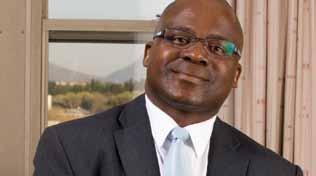
CHEC is the most successful higher education consortium in SA, and Dr Nhlapo’s extensive experience in the higher education sector will certainly add value to the consortium’s activities. “I’m excited about this role and will contribute to the foundation laid by my predecessors.”
This beckons us to deliver on our RTI mandate in ways which put the least pressure on the university’s operational budget. This calls for innovative management, and the development of strategic partnerships and initiatives which simultaneously achieve the CP u T mission and deliver on South Africa’s economic and social development needs.
Fortunately, the CP u T RTI Blueprint, our long term strategic plan, which has been the founding basis of this directorate, provides us with such a framework.
having overseen the development of a detailed RTI Blueprint implementation plan in November 2013, the RTI-SIP directorate continues to provide a caretaker role to ensure that activities and targets
remain on track. Over the course of 2015, two strategic planning workshops were facilitated with all stakeholders. This has ensured a strong alignment across the board, to ensure synergistic outcomes between our tactics, day to day operations and that of the long term RTI strategic objectives.
CPuT is currently well on its way to a more focused RTI project which spans our seven Focus Areas. The RTI-SIP directorate finalised the framing of the CPuT RTI Focus Areas programme in 2014 which provides the conceptual framework. having secured a special grant from Council in 2014 (R53.9m over five years), we implemented a rigorous grant call and adjudication process in 2015. At the time of reporting, six RTI niche-areas have been granted seed-funding, three RTI prestigious projects are underway, and two new research chairs have been established. In addition to this, the CPuT Focus Area task team has been established. This provides an oversight role and strategic direction for all focus areas. Importantly, across the university, RTI Niche Areas and associated projects are being documented, and these will be visible on a soon to be launched Focus Area website.
In the current era of higher education transformation, the university sector has been challenged to ensure that its knowledge outputs have a far greater impact on economic and social transformation than is currently the case. CPuT’s research uptake has been a key programme which has given us a singular advantage in ensuring we rise to this challenge. To this end, we must acknowledge the catalytic role of the Development Research uptake
in Sub-Saharan Africa programme (DRuSSA) of the Association of Commonwealth universities (ACu).
Over 2015, the CPuT RTI strategy and implementation plan was finalised (and was subsequently adopted by Senate in the first quarter of 2016). This is the framework for the RTI-SIP Directorate to create an enabling ecosystem to advance our uptake mission. This includes interalia: Creating a seamless trajectory from applied research to uptake; planning for the whole research cycle; institutional arrangements to support research uptake management; research uptake capacity development for staff; and a number of mechanisms to ensure research uptake is implemented at the project level.
effective science communication is one of the key sub-projects of the plan against which we have made substantive progress. In addition to hosting training workshops, our partnership with Conversation Africa has bolstered the visibility of CPuT’s research outcomes in the electronic and print media. To date, 35 CPuT articles have been published, which have amassed 177 311 reads in over 100 countries worldwide. We must acknowledge the ongoing support of CPuT’s Marketing & Communication Department in this regard.
Finally, CPuT also participated in the DRuSSA benchmarking survey in 2015 together with 22 other African universities. By all accounts, we are regarded as an exemplar insofar our research
uptake plans are concerned, and are thus continuously called upon to share our learnings with others.
In 2015, Prof Shaun Pather made presentations on research uptake at SARIMA, the DRuSSA short course series and at the World Travel Market Africa 2015.
The RTI-SIP directorate continues to play a leading role in identifying and fostering high level partnerships which serve to advance the RTI Focus Areas. Several high level partnerships were negotiated in 2015, and these will come into operation in 2016 to support emerging niche areas such as that of the Oceans economy. CPuT has also made significant strides in entrenching itself in the region through its role in the Cape higher education Consortium (CheC).
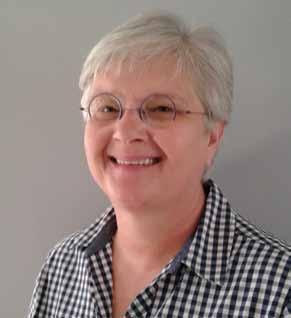
As the new Research Director, it is a great pleasure and privilege to present to the research community our annual Research Report. Since my appointment on 1 November 2015, I have benefitted from the good track-record of research administration and achievements inherited from my predecessor, Dr Tembeka Mpako-Ntusi, and her competent research team.
however, it has become clear that we need to usher in the next stage of development. We need to look afresh at our role and functions within the Research Directorate. We must ensure that we pave the way for accelerated research productivity across the institution in alignment with CPuT’s RTI Blueprint Strategy. We must play a more strategic role in directing the research future of our institution. At the centre of this lies the most important role of the Research Directorate, which is to strategically direct research whilst simultaneously rendering support, world-class service and advice to our research community.
I am pleased to report that our institution will henceforth begin positioning itself to become a research-led teaching university of technology.
Our research output expectations are being broadened, and we have improved the minimum research output expectations of our academic staff. We have introduced a one-cycle research grants management system to optimise our resources and
render better grants management services to our researchers. We have also established a Research Integrity Office within the Research Directorate, to ensure that CPuT’s research meets all ethical requirements. Our research training programme has been improved with the institution-wide adoption of a research coaching and mentoring approach to all research development endeavours. A new accredited supervision programme is also being adopted to ensure that our postgraduate students benefit from highly trained supervisors across the institution.
Although this was a very challenging year, with specific mention of the proliferation of student unrest, we are extremely pleased that the institution continues its upward trajectory and exponential growth. This is especially in the areas of research output, attracting successful research grants, improving the number of NRF rated researchers and our Research Chairs initiative. We are also beginning to see the benefits of deliberately improving the qualifications of our academic staff, and of specifically measuring these benefits against their performance in the above mentioned areas of improvement.
Working closely with the DVC: Research, Technology Innovation & Partnerships, Dr Chris Nhlapo, we continue to pursue the RTI capacitybuilding programme in order to realise the strategic objectives of its blueprint. Improving communication links with the CPuT research community, nurturing relationships with the DheT and NRF, and driving
beyond, we have also recognised that within our own ranks we need to shift gear, re-committing ourselves as a research team to live up to this bold vision. I am very proud to say that the Research Directorate is a service-orientated team of research professionals who pride ourselves in supporting CPuT’s research community with enthusiasm and to the best of our abilities at all times.
improved research through capacity-building workshops by external service providers continue to be at the forefront of our mandate as a research support facility. By approaching CPuT’s research endeavour with new eyes, working towards service excellence through continual improvement, and growing with the demands of an expanding research institution, we are making a concerted effort to reinvigorate the Research Directorate with performance measures as laid out by the Quality Improvement Plan (QIP).
In our quest to envision a world-class Research Directorate, leading and supporting our researchers to become recognised in producing cutting-edge research on issues of concern to South Africa and
All of the above could not be achieved without the support and encouragement of our leaders. I therefore wish to thank Dr Chris Nhlapo for his exceptional leadership of our Research Directorate and research community at all times. I also wish to thank the broader academic leadership of the institution for assisting us during a time of challenges, change and achievements. Most importantly, we wish to thank each researcher for their scholarly contribution by contributing cutting-edge innovative research of the highest quality and standards. We celebrate your research success and wish to assure you that we will continue to improve our service and support of you in your research careers going forward.
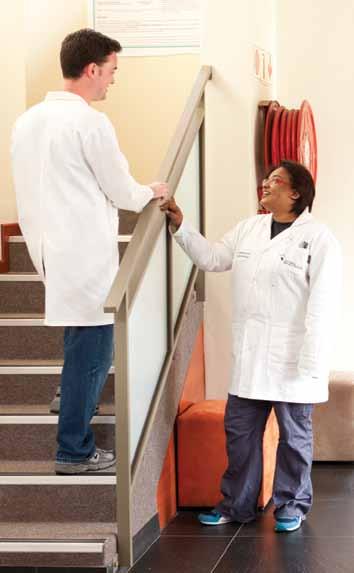
our institution will henceforth begin to position itself to become a research-lead teaching university of technology.
The Centre for Postgraduate Studies (CPGS) has established processes in order to offer a seamless service to registered postgraduate students and postdoctoral fellows.
The centre manages the administration of postgraduate students and oversees the academic involvement of postdoctoral fellows. It also administers the DST-NRF internship programme and manages some BTech student bursaries.
During 2015, 1 199 master’s students, 215 doctoral students, 18 interns and 22 postdoctoral fellows were registered. A total of 22 students graduated with a doctoral degree and 159 graduated with a master’s degree.
Higher Degrees Committee (HDC): The CPGS coordinates all the activities of the hDC. These include interaction with the faculty research coordinators with respect to hDC documents, preparation of hDC meeting agendas and submission of hDC approved documents to Senate.
The hDC is a committee of Senate and makes recommendations to Senate on matters related to postgraduate studies and student progression. With the phasing out of a paper-based system, the hDC digital system is in its second year of operation, and served approximately 1 800 users during 2015.
Postgraduate students’ forum: The CPGS hosts this forum, which is open to all CPuT students and staff that are active in postgraduate research.
The forum, though at a developmental stage, enables the CPGS to oversee the personal and academic development of the postgraduate student community as emerging researchers.
Postgraduate bursaries: Numerous students were supported with bursaries from various sources to a total value of R15 576 657.
Postdoctoral fellowships: A total of 22 postdoctoral fellows were hosted in CPuT’s various research units, to a total cost of R 4 300 000.
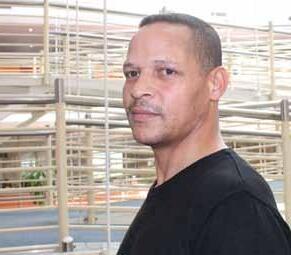
Seminars and workshops: The centre organised several research development workshops and seminars during 2015. Postgraduate students (and to some extent academic staff/supervisors) participated actively in these. The highlights of the
events included proposal writing, research design and research methodology, statistical data analysis, article writing and the use of plagiarism detection software (Turn-it-in).
Postgraduate welcome: A welcome session was held on the Cape Town and Bellville campuses soon after close of registration in June. In this session, presentations were made to postgraduate students about the facilities available at CPuT, in particular the hDC digital system.
Postgraduate conference: The annual oneday postgraduate research conference was not held in November due to student unrest. however, 99 submissions were received and 29 oral presentations were selected. The booklet could not be printed.
Software and research support: During 2015, the centre offered software support as well as qualitative and quantitative research support to students and staff. user licenses for the software managed by the centre (Atlas. ti, SPSS, STATISTICA and Turn-it-in) were made available to staff and students. Some of the software has been installed on selected desktops in the two research information support centres (RISC).
Supervision: In 2015, the centre enrolled 21 supervisors for the Strengthening Doctoral Supervision course offered by Rhodes university and funded by NuFFIC; 16 of these supervisors have been issued with certificates for having completed the course.
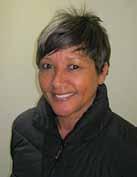
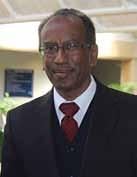
Dr Vincent Bosman, from the Department of Further Education and Training, and Prof Rozenda Hendrickse, from the Department of Public Management, were among the 26 academics from 18 public higher education institutions who attended the recent PostgradForumSA’s inaugural meeting at the University of the Free State’s (UFS) Postgraduate School in Bloemfontein.
The establishment of the forum, the forerunner for a council, is the brainchild of Dr Henriette van den Berg, Director of the Postgraduate School, UFS. She says, “The pressure to expand the postgraduate cohorts at universities necessitates a strategic focus on the role of postgraduate centres/schools and how they can play a role in developing good practice frameworks for postgraduate education in SA.”
She added that international examples of councils of graduate schools such as the US Council of Graduate Schools, UK Council of Graduate Education and DDOGS Australia testify to the important contribution of these governing bodies in the promotion of graduate education in the respective countries, through engagement with academic and government stakeholders, benchmarking of graduate education processes, development of good practice initiatives that address common challenges of graduate schools, and advocacy for graduate education.
Four areas of interest to promote the quality of postgraduate education and support postgraduate students were identified at the meeting as advocacy, supervision, student success, scholarship and joint ventures.
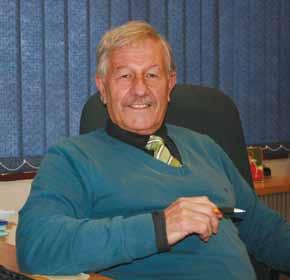
universities create knowledge through research and development and publish their contributions. Their authors are “traditional academics” who enrich society through knowledge creation. however, in the modern world, more is needed to help humanity meet its growing need and demand for solving real-world problems. What is needed is knowledge exploitation or invention and innovation – the process of turning new ideas into commercialised products and/or services.
universities thus need a proportion of new academics – staff and/or students who are inventors and are able to lead innovation projects. They bring about novel intellectual property (IP) thinking. There are volumes of published information read in most by only those related to the topic, while innovations can reach communities at large through the process of technology transfer.
CPuT and iys Technology Transfer Office (TTO) have taken giant innovation strides in 2015 resulting from the fostering of new academics and collaborations
with heIs, industry partners, local and national government, government entities, the Technology Innovation Agency (TIA), the National Intellectual Property Management Office (NIPMO), SMes, etc.
This, combined with a commitment to incubation, spin-outs and entrepreneurship across the university has offered advantages to our students, staff, faculties, departments, research units, technology stations, etc.
The TTO vigorously encourages technology transfer and specialises in the promotion and facilitation thereof. The TTO provides expert support and assistance to researchers, innovators and inventors during contract consultations, patent filings and applications, technology transfer of IP, and project management.
The TTO is one of the leading operations nationally and is staffed with a highly competent technology transfer team including a Director, Contract Manager, Business Manager, Contract Officer, Innovation Co-ordinator, TTO Officer and a Finance Officer, who together have made 2015 a memorable innovative year.
The year started off with the TTO demonstrating a number of its innovative products at the DST/
NIPMO National Innovation Bridge, which was held in January in Pretoria and attended by many stakeholders.

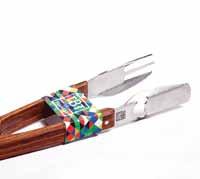
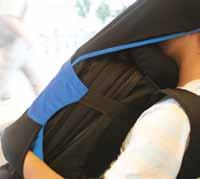
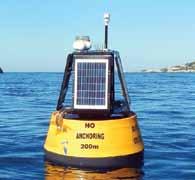
Being a university of technology, our exhibit stood out as we demonstrated many products that were ready for the market. These included our Flow Process product, Omega Caro-e capsules, SnugPack, our innovative braai tool, a computer heightening stand, and our Satellite Cubesats with associated receivers and antennas.
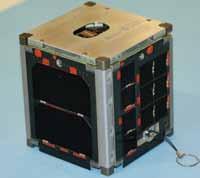

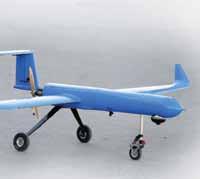

In August, to celebrate CPuTs 10 year existence, the TTO (now 5 years old) hosted an Innovation Showcase, the first TTO in SA to do so. TTOs are new offices established in terms of the 2009 IPR Act. They are tasked to evaluate and patent protect inventions and take them beyond proof of concept to technology readiness levels ready for the market.



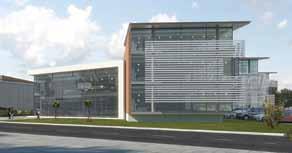
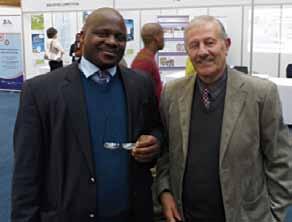
The showcase was attended by many from heIs, SMes, Government, TIA, and venture capitalists. Organised by CPuT’s Marketing & Communications Department, the event was a resounding media success, receiving TV and radio coverage worth millions in exposure.
healing underpants (which won a national prize, trademarked as uyindoda) and our innovative solar tracking device. CPuT now has more than 40 patent applications spanning across the globe. TIA is playing a major role in supporting CPuT achieve its innovation goals by providing seed funding to develop useful prototypes.
Business incubators play a huge role in the process, with new academics receiving development into business skills. Our annual student innovation competition generates many new ideas, products and services that can lead to enterprises through the incubation process. The TTO completed a feasibility plan for a large incubator at CPuT and is pursuing funding to bring it to a reality in 2016.
From saving the world to keeping heart disease at bay, CPUT has the solution to numerous everyday problems. Thanks to staff and students who are able to think out-of-the-box, the university hosted its inaugural Innovation Showcase in August on the Bellville campus.
The showcase celebrated the innovative efforts of the CPUT community and afforded the public, investors, business people, product scouts, government officials and media the opportunity to interact with inventors and see how CPUT is changing the world. The event was hosted by the TTO and showcased 35 innovative products, most of which are either patent or trademark protected.
The more than 30 innovative products on show included: an unmanned aerial vehicles (uAVs), a Flow Viz real-time measurement device, a modular coastal buoy, a CubeSat, the magnetic hinged braai tool, the bambara nut beverage, a travelling resting comfort accessory, a cookable food processing device for disabled persons and our health and wellness Omega Caro-e food supplement.
During 2015, the TTO together with inventors filed further patents: CPuT’s circumcision
Technology transfer is the future for our country, helping our communities to grow through job creation. The TTO strives to produce future employers rather than employees, and is committed to be at the heart of technology education and innovation in SA.
The TTO’s Contracts Manager, Mr Marlin Fransman, has returned from an academic residency in Colorado, a programme under the Colorado Department of Higher Education. The programme is part of the EducationUSA Leadership Institute for which Mr Fransman was selected by the Department of State, Bureau of Educational and Cultural Affairs and the Institute of International Education in December last year.
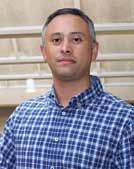
The EducationUSA Leadership Institute is a new initiative to increase the participants’ understanding of the American higher education system and provide them with an opportunity to engage with the sector in effective and sustainable ways. The leadership institute included virtual training webinars in January, a three-day orientation in Washington DC in February and an 11-day academic residency in Colorado. The residency was followed by additional virtual training sessions.
Participants in the leadership institute came from countries such as India, Bangladesh, Mexico, Philippines, Ghana, Columbia, Vietnam and Brazil. “I am extremely grateful for the opportunity and it was an honour and privilege to be selected to participate in the inaugural EducationUSA Leadership Institute,” says Mr Fransman. The institute focuses on exploring collaboration between higher education and industry around curriculum development, workforce development, research, development and innovation and learning about the USA’s higher education in general.
Mr Fransman says, “I visited various universities and community colleges in Colorado and had the opportunity to speak to a number of educators regarding these topics… I believe that my participation in this leadership institute will allow me to make a meaningful and positive contribution to CPUT and the community.”
On 1 January 2015, CPUT turned 10 years old, and staff and students received an open invitation to join in a whole year of birthday celebrations. From cutting the cake by the VC, Dr Prins Nevhutalu, to singing happy birthday, the official launch of the year-long birthday festivities started on the front lawn of the Bellville campus.
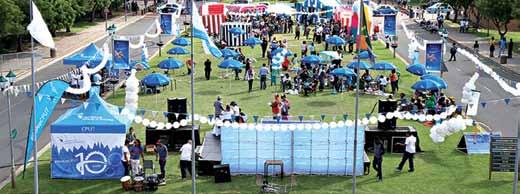
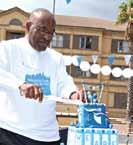
The Marketing & Communication Department and interdepartmental collaborators, planned a series of We Are CPUT events throughout the year, which focussed on unique innovations and trends set by the institution over the last decade. From collecting school shoes for learners and blankets for the needy, to participating in the CANSA Shavathon, staff were urged to do their bit as part of the CPUT Gives Back Campaign to change the lives of local communities.
From its humble beginnings in 2005, when the Cape Technikon and Peninsula Technikon merged, CPUT is now the only university of technology in the Western Cape and the largest university in the region. It has more than 30 000 students, several campuses and offers over 70 programmes.
The Advancement Department encapsulated everyone’s sentiment when they said, “With pride, gratitude and high hopes for the future –here’s to the next decade of CPUT!”
CPUT might be celebrating its 10th birthday this year, but the institution, born out of a merger, has a rich history, dating back to the early 1900s. To preserve this legacy, the institution has established the Records Centre and Archives on its Bellville campus. The doors to the centre were officially opened on 23 September 2015, and the celebrations coincided with Heritage Day. Guest speaker at the event, Prof Karen Harris, commended CPUT for establishing the Records Centre and Archives.
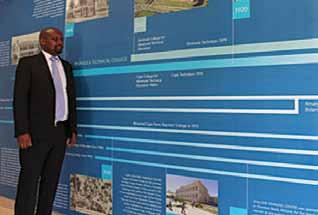
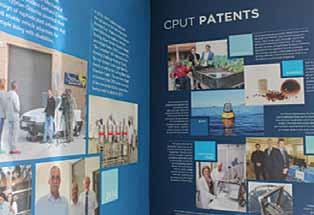


Prof Harris, who is in charge of the University of Pretoria Archives, says it’s important for institutions to record the past and do it correctly. “An archive is the soul of any institution and that is how we should treat it.” She added, “An archive is not just about dusty old documents, but it is a place where staff’s and students’ memories of an institution can be recorded.” Prof Harris says universities are changing places, and it’s the role of such centres to capture these changes, which can range from collecting building photographs to illustrate the architectural changes to maps. “We have to collect everything that we can.”
VC, Dr Prins Nevhutalu, says he is committed to supporting the activities of the Records Centre and Archives. “This project is at the heart of the university.” Dr Nevhutalu says apart from ensuring CPUT complies with legislation, the centre will also play a key role in preserving CPUT history and establishing traditions at the university.
From publishing research papers to embarking on innovative studies, CPuT researchers have once again made the institution proud. Their efforts have not gone unnoticed, and the university planned to celebrate their activities at the annual Research Day. unfortunately, student unrest prevented the event from taking place.
We still congratulate the following top researchers:
aWaRD ReCIPIeNT FaCUlTy/ UNIT
Platinum Dr JA Fapohunda engineering
gold Dr MN Davids education
silver Prof Te Matsha health & Wellness Sciences
silver Prof CG Iwu Business & Management Sciences
bronze Dr AK Raji engineering
bronze Prof ZC Sosibo education
aWaRD ReCIPIeNT FaCUlTy/ UNIT
Platinum Prof I Masalova engineering
Platinum Prof MTe Kahn engineering
gold Prof R Chetty education
gold Prof R Tzoneva engineering
silver Dr B Makwambeni Informatics & Design
bronze Prof MK M’Rithaa Informatics & Design
aWaRD ReCIPIeNT FaCUlTy/ UNIT
Platinum Prof A Lagardien Centre for Water Supply & Sanitation Research
gold Prof Te Matsha health & Wellness Sciences
silver Prof R Tzoneva engineering
bronze Dr JF Alberts Institute of Biomedical & Microbial Biotechnology
cost of these posts for the first three years, and thereafter to a diminishing proportion. From the seventh year onwards, the costs of the posts will be covered by the institutions. During the initial six year period, the nGap scholars must complete their doctorate degree, and undertake a range of staff development programmes. Universities have been invited to apply for these 200 posts, and Prof Staak is one of the five members of the panel set up by the DHET to review the applications.
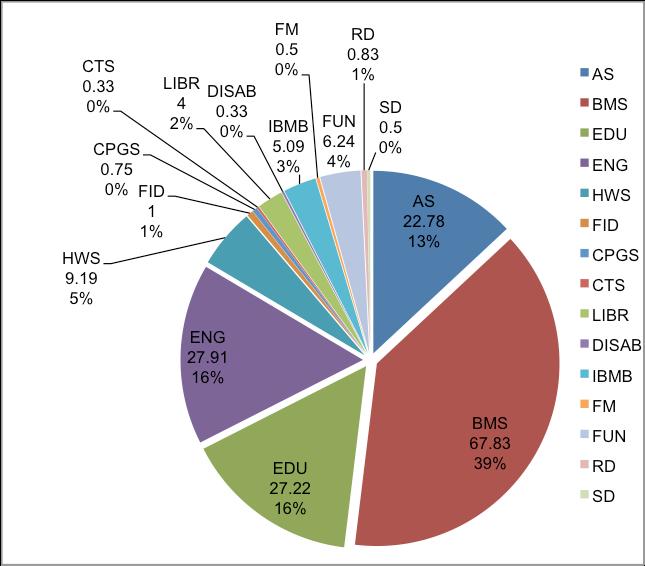
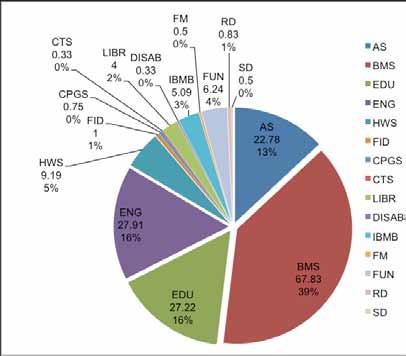
Prof Anthony Staak has been nominated as one of HESA’s representatives on the DHET Review Committee for nGAP. The nGAP is the New Generation of Academics Programme. He describes the nGAP as “a bold initiative of the DHET to address the challenges that universities are currently facing with respect to the size, composition and capacity of their academic staff. The higher education sector has an aging workforce that does not reflect the demographics of this country. This is particularly the case among research staff, where there is also a general lack of research capacity”.
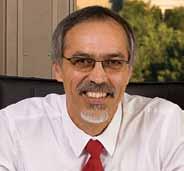
The nGAP initiative has made 200 posts available to the sector this year, which it will fund for a period of six years. The DHET will cover the full
Prof Staak has served on various Department of Education (DoE) and DHET task teams including the DoE Task Team on State Funding for Experiential Learning and the DoE Task Team to review Teaching Development Grant funding. Most recently, he served on the HESA Task Team on the Post School System. He was previously a member of the Research Strategy Group of HESA, the Doctoral Task Team of the Council on Higher Education (CHE) and a member of the CHE task team undertaking a 20-year review of South African Higher Education. Prof Staak is also currently serving as a member of the Teaching and Learning Strategy Group of HESA and the DHET reference group for HEQSF aligned qualifications.
The NRF is a national agency for research support and promotion. In addition to funding, human resource development and the provision of research facilities, the NRF annually invites researchers in all academic fields to apply for individual ratings.
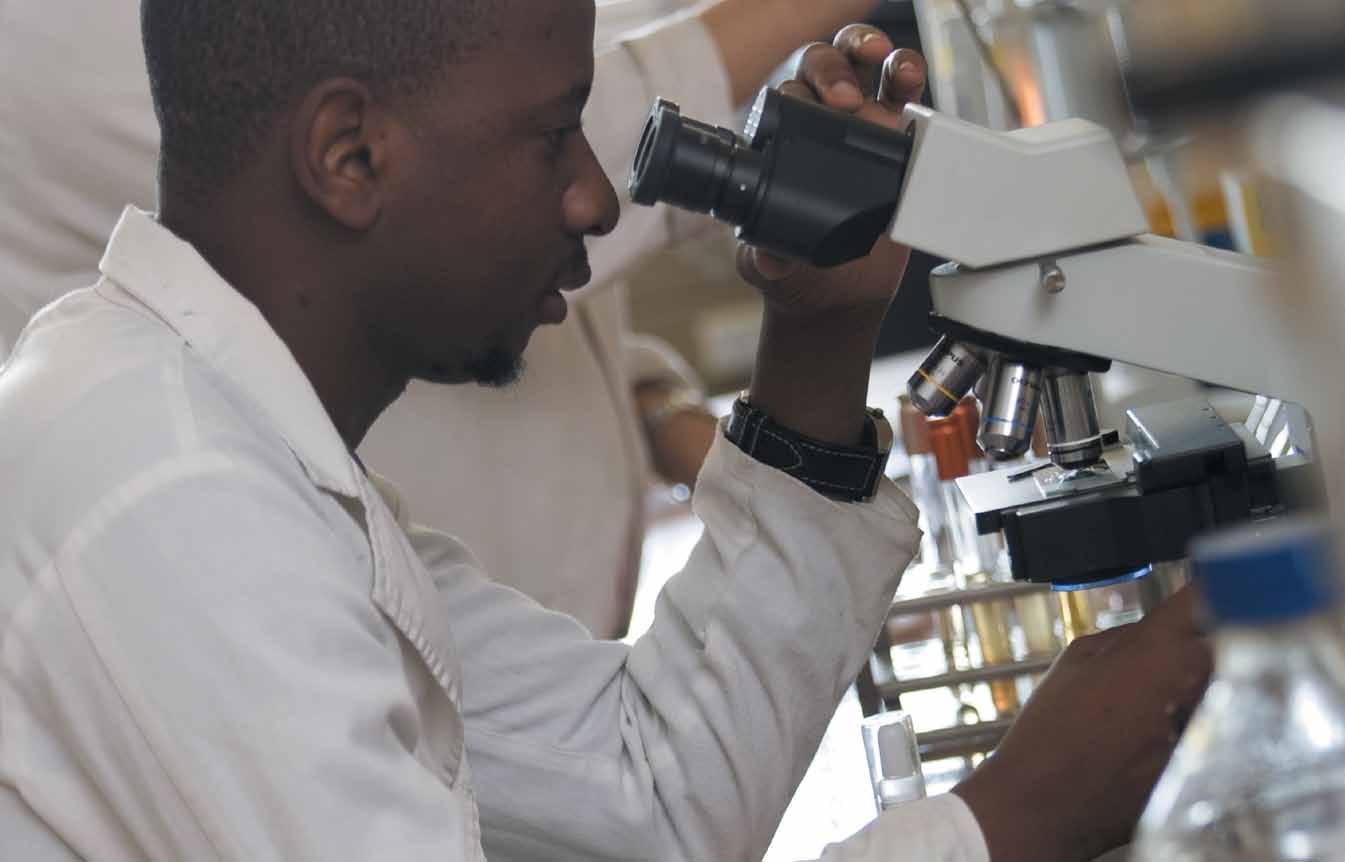
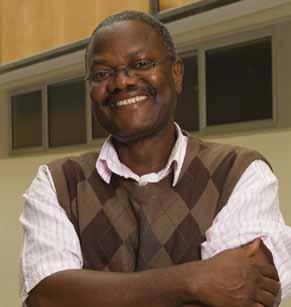
The Faculty of Applied Sciences’ vision is to be the faculty of choice in science and technology, both nationally and throughout the rest of Africa. This is aligned with CP u T’s vision to be at the heart of technology education and innovation in Africa.
The faculty strives to:
• promote quality in the delivery of its academic programmes, and improve the graduation and success rates of its students;
• improve the quality and profile of its academic staff, and increase the number of its permanent academic staff in order to further improve the quality of teaching and learning of all academic programmes offered;
• improve the quality of its undergraduate students, increase their enrolment and graduation rates, and adequately prepare them for the world of work;
• promote a research and innovation culture, and increase research outputs of its academic staff;
• increase the enrolment of graduate students, particularly DTechs, and substantially increase their graduation rate;
• substantially increase the number of community engagement projects;
• increase the number of research linkages and partnerships locally, regionally, and internationally, especially in Africa;
• promote equity (including equitable access to undergraduate and postgraduate education) and diversity, and create and sustain a general
enabling environment for all faculty staff to pursue the core academic business of the faculty.
Twelve of our students completed their Magister Technologiae (MTech) degrees this year.
The faculty’s six research units discuss their highlights for 2015 in individual reports below.
I would like to thank all staff and students in the faculty who have contributed to making a success of the 2015 research year.
our vision is to be the faculty of choice in science and technology, both nationally and throughout the rest of Africa.
which cost R2 million, will be incorporated into the new development. The facility will also include modern lecture rooms, conference facilities, laboratories and greenhouses.
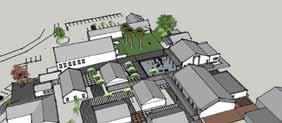
Changes in climate and the ever increasing demand for freshwater resources are having an impact on groundwater resources in SA. This is the stark reality that hydrological expert and award-winning researcher Dr Gaathier Mahed plans to spend the next two years exploring.
Dr Mahed, who is based in the Department of Environmental and Occupational Studies, is one of several CPUT researchers who have been awarded Research Innovation Niche Area funding. The funding is an initiative of the Office of the DVC: RTIP, and aims to develop and grow research in several focus areas identified by CPUT.
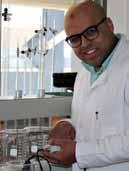
CPUT plans to become the nucleus of agricultural teaching and development in the Cape Winelands.
To assist in the realisation of this goal, a multimillion rand Agri-Hub is being constructed on the Wellington campus. The Agri-Hub will house the Agriculture Department along with a vineyard, fruit orchards, vegetable fields and a livestock husbandry training facility. The existing wine cellar, funded by the DHET,
The department’s Dr Francois Lategan says the AgriHub will prepare students well for industry, providing them with a hands-on learning experience and that “they will experience the atmosphere of agriculture every day”. Apart from ensuring a first-class teaching and learning experience for CPUT students, Dr Lategan says the new facility will also play a key role in developing closer ties between CPUT and the local, national and international agricultural sector, which will see them collaborate on capacity building programmes and joint research projects. “Aspects of these collaborative programmes are already functional at local and international levels and these new facilities will just enhance the competitiveness and attractiveness of the programmes offered at the Wellington campus.”
His study falls under the university’s climate change focus area, which has been identified as a key area to ensure environmental sustainability. He says the study is important for long-term understanding of available and future groundwater resources. “Currently 80% of small towns in the Karoo use groundwater. The sad part is that most municipalities don’t employ groundwater specialists,” he says. Lack of proper planning coupled with random and excessive pumping of groundwater will dry up resources and could lead to land subsidence, which will impact negatively on communities.
Dr Mahed will conduct the research along with CPUT students from the fields of Chemical, Electrical and Civil Engineering. His outstanding research activities in the area of hydrogeology have earned him top accolades over the past few years, including being voted one of the “Brightest Young Minds in SA” and being selected by Mail & Guardian as one of the “Top 200 Young South Africans to Take to Lunch”.
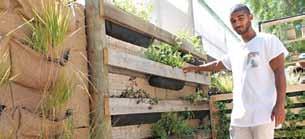
Landscape Technology students created eye-catching vertical gardens in their department’s courtyard earlier this year.
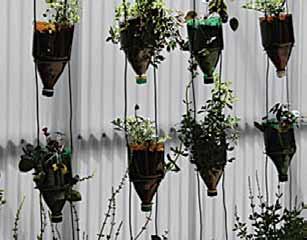
This group project was sponsored by the Horticulture Department, and students made use of a wide variety of materials in the construction of the various designs.
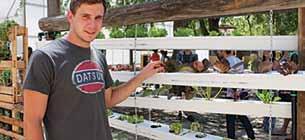
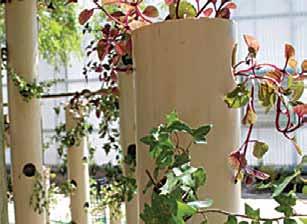
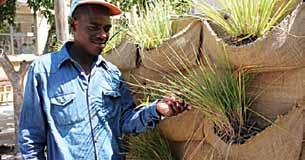
President of the Institute for Landscape Architecture in South Africa, Ms Antoinette Raimond, visited CPUT to evaluate the vertical gardens. Ms Raimond, a CPUT alumna, was impressed with the students’ work and said, “I think it’s fantastic that students have an opportunity to do an installation like this. There are some really interesting and successful designs”.
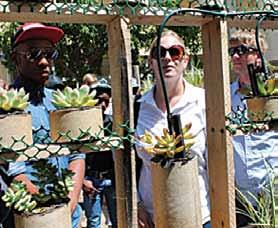
Dr Nikoletta Bathori has developed the Early Explorer Project, an innovative programme that exposes undergraduate Chemistry students to research and provides them with an opportunity to work alongside skilled academics in a laboratory. The project aims to captivate the interest of young students and influence them towards a career in research.
Dr Bathori, who is a researcher at CPUT’s Crystal Engineering Unit, says the project was conceived after she visited Georgetown University (USA). The university promotes science by opening its laboratories to high school students during holidays.
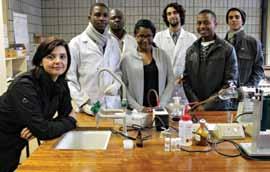
The Early Explorer Project began in 2013 and has proved to be an overwhelming success. “Last year I had three students and all three did exceptionally well and are now planning to do master’s and doctoral degrees. One of the students got the Dean’s medal and two of them won the Science Idols.”
Earth Hour is an annual global campaign aimed at raising awareness around climate change. The campaign urges people to turn off their lights for an hour from 20:30 to 21:30 on the last Saturday of March, as a gesture of concern about the devastating consequences of climate change. It also encourages them to initiate projects to raise awareness around this issue.
Mr Gerhard Griesel, Landscape Technology lecturer, asked his students to initiate an Earth Hour Awareness project this year. He encouraged them to involve other students as well. The group decided to plant trees to offset the carbon footprint of computers used in their department’s laboratory. They determined that approximately 750 trees would need to be planted in order to offset their carbon footprint, and began by planting several trees around the Landscape Technology building, going on to plant
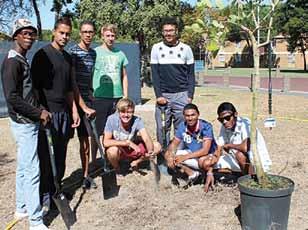
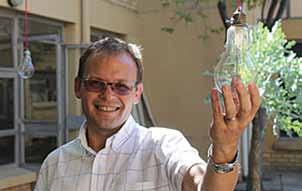
more trees elsewhere throughout the year. The group also produced a light installation in the department’s courtyard and hung globes from trees to signify sustainability.
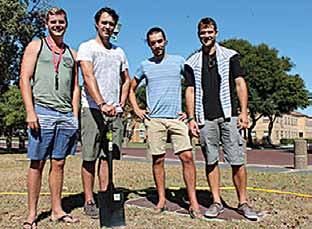
CPUT’s Chemistry Department recently became the proud owners of a sought after device: a Differential Scanning Calorimeter. This high-tech piece of equipment, which cost R450 000, is key to chemistry research, allowing researchers to conduct processes such as identifying compounds and exploring how they behave thermally.
Dr Nikoletta Bathori says understanding how compounds behave under various conditions is key to many of the research projects undertaken by researchers in the department.
The Office of the DVC: RTIP, Dr Chris Nhlapo, has given R400 000 towards this equipment, and the additional R50 000 came from the Chemistry Department itself.
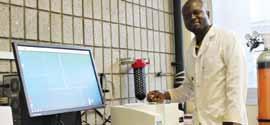
Although based in the Chemistry Department, Dr Bathori says the device is not restricted to the sole study of chemistry, but can be applied to research work conducted in various other disciplines, such as engineering. She says through sharing research equipment, they are hopeful that interdepartmental research projects will be established.
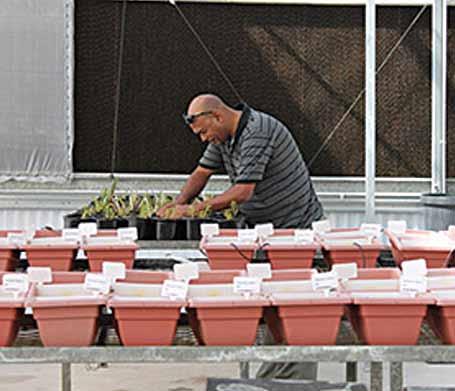
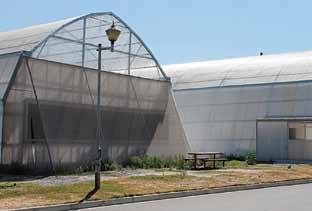
Finishing touches were added to CPUT’s new high-tech greenhouses late last year, and the buildings were opened to students of the Department of Horticultural Sciences in March this year. Constructed at the nursery premises on the Bellville campus, the greenhouses are a welcome addition to the department, the only in the Western Cape to offer a course that focuses specifically on ornamental horticulture.
Head of the programme, Dr Chris Daniels, says the greenhouses will play a central role in practical teaching and learning activities and serve as the department’s laboratories. “These are state of the art, world class facilities and all systems are on par with national and industry requirements,” he says. The greenhouses have systems for automatic heating and cooling, rainwater harvesting, artificial lighting and propagation, as well as automatic solar screens and sterile foot baths.
Each greenhouse cost just over R700 000, with the biggest greenhouse measuring over 270 square meters. Dr Daniels says each of the greenhouses have a specific function, with two dedicated for research, while the other four will be utilised by undergraduate students for various propagation and cultivation processes. The one in the courtyard of the Design Building is the display greenhouse, and will specifically focus on plant identification. This greenhouse contains four automatic, independently controlled climatic zones and will display plants from different biomes in SA.
“The Department of Horticultural Sciences is proud to have these state-of-the-art world class facilities, to give our undergraduate and postgraduate students possibly the best horticultural experience in the country,” says Dr Daniels.
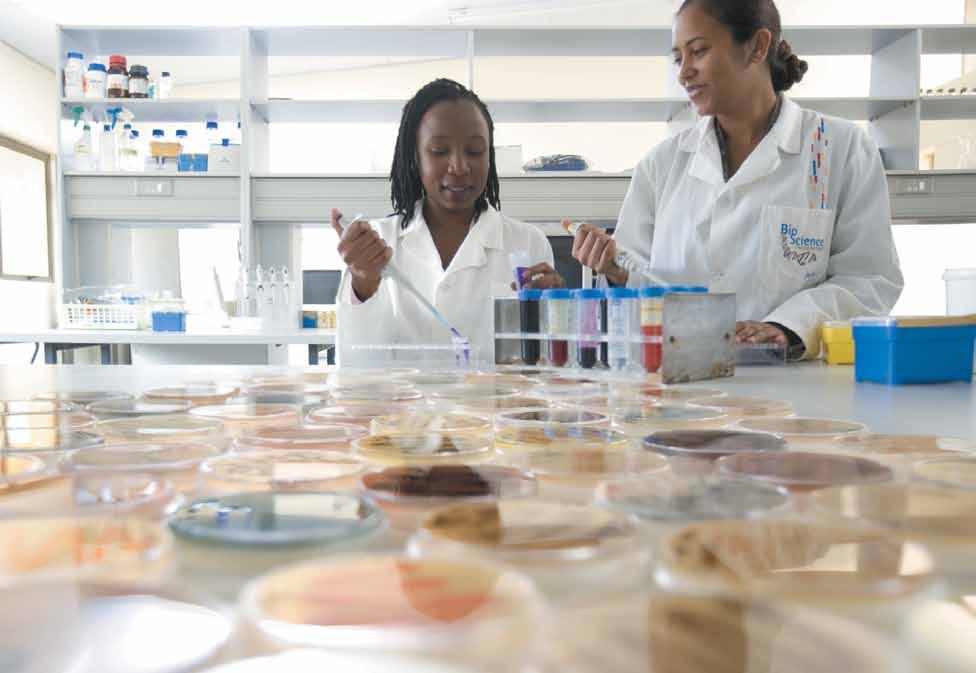
The ATS is a platform that provides a range of interdisciplinary technological services to the agrifood sector, focusing on existing smaller and medium enterprises, with a view to improving competitiveness, innovation, and research and development capacity in a sustainable manner. It is funded by the TIA, an initiative of the DST. ATS is located on the Bellville campus, and includes a pilot plant with various processing areas, general and cold stores, and a number of laboratories.
During 2015, the station operated in a slightly constrained financial environment, which compelled it to take a closer look at its cost recovery and ways to increase this without disadvantaging the SMMes that it services.
Mr Larry Dolley dolleyl@cput.ac.za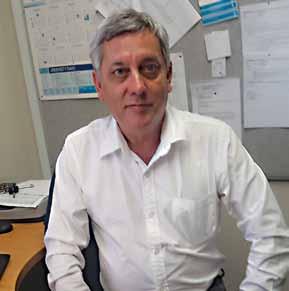
Staff development remains an important aspect of the station’s mandate, hence permanent staff members partake in a range of formal and informal training interventions, for instance, our Senior Technologist registered for a PhD in
Analytical Chemistry (at CPuT) this year. Two staff members are engaged with master’s studies. Five interns were resident in the station for the year. This arm of the station has proven to be an invaluable tool for polishing the rough edges of new graduates. The four Technical Assistants employed here add further valuable skills as they completed their master’s’ studies. One of the four recently left us to undertake a PhD study at Wageningen university (Netherlands) after serving the station for two years.
A number of ATS projects concern improving the use of newer technologies and developing processes which utilise old technology in new ways. One of these is the conversion of new raw materials to food grade ingredients using simple,
A number of Ats projects concern improving the use of newer technologies and developing processes which utilise old technology in new ways.
The Food Technology Department and the Agrifood Technology Station have embarked on a R24 million research project that will contribute to food security in SA. The research project involves collaboration between Blue Karoo Trust (a catfish farm in Graaff-Reinet), CPUT, and several departments at Stellenbosch, on the development of catfish products for human and animal consumption. The project is being funded by the Technology and Human Resources for Industry Programme (THRIP) and the Blue Karoo Trust.

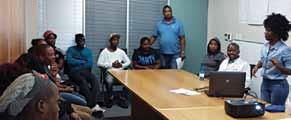
Ms Suné St Clair Henning from the Food Technology Department says the project is the largest of its kind to be undertaken on catfish and aquaculture in SA.
“We mainly eat marine fish such as hake and snoek. But our oceans are being depleted and we are now forced to look at other sources of fish,” she says. With
forecasts indicating a global increase in the demand for fish, aquaculture is recognised as a possible sustainable solution for food security. Ms St Clair Henning says CPUT will be involved in the development of product recipe variations for human consumption as well as the development of product variations for animal consumption.
Manager of the Agrifood Technology Station, Mr Larry Dolley, says they will also look at production, quality and food safety management systems. Besides exploring solutions for food sustainability, the project will also contribute to the training and development of postgraduate students who will be actively involved in the project over the next three years. In addition it will also lead to the creation of jobs in the Graaff-Reinet community with the expansion of the catfish farm to SA’s first large scale catfish production facility.
non-patented technologies. An example is an ongoing seaweed project which will be funded next year under a contracted agreement with an SMMe. embedded in this process is the use of such cases toward training, such as the kelp project, which will be used for New Product Development training of students in the coming year. Coupled with this, is the concept of conducting small production runs with clients who either have no production facility or whose production capacity is very small. Three such projects have been established under contract.
To ensure that ATS provides a quality service for a wide range of interventions, we are looking to conduct independent external quality assurance processes in addition to those already conducted by the TIA.
During the year, a number of workshops and individual training interventions for industry were held. ATS’s
Workshop participants
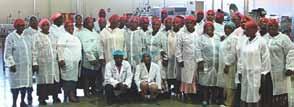
relationships with the united Khayelitsha Informal Trader’s Association and the Sinakho Leadership Support and Skills Development Centre have resulted in training into the next financial year. The station also exceeded its target as per the Service Level Agreement with TIA for the financial year.
Other significant achievements include the development of a registered design for a fish drying bin, an ongoing aquaculture project with Blue Karoo Trust, and the completion of a number of beverage projects.
A number of analytical techniques, including the quantification of oleorupein in olives and alginates in seaweed were also developed and validated. These are examples of niche analytical techniques not offered on a commercial basis in the country, hence ATS is servicing an important need. In a similar fashion, a significant number of postgraduate students from sister departments across the faculties have been supported with ATS expertise and equipment. This is in keeping with the TIA requirement for “reverse technology transfer” into the teaching domain.
Overall, with the uptake of significant projects (monetary and innovation content), the station is on a good trajectory in terms of meeting targets within a constrained budget scenario. Additional staff to be appointed in the new year include a postdoctoral fellow and a researcher to generate peer reviewed outputs in addition to other non-publishable technical reports for SMMes. This will also assist in injecting more innovation into project outcomes.
The potential of the Bambara nut is being explored by Ms Claudine Diedericks, a technical assistant at the Agrifood Technology Station at CPUT, who graduated earlier this year with a master’s in Food Technology under the supervision of Prof Victoria Jideani.
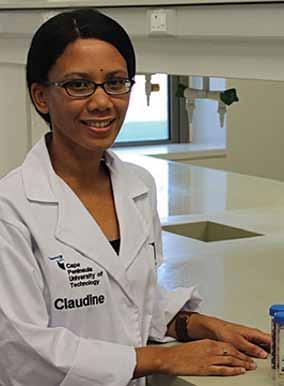
Although widely grown in Africa and easily available, the Bambara nut is an underutilised food crop. However, Ms Diedericks, who explores the insoluble and the soluble dietary fibres of four variants of the Bambara nut, hopes to change that perception. “It is grown as a subsistence crop and is still seen as not good enough. We want the food industry to realise the importance of the Bambara nut,” she says. “This legume has the potential to be used widely in the food industry.”
Ms Diedrericks’s research shows that the fibres have a high bulk density, which is significant when considering packaging options; the soluble fibres of the black-eye and red variants of the nut have the highest potential antioxidant activity; and the soluble fibres have a high fat absorption capacity, which is an important characteristic providing stability in high fat foods. The insoluble fibres were also incorporated in the manufacturing of white bread, resulting in the bread having softer crumbs than traditionally manufactured bread. Taste test results were positive, with participants opting for the bread with the Bambara nut fibres.
“If we can positively highlight the importance of the Bambara groundnut, then we can create many more products of value for consumers with far reaching consequences for the future of this crop,” says Ms Diedericks. She and Prof Jideani have filed a patent for the Bambara groundnut insoluble and soluble fibres.
Ms Diedericks will continue her research on the Bambara groundnut for her PhD at Wageningen University with a scholarship from the NRF.
A ground-breaking doctoral study will help improve the working conditions of bakers as well as safeguard their health. Dr Roslynn Baatjies, a researcher in the Department of Environmental and Occupational Studies, conducted an innovative intervention study on baker’s asthma amongst a group of 500 bakery workers in the Western Cape.
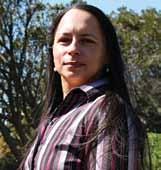
Studies have shown a trend in bakers developing allergies as well as baker’s asthma from exposure to flour. However, few researchers have studied this trend fully or embarked on intervention studies. Dr Baatjies, an expert in occupational allergies was prompted to further investigate this problem after Groote Schuur’s Occupational Medicine Clinic reported an increase in the number of cases of bakers suffering with allergies.
With the buy-in of a national supermarket chain, Dr Baatjies conducted research in 31 bakeries using specialised equipment. This study, the first of its kind in SA, found that bread bakers had the highest exposure to flour as well as the highest risk of developing allergies and bakers’ asthma.
The intervention included a training video on how to reduce flour dust. Bakers were advised to wear dust masks for high exposure tasks and to implement simple housekeeping rules in order to mitigate exposure in the workplace, including using a specially designed lid for the mixers. Dr Baatjies says that reassessment was done after a year, revealing a 50% reduction in dust levels and an 80% reduction in flour dust.
Thanks to Dr Baatjies’ innovative study, bakers’ risk of developing allergies or baker’s asthma is now much lower than before. “Lids are fixed on all the mixers and the training video is part of the induction… We want to make recommendations to the Department of Labour to implement a standard for flour dust that is more in line with international standards,” she says. “This is a way to change the working environment so that people can continue doing what they love to do.”
CPUT’s Food Technology students won several top prizes at competitions last year. This year, competitors were challenged to incorporate African plants in specialty ale. The team researched indigenous plants and consulted rastas, imams, and traditional and alternative healers to find out more about herbs and their individual properties.
According to lecturer Dr Zanephyn Keyser, competing nationally is a good marketing tool for the department’s diverse skill set, and the students put a lot of effort into their brews, namely, a lager, a cider and their unique Belgian Witbier called Tipsy Inyanga. The CPUT team were commended by judges for infusing the tricky buchu herb into their recipe as well as naartjie, sweet root, wheat and malt. Team captain, Brian
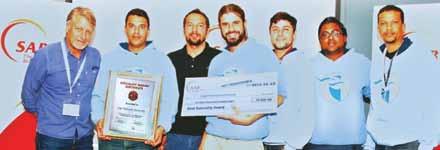
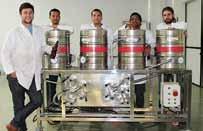
Gomes-Sebastiao, says they spent over 200 hours in the brewery refining the winning recipe.
This year, the students also won third place in both the Carling Black Label category and the Hansa Pilsner Most Refreshing Label for the Brewmaster’s Daughter and Tipsy Inyanga brews respectively.
Bioresource engineering is an interdisciplinary programme that integrates environmental studies, water studies, renewable resources, engineering design, material sciences and the biological sciences. In 2015, BioeRG saw further development in its activities, with Dr Vincent I Okudoh (head of the Biogas Research division) and Dr Richard Mundembe (head of the Plant Biotechnology division) further enhancing the research activities on Bambara groundnut at CPuT.
• The research group was awarded an NRF-DAFF Research Technology Fund award, with Dr Vincent Okudoh securing his first NRF Thuthuka grant
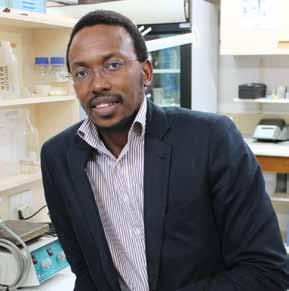 Prof Karabo S Ntwampe ntwampes@cput.ac.za
Prof Karabo S Ntwampe ntwampes@cput.ac.za
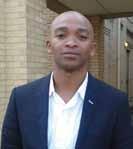
• A collaboration MoU was concluded with local company: Cape Town Cooldrink Pty Ltd
• Three of the group’s postgraduate students received the NRF Innovation Scholarship, with an additional student being awarded the ARC Professional Development Programme fellowship
• A record number of students completed their master’s degrees and decided to further their studies at doctoral level in BioeRG, increasing the number of doctoral candidates within
BioeRG to eleven, which resulted in an increase in the number of female trainees (60%) and women in engineering (50%)
• The researchers within group delivered six oral presentations at the 3rd Annual u6 Conference at Ilorin university in Nigeria, with other presentations at international conferences in the uSA, Serbia and France
Lukhanyo Mekuto, from Guguletu in the Western Cape, was awarded his master’s degree in Chemical engineering cum laude, with the research from his study being published in environmental Science and Pollution Research (IF = 2.97). he is currently pursuing his doctoral degree in Chemical engineering, with a focus on the reduction of cyanidation wastewater effects on the environment.
Lukhanyo Mekuto
In 2015, the group published three manuscripts, and delivered twelve papers at international conferences. The group hosts students who are registered in the Faculty of Applied Sciences and the Faculty of engineering.
The Bioresource Engineering Research Group (BioERG), created by Prof Seteno Ntwampe, is an interdisciplinary group of researchers and students focused on finding innovative solutions to everyday problems through environmental engineering. “We try to replace chemical processes with biological processes,” says Prof Ntwampe.
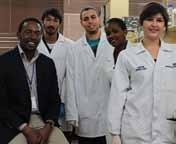
Projects range from exploring bio-friendly options for the treatment of water to finding chemical-free options for production processes in sectors ranging from mining to food production. The team is also involved in projects that look at innovative ways of turning waste, produced through environmentally-friendly processes, into something valuable.
Prof Ntwampe, who hails from the Biotechnology and Consumer Science Department, started the group five years ago and has steadily built the team, which comprises more than 30 members. There are 22 postgraduate students, of whom 8 are registered in doctoral programmes. There is also a postdoc, and several staff members hold doctorate qualifications.
The group also recently celebrated its first doctoral graduate, Olusola Solomon Amodu, who received his degree at this year’s Spring Graduation. “We also have associated members in the group from Zimbabwe, Botswana and Nigeria. They contribute to the group, either through conference or research papers,” says Prof Ntwampe. “Our focus now is to grow the group into a centre in the next five years. We also want to train more female students.”
The Crystal engineering unit conducts research in the field of solid crystalline inclusion compounds. Its main thrust is the understanding of the molecular recognition which occurs between molecules in the crystalline state. In particular, projects are aimed at understanding the various secondary interactions which lead to particular structures, and to correlate those with the macro-properties of the compounds under study. The crystal structures are elucidated by X-ray diffraction and the stability and energy of the materials formed are studied by thermal, optical and kinetic measurements.
Prof Luigi Nassimbeni nassimbenil@cput.ac.zaStaff members in the unit are Prof L Nassimbeni, Prof A Jacobs and Dr N Bathori. There are various DTech, MTech, BTech and WIL students completing their projects within the unit. The projects focus on supramolecular host-guest systems, the mechanism of enantiomeric resolution whereby left- and right-handed molecules are separated, and pharmaceutical co-crystals.
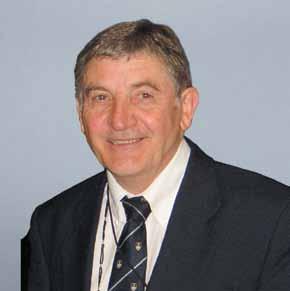
The focus of the environmental Toxicity & Remediation Research Group is to assess and monitor the state of pollution in aquatic and terrestrial environments in the greater Cape Town area. It also develops and evaluates appropriate remediation technologies in order to clean up the environment.
Various student research projects are ongoing. One of our master’s students is investigating the effect of metal interaction on bioaccumulation in a soil organism. Another is exploring the impact of copper contamination along the Cape Town coastal environment on gastropods and the value of these organisms in ecotoxicity studies.
Prof James Odendaal odendaalj@cput.ac.za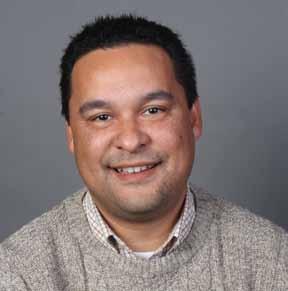
One of Prof Reinette Snyman’s doctoral students is completing an investigation into the use of biomarkers to assess the toxicity of selected metals on aquatic plants. There seems to be a relationship between metal exposure and the biomarker responses in these aquatic plants. The study has also revealed that this plant species shows potential to be used for phytoremediation of metal-contaminated freshwater systems. A further
doctoral study is investigating the effect of metals on soil invertebrates, lichens and mosses in pockets of forest found in the mountainous areas in and around Cape Town.
Dr Arnelia Paulse and Dr David Walker have initiated a study to investigate bacterial and metal contamination in one of the major estuaries in Cape Town. Dr Vanessa Jackson is, amongst others, supervising a master’s study dealing with metal and microbial contamination of agricultural soil and an associated river. Dr Conrad Sparks and Dr Rashieda Toefy also initiated a number of research projects dealing with, amongst others, the impact of tributyltin, an active ingredient in antifouling paint, on marine organisms.
the focus of the environmental toxicity & Remediation Research Group is to assess and monitor the state of pollution in aquatic and terrestrial environments in the greater Cape town area.
The aims of the FFRu are to translate results of research on essential fatty acids and micronutrients into new and improved functional food products or premixes with functional food characteristics for health promotion and disease prevention in South Africa. The newly developed products or premixes are converted into commercially useful end-products for the South African market.
• Omega Caro-E: Successful commercialisation; now available at Alpha Pharm and Clicks Pharmacies countrywide
Prof Spinney Benadé benades@cput.ac.za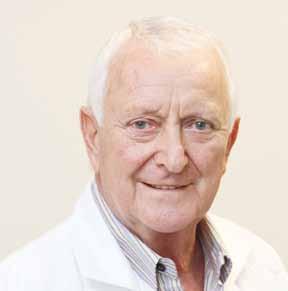
• FFRU laboratory income: We have been approached by several pharmaceutical companies to do fatty acid analysis on a regular basis; income from these sources is used for maintenance of the laboratory and to purchase small equipment
• External income: The Research and Innovation Grant provided R290 000 for further development of functional food products and ingredients
• Omega Caro-E: Filed in SA, applied in uSA, eu, Malaysia and Singapore; awaiting approval for international applications
• Omega Caro-E emulsion: Applied in SA, Malaysia and Singapore; awaiting approval for international applications
• National: Stellenbosch university’s Faculty of health Sciences and Department of Physiological Sciences; Cancer Association of SA (Cansa); Foundation for Alcohol Related Research
• International: Malaysian Palm Oil Board
• A new license agreement is being negotiated with Sozo Foods (Pty) Ltd
• Contract research is being done in collaboration with Cansa
• A research project involving pre-school children in the eastern Cape was conducted with the Malaysian Palm Oil Board in May
• Approval has been granted by Health Canada to export Omega Caro-e to Canada, to be marketed and distributed by Lifespan Ventures Inc.
• Afriplex (Pty) Ltd is manufacturing the Omega Caro-e Kidz emulsion
• Pharma Natura (Pty) Ltd is manufacturing Omega Caro-e
• How to choose a fish oil supplement, in Fitness Magazine, in May
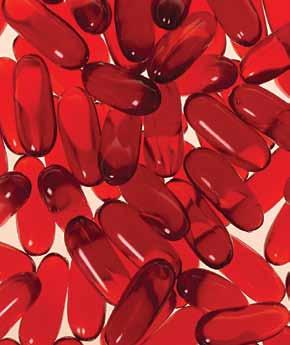
• Five reasons why you need a food supplement, in Fitness Magazine, in May
• Interview on SAFM with Karen Key in April: Health matters: Research on Omega-3 fatty acids, carotenes and vitamin E
external
- Prof S Benade: Member of the South African Sugar Association’s Research Committee
- Dr M Opperman: Member of the Complementary Medicines Committee of the Medical Control Council of South Africa
- Organising & Scientific Committee of the 26th Congress of the Nutrition Society of South Africa (NSSA) and the14th Congress of the
Association for Dietetics in South Africa (ADSA) in September

Faculty
- Dr M Opperman: Member of the Faculty of Applied Science Research Committee
- Prof S Benade: Member of the Faculty of Applied Science Research Committee
• NRF grants application: Effects of omega 3 supplementation on metabolic factors in a Western Cape population
• NRF grants application: Bone mineral density, hIV and hAART in the Cape Winelands
• NRF grants application: Associations of iron and fatty acid status with birth outcomes in urban pregnant women, Johannesburg
• NRF grants application: Bone mineral density in hIV tributyltin, an active ingredient in antifouling paint, on marine organisms.
t he FFRU translates results of research on essential fatty acids and micronutrients into new and improved functional food products.
The collaboration reported on in the CPuT Research Report 2014 has come to an end. There was a new call by the NRF for joint research projects between South Africa and Romania. The Institute of Chemistry Timisoara and the Radiochemistry and Ion exchange Chromatography unit applied for funding, but unfortunately the application was not successful.
The following research projects were started or continued
• Separation of Y and Zr on cation exchanger AG 50W-X4 in acetic acid
• Determination of distribution coefficients for Sc, Y, La, Ti , Zr , Nb and Ta in aqueous hydrochloric acid solutions on the macroporous cation exchange resins Dowex Marathon MSC and Amberlyst 15
• Separation of Zr and Y on AG 50W-X4 in 2.5 M hBr and in 2.5 M hCl
• Behaviour of Al on the cation exchanger AG MP50 in oxalic acid- hCl mixtures
• Sorption of 88Y on AG MP-1 (Oh-form) in aqueous medium; it was found that 88Y was sorbed on the resin from an aqueous solution and quantitatively eluted with 1.0 M nitric acid
• Production of ultra-pure 67Ga and the iron content was reduced to a very low level
• Distribution coefficients were determined for Cs,
Se(IV), Te(IV), Al, Sr and Ba on AG MP-1 (Ohform) in alkaline medium
• Separation of 28Mg from 7Be on a chelating resin was investigated but the experiment has to be repeated due to the strange behaviour of Be during the experiment
• A method was developed to determine Cd by an eDTA titration; the Cd salt was dissolved in 25 mL 1% ammonia solution; Cd was titrated with 0.05 M eDTA and methylthymol blue indicator (colour change from blue to colourless or pink) or xylenol orange indicator (colour change from purple to yellow)
Postgraduates who completed research projects, wrote theses and will graduate in 2016
• RA Wells: Comparison of distribution coefficients of 14 elements on three cation exchangers
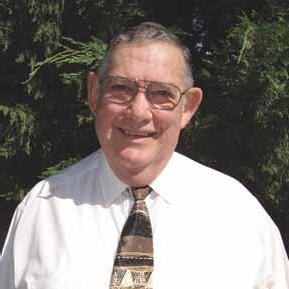
• N Sephuhle: Distribution coefficients Kd in Nitric acid solutions on Amberlyst 15 cation exchange resin
• NG Tasana: Evaluation and optimisation of boron analysis methodologies in nuclear reactor primary water systems
• G Visser: Analysing for Sr-90 in environmental samples making use of liquid scintillation counting
• HRB Obame Mbeng: A comparative study of the distribution coefficients for Mg2+, Ca2+, Sr2+, Ba2+, Fe3+, Co2+, Ni2+, Cu2+ and Zn2+ on the cation
exchangers Dowex 50W-X4 and Dowex Marathon C in aqueous hydrochloric acid solutions
• EO Omoniyi: Comparative study of brine treatment using a functionalised nanofibre and an ion exchange resin
Postgraduates who continued with their research projects
• G Fennessy-Yon: Separation of Zr and Y in tartaric medium and the separation of Mg from Li, Na and Be on AG 50W-X4
• Z Mabuwa: The retention of 26 cations on Dowex 50W-X4
• S Adonis: The optimization and implementation of a separation technique based on extraction chromatography for the isolation of Tb-isotope from massive irradiated Gd-targets
• AR Spies: Column ion-exchange chromatography with a stationary phase polymer containing a complexing agent as functional group
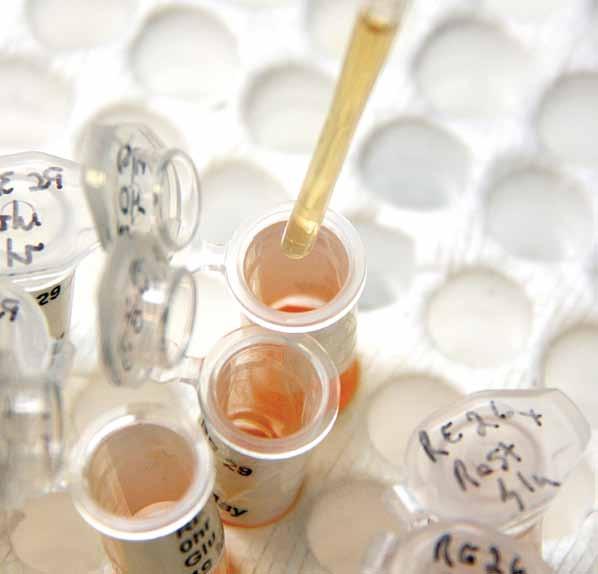
• JC Davids: The synthesis of an organic polymer containing a functional group which can be used as a chelating ion exchanger to separate Zn, Cd, Pb, Cu, Ni, Co and Mn
Five BTech students did their projects under the supervision of Prof Van der Walt.
Prof Van der Walt attended ISRANALYTICA 15 in Tel Aviv, Israel in January and presented a paper: A review of some interesting ion exchange chromatographic separations, nuclear data measurements and the production of radionuclides for medical use and research.

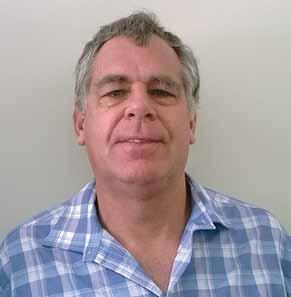
Technology Innovation (RTI) vision, which speaks to “unlocking the potential of staff, students and partners to excel in research, technology and innovation that offers solutions to the needs of society”. In this context, the following research endeavours it reports upon.
One Associate Professor was appointed at the start of 2015. Staff continued to acquire postgraduate qualifications under the auspices of DheT’s Research Development Grant. The faculty has identified staff members without master’s qualifications, and is in the process of devising a strategy to assist them in the acquisition of such.
• The Leadership and Management in Projectdriven Industries South Africa (LAMPISA) Conference in September
• Professor M Dassah (Manager, Unit for Research and Innovation) facilitated an Article Writing Workshop for the faculty
The Faculty of Business & Management Sciences strives to establish itself as a place of outstanding learning, research and innovation.
The research endeavours of the faculty are underpinned by CPuT’s 10-year Research and
The faculty hosted the following conferences, workshops and schools this year
• The International Conference on Business and Finance (ICBF) in September
• Summer and Winter Schools for postgraduate students were jointly hosted by this faculty and the Faculty of Informatics & Design
t he R t I vision speaks to unlocking the potential of staff, students and partners to excel in research, technology and innovation that offer solutions to the needs of society.
More than 120 research outputs were recorded. These took the form of DheT accredited journal articles, chapters in books, DheT accredited conference proceedings and the like. Academics are continuously improving the publication output of the faculty.
Prof harry Ballard, head of the Public Management Department, was appointed as a focus area leader for CPuT’s RTI Focus area: economic Growth and International competitiveness.
CheC – Western Cape Government Special university Tenders – 2015 were awarded for two projects under the research leadership of Prof Kamilla Swart: i) use of liquor in Cape Town stadium and ii) Procurement of a service provider to develop a standardised methodology to conduct event impact assessment for the five events.
This year, 48 of our students completed their Magister Technologiae (MTech) degrees, and Doctor Technologiae (DTech) degrees were awarded to four of our students.

DTech: marketing
CPuT
Duffet Rg
Social media as a marketing communication channel amongst Generation Y: A new paradigm for hierarchy response models
Ded CPuT hollis-Turner sl educating for employability in office environments
mTech: business administration
CPuT
mbinda b
Constraints facing small and medium entrepreneurs in Khayelitsha, Western Cape
mTech: business Financial Information systems
CPuT
maribe PP
The role of education technology in transforming education at a selected university of technology
mTech: Public management
CPuT
Zonke Nm
Community involvement trends in the housing development processes in a selected townships in Cape
mTech:
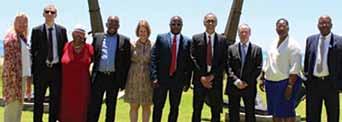

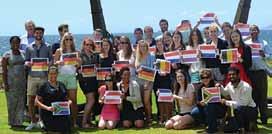
this year as a result of a student and staff exchange agreement. The delegation comprised Prof Daniel Michelis, Bachelor’s Degree Programme Manager of International Business Studies, and Mr Anand Jayakrishnan, MBA International Trade Co-ordinator at Anhalt’s Economics Faculty.
In consideration of the promotion of international educational cooperation and exchanges, CPUT’s School of Sport, Events, Tourism & Hospitality (SETH) has signed an MoU with the Ferrandi French School of Culinary Arts. The two institutions will now seek to promote and offer joint or collaborative educational programmes and research projects.
The objectives of the renewable three-year agreement include the exchange of students for study and research, as well as the exchange of lecturers who will participate in research and collaborate in offering academic programmes. This development also paves the way for the institutions to offer a master class for professional cookery in Paris and Cape Town. The French delegation included Mr Michel Mouisel, Ferrandi’s Head of International Development, Dr Yves Blanchard from F’SATI, and Ms Adrienne Lorite, International Project Manager.
The Faculty of Business & Management Sciences hosted a delegation from Anhalt University of Applied Sciences in Germany during the first part of
The delegates had meetings with the HoD: Marketing, Ms Mandy Jones, and HoD: Management & Project Management, Ms Angela Buys, to discuss future collaboration between Anhalt and the departments. They also met with the students and staff who would visit Anhalt University of Applied Sciences on exchange programmes in September.

With almost 12 years of experience in small restaurants, industrial kitchens, and teaching culinary studies at universities and colleges, Mr Lufuno Sinthumule, has written his first recipe book, Funi Cooks South Africa. The CPUT lecturer is better known as Funi by some of the best food critics worldwide and his followers on YouTube, Facebook, Twitter and Instagram. The book, published in April, promotes typical South African fare and aims to teach upcoming generations about the food that their parents and grandparents cooked. It contains simple, easy and creative recipes for every reader to try.
Funi’s passion for cooking has taken him all over the world, where he has shared his love for food and
culinary skills in the leisure and hospitality arenas. He is renowned for his South African-inspired cuisine which he promotes on his YouTube channel Cooking with Funi “Looking at the demand of our society, from a proudly South African point of view, I strongly believe that we need an online cooking show that can be accessed everywhere by using your phone or tablet,” he says. “The main aim of the online cooking show is to transform our relationship with food.”
Mr Lufuno Sinthumule promotes popular South African cuisine
The WRLC was established in 2013 in collaboration with the Wholesale and Retail SeTA (W&RSeTA). Its function is to generate industry-relevant information through research. The chair continues to work on important research projects in the retail industry, distributing findings to industry stakeholders, building local and international collaborations, and supporting the development of postgraduate qualifications. To further the professionalisation of the retail sector, a Retail Academy is being established which will focus on providing qualifications and training in retail vocational fields (QCTO). During 2015, infrastructure for the academy was set up and the first qualification (Retail Store Manager) was developed.
Projects completed during 2015 (published on our website www.wrlc.org.za)
• Expansion of SA retailers’ activities into Africa
• Nature of existing and emerging co-operatives in the wholesale and retail sector
• Model for accreditation of training providers for seven QCTO qualifications
• Development of summative assessment methods for 7 QCTO qualifications
• Monitoring and evaluation of assessment and certification of learners for seven QCTO qualifications
• Work Integrated Learning and the SMME retail sector
• The unique role of survivalist retail entrepreneurs in job creation and poverty reduction
Projects initiated in 2015 include
• SA retail sector and the BRICS trading block
• Transformation: Evaluation of the role of W&RSeTA over past 10 years
• E-Retail in SA and the impact on skills development in SA retail
• Model for work experience and research of store on CPuT Cape Town campus
Publications and academic presentations
• Three articles were published in DHET accredited journals, namely Corporate Ownership & Control, the South African Journal of Labour Relations, and the Journal of Governance & Regulation
• Prof R Mason was the session chair at the 7th International Conference, Business & Finance at CPuT, from which arose the following publications
• Mr Jonathon Aspeling was the keynote speaker at the Consumer Goods Council South Africa Summit 2015
• Prof Roger Mason and Dr Edward Dakora were session moderators at the Retail Congress Africa 2015


Participation in practitioner conferences
• Consumer Goods Council South Africa Summit 2015
- Mr Jonathon Aspeling, keynote speaker
• Retail Congress Africa 2015
- Prof Roger Mason, session moderator
- Dr edward Dakora (contract researcher), session moderator
Other activities conducted or overseen by the chair in 2015
two visiting IPAG in Nice; a few international students spent a similar amount of time at CPuT
• Our website continues to support researchers by providing databases of international information on retail courses, retail journals and publications, and sources of information on retail
• Undergraduate research is promoted through awards for BTech students; the 2014 winners from CPuT and DuT were published on our website in 2015
Thanks to the Wholesale & Retail SETA (W&RSETA), hundreds of CPUT students have received much-needed financial support. The W&RSETA has provided bursaries for R12 million this year, which help cover the tuition costs for 250 Retail Business Management students. Head of the department, Mr Petrus Venter, says the bursaries are welcome as retail management is listed as the most critically scarce skill in the retail industry. Mr Venter says the bursaries for CPUT students are part of a broader development initiative, through which the W&RSETA has offered financial support to all students at South African universities enrolled in retail business management programmes. In addition to the W&RSETA‘s funding, 40 retailers have also provided student bursaries.
CPUT has the largest centre for retail training in Africa. The Department of Retail Business Management has more than 800 students from national diploma level up to doctoral degree level. The university is also home to Africa’s only Wholesale & Retail (W&R) Leadership Chair. This is based in the Faculty of Business & Management Sciences, and was established as a result of the W&R SETA’s initiative to co-operate with universities to encourage the production of academic and applied research in this sector of business. The chair is fullyfunded by the SETA for over R11 million.
• International visits were made to a number of international universities to discuss possible collaborations and to learn from their retail research and educational experiences
- Germany: Georg August universität Göttingen; hochschule Ruhr West – Mülheim an der Ruhr; DhBW Ravensburg; hochschule Albstadt, Sigmaringen
- uK: university of Surrey, Guildford; Leeds Beckett university, Leeds; university for the Creative Arts, Rochester
- France: IPAG Business School, Nice; American Business School, Paris
• International exchanges:
- Prof Dobbelstein, the chair’s international representative, spent time in Cape Town
- One of our staff visited DhBW and one IPAG Business School, Nice
- Our student exchange continued, with 20 of our students visiting DhBW Ravensburg, and
The mandate of CeTRa is to
• Highlight CPUT’s contribution to tourism and hospitality teaching and research in Cape Town, the Western Cape, South Africa and internationally
• Facilitate research activities in the tourism, hospitality, sport and events fields, and bring together local and international university researchers, lecturers and practitioners (including those from public sector institutions), in order to find feasible answers to applied research questions
• Encourage focused research clusters incorporating researchers and students from different CPuT departments and from outside the university
• Foster research on tourism development and contact between tourism research centres and individuals globally
Prof Kamilla Swart swartk@cput.ac.za
• Provide research facilities for students and researchers
• Create databases and expand current databases relating to tourism, hospitality, sport and events
• Provide facilitation of dissertation supervision
One of CPUT’s top academics, Prof Simeon Davies, HoD: Sport Management, led a pilot study to investigate the role of Rooibos supplementation on humans during an expedition to the summit of Aconcagua, Argentina, at the beginning of the year. The summit is 6962m high, making Aconcagua the highest mountain in the Southern Hemisphere.

The study assessed the preventative benefits of rooibos supplementation at high altitude, and ascertained why individuals make decisions to participate in extreme sport or adventure activities. Exercise at high altitude induces a high degree of oxidative stress, which is often associated with High Altitude Sickness (HAS). Many climbers who ascend to high altitudes need to take prescription drugs to combat this.
The pilot study links with published research findings by CPUT’s Oxidative Stress Research Centre led by Prof Jeanine Marnewick, which suggest that rooibos antioxidant compounds could have beneficial outcomes for high altitude climbers.

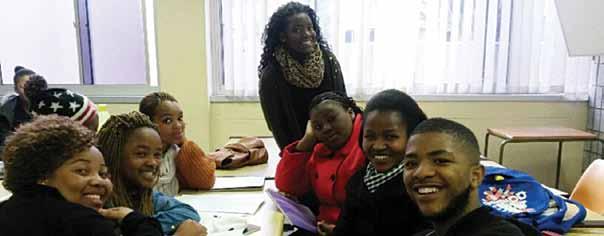
CPUT students’ life stories have been shared at an international conference in Spain. A senior lecturer in the Faculty of Business & Management Sciences presented a paper on Digital Storytelling at the 7th International Conference on Education and New Learning Technologies in Barcelona, Spain. The title of Ms Mandie Richards’ paper was Creating a platform for transformation through digital storytelling. Ms Richards also chaired a session at the conference called Technologies in Business Management Education.
Digital Storytelling has been integrated into the curriculum for Diversity Management I, a subject Ms Richards co-ordinates, as it allows students to explore their culture and identities and share their stories with classmates. She says that the subject provides opportunities for students to learn about each other
and creates awareness about the diversity and socioeconomic backgrounds of each individual. “Very often students have no idea as to the adversities others have had to overcome to get to this point of studying at a tertiary institution.” In addition to students telling their stories, writing a script and improving their acting voice, they also have to provide a social comment to educate viewers about their story.
Ms Richards feels it is important that educators use technology creatively to captivate students, whilst adding value to their experience at university. “Networking at the conference has also led to many new ideas which may be implemented into the Digital Storytelling methodology in the future,” she adds. So far, over 550 students have participated in sharing their stories through Digital Storytelling.
The hPL provides the space and cutting edge technology to pursue research and enhance education and technical training in terms of human performance in sport, including human factors and ergonomics. The laboratory’s functions include: Teaching and learning; research and facilitation of dissertation supervision; exercise testing and rehabilitation; and community engagement.
The hPL’s research areas are: high Performance, Athlete Development and Transformation in Sport, Persons Living with Disabilities, Physical Activity in Communities and Chronic Disease (specifically hIV/ AIDS), and Physical Activity and Quality of Life.
• Exercise rehabilitation of disabled persons: The hPL continues to provide rehabilitation services to clients; this year, three patients have remained consistent in their training
• Physiological testing of CPUT’s Emergency medical service (ems) first year students, high performance teams, athletes and mountaineers: The hPL has once again been commissioned to conduct physical fitness assessments for eMS students; testing is currently underway and will continue through into next year
• Bowling analysis of cricketers: Research continues through various projects
Ms Thabisile Goba gobat@cput.ac.za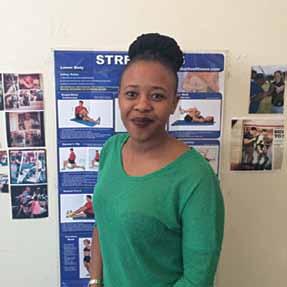
• Research testing: This continues in various projects
• Practical training for CPUT’s sport management undergraduate students: The second- and third-year students continue to utilise the hPL to conclude the practical requirements of their course
the HPL pursues research and enhanced education and technical training in terms of human performance in sport, including human factors and ergonomics.
existing, ongoing collaborations:
Technische universitat Munchen (TuM); NC State; CPuT’s OSRC; uCT’s exercise Science & Sports Medicine unit; university of Abertay’s School of Social health Sciences; Cricket South Africa
New collaborations:
The humanitarians (NPO); Primrose Rugby Club; Western Province Cricket Association; Alstone South Africa
The hPL continued its work with patient rehabilitation using the exoskeleton suit, experiencing wide media coverage as a result.
Students representing CPuT in various sporting codes continued to make use of the lab for rehabilitation of injuries as well as training advice leading up to tournaments. Athletes on the South African Basketball Team, as well as hamiltons and Primrose Rugby Club, who participate in the Super League A, also make use of the lab’s services.
This shows the hPL’s interest in the success of our students, and also builds the lab’s profile as a preferred knowledge provider for elite sport in our country.
The hPL in collaboration with the Biokinetics humanitarian Project (BhP) hosted a Wellness Day where various screening tests such as blood pressure, glucose and cholesterol were conducted, as well as physical fitness tests. The event was held at the Mowbray campus and was a great success. Participants considered to be at risk received information regarding how they can improve their health status utilising nutrition and exercise interventions.
• The HPL and Western Province Cricket Association collaboration continues with ongoing research and analysis of illegal bowling actions
• The lab provides conditioning and fitness training for the Primrose Rugby Club
• The HPL is involved with an ongoing training project to assist the cleaning staff of J&M Cleaning, a contractor to CPuT, by prescribing exercise programmes and offering advice on health and wellness
• The lab is currently working in collaboration with Alstone South Africa towards possible novel and sustainable sports equipment made from eco-friendly materials
The hPL supports postgraduate students with state-of-the-art equipment to assist in data collection.
This year, in collaboration with uCT, the hPL provided research and technological assistance to a student who completed an honours degree study, titled Latency effect of a visual warm up on batting performance, under the supervision of Dr Sharhidd Taliep.
The lab is also currently home to a CPuT postgraduate student completing a master’s qualification study titled The effects of combined weighted implemented training and medicine ball training on cricket bowling velocity.
t he HPL continued its work with patient rehabilitation using the exoskeleton suit, experiencing wide media coverage as a result.
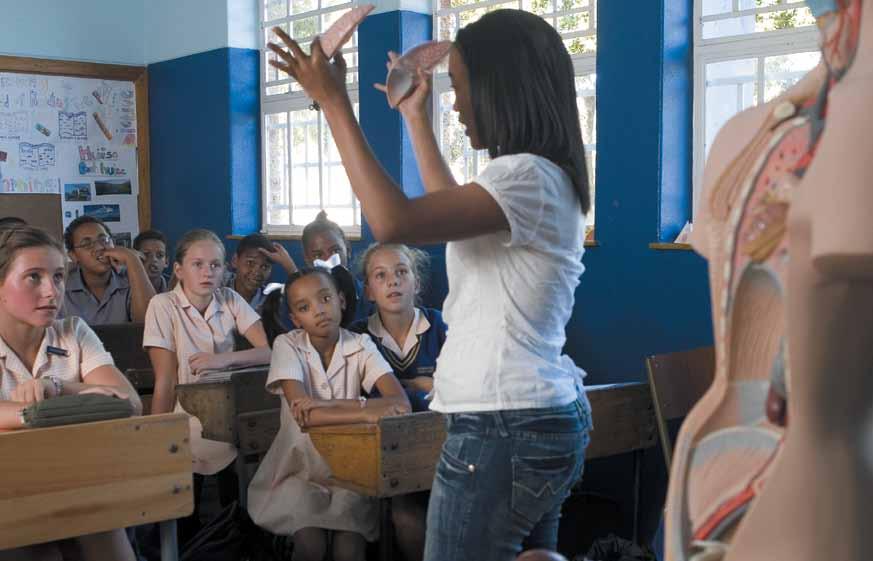
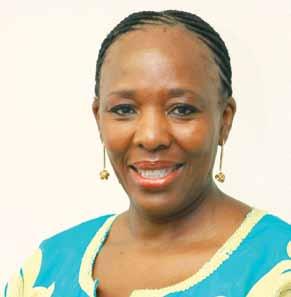
The Faculty of education, with its two campuses in Mowbray and Wellington, is a leader in research, development and networking activities in teacher education. Research has become one of the faculty’s strengths, with ever-increasing levels of academic publications in peer reviewed journals, conference proceedings and master’s and doctoral graduations. These research outputs are characterised by their close relationship with the problems and challenges of practice, as we seek to better understand the challenges of quality education in our country.
We have developed strategies that we are pursuing rigorously to continue realising the goal of building a quality education system, which reflects the goals of human rights and economic and social development. These strategies are lodged within the context of cultural and linguistic diversity, where urban-rural differences and historical inequalities pose particular challenges. Teacher education forms a central strategy for advancing such goals.
Our research capacity building initiatives, research seminar programmes and development workshops are all in line with the university’s mission to
develop and sustain an empowering environment where, through teaching, learning, research and scholarship, our students and staff, in partnership with the community and industry, are able to create and apply knowledge that contributes to development.
An NRF Research Chair in Teacher education having been awarded to the faculty is heartening, and this will certainly strengthen our research agenda. Developing the knowledge base and field of teacher education requires significant investment in enhancing research capacity through developing a pool of researchers working in the area.
The faculty’s research focus is not only contributing to knowledge about teacher education, but also
Research has become one of the faculty’s strengths, with ever-increasing levels of academic publications in peer reviewed journals, conference proceedings and master’s and doctoral graduations.
Pre-entry academic and non-academic factors influencing teacher education students’ first-year experience and academic performance
providing important insights into how education quality in South Africa can be improved. The faculty has positioned itself to produce research and innovation which is relevant and aligned to the needs of the Western Cape and South Africa as a whole through teaching, learning, research and scholarship.
Thanks are due to the DVC: Research, Technology Innovation & Partnerships and the Research Directorate at CPuT for their continued and enthusiastic support of all our work. We look forward to an increased level of research output that will continue to add value to our work.
Ten of our students completed their Magister Technologiae (MTech) degrees this year. Doctor Technologiae (DTech) degrees were awarded to two of our students.
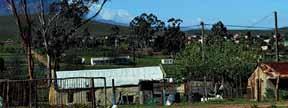
A leading education and social sciences researcher, Dr Clive Kronenberg, is exploring rural education in SA. He plans to gain insights into the Western Cape’s top performing rural and multigrade schools that are situated on the West Coast.
Globally, rural education is the most neglected area of education, and the majority of these schools have low attainment rates. However, Dr Kronenberg hopes to uncover what is behind the success of several of the Western Cape’s best performing rural and multigrade schools. The findings will be vital in establishing a future model that can improve attainment rates at these schools.
As part of his research, Dr Kronenberg spent several weeks gaining insights into rural education in Cuba, a country that has one of the world’s most successful education systems,
with adult literacy rates of 99.8%, a learner teacher ratio of 12:1, and high attainment levels in urban and rural areas. While in Cuba, Dr Kronenberg had the opportunity to interact with teachers, learners, teacher assistants, as well as education officials and academics from local universities.
Dr Kronenberg says his study, titled Novel Ideas, Good Practices and Success Stories, explores schools’ operations, teaching methods, culture and parental involvement.
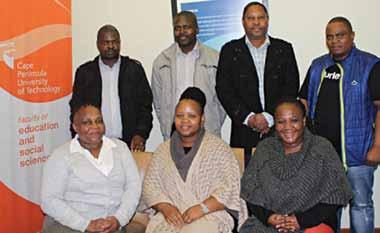
A group of academics from the Faculty of Education are publishing their first batch of research articles in accredited South African and international journals following a retreat in May. Determined to equip each other with research writing skills and increase the university’s research output, the group of 10 academics has been professionally supporting each other with their research projects since the beginning of the year.
Seasoned researchers Dr Agnes Chigona and Prof Lungi Sosibo are mentors in the group, which was initiated by the latter when she sent an invitation to all the faculty’s academics to join. “I wanted to assist emerging researchers with research writing skills after I was also mentored by Dr Chigona,” says Prof Sosibo. She adds that they have not just built a community of research among themselves but have also bonded since forming the group.
The members meet every month to give each other feedback on their projects; they held the retreat in a guest house in Stellenbosch where a lot of coaching and writing took place. The group consists of Mr Alfred Mwanza, Mr Kwanele Booi, Mr Zakhile Somlata, Dr Chiwimbiso Kwenda, Dr Nozuko Gxekwa, Dr Stanley Adendorff, Dr Christa Thornhill and Dr Cina Mosito.
Many of them had presented at conferences, but had felt challenged concerning the writing of articles. “It is a motivational exercise to encourage colleagues to publish their research reports,” says Dr Kwenda. Mr Booi, an emerging researcher, attributed the recent acceptance of his abstract by the International Society for Technology in Education to the support from the group.
The group acknowledges the moral, professional and financial support it enjoys from the faculty’s research department led by Prof Rajendra Chetty.
A Foundation Phase lecturer in the Faculty of Education and the co-ordinator of the Grade R diploma course has been involved in writing a book on Grade R together with other academics from South African institutions. Dr Naseema Shaik, who received her PHD last year, specialises in teaching Grade R and Literacy in the Foundation Phase.
Dr Shaik has contributed three chapters to the book Teaching Grade R, which is published by Juta. “I wrote one chapter on my own and its title is Who is the Grade R teacher? In addition to this, I wrote two chapters with other colleagues from other higher education institutions,” she says.
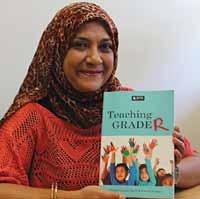
The book, which is available at local bookstores, has a total of fourteen chapters, contributed by eleven academics from seven institutions. The publication advocates teaching and learning through play in Grade R, and also highlights teaching and learning through participatory, childcentered approaches. It is used by Grade R Teaching Diploma students, BED: Foundation Phase students as well as Grade R teachers.
CPUT is the first and only university in the Western Cape to offer the Grade R Teaching Diploma, which is offered on a part-time basis over four years. Grade R Teaching Diploma Co-ordinator, Dr Naseema Shaik
The findings of a successful doctoral research project will help CPUT in the development of an honours programme that will provide Education students and current educators with the appropriate skills to teach a first additional language. Dr Christa Thornhill, an educational researcher, investigated the teaching of Afrikaans as First Additional Language at urban primary schools in the Western Cape.
The research was prompted after Dr Thornhill, who is the Head of the General Education & Training Department at the Mowbray campus, investigated students’ lack of proficiency in Afrikaans. She explored various factors at play in schools, including the resources available to teachers, up-skilling initiatives and in-service teaching programmes. “What I found is that many teachers are not proficient in Afrikaans,” she says. “They don’t have a good knowledge and understanding of the new methodologies of language teaching. They are not very knowledgeable about policies.”
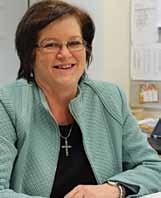
Dr Thornhill says that teachers have had to embrace numerous changes in the curriculum over the past few years, and as a result, many have not been re-trained and are not implementing the curriculum correctly. The study also found that education authorities placed more emphasis on Mathematics and Science than on Afrikaans as a first additional language, despite it being the most prevalent additional language in the Western Cape.
Dr Thornhill says the results are now being used to assist the Faculty of Education with devising an honours programme that will focus on skilling students as well as inservice educators in first additional language teaching. “In this way we hope to address the challenges language teachers face,” she says.
Dr Clive Kronenberg, one of CPUT’s leading education and social sciences researchers, has been acknowledged for his contribution to the enhancement of education studies at the Faculty of Pedagogical Sciences of Matanza University in Cuba. The certificate was handed to Kronenberg during a visit to the university in July, where he delivered an address and interacted with education students and faculty staff members.
Dr Kronenberg is currently Africa’s foremost scholar on matters relating to the Cuban education system. He has visited the country several times to explore its education system, which is one of the most successful in the world. In 2005, he was one of eight individuals selected by the Department of Arts and Culture to be part of an official delegation that visited Cuba for the purposes of cementing bi-lateral cultural ties. In 2013, he was invited by the Cuban Ministry of Education and Culture to further research their education system.
During his mid-year visit to the university, Dr Kronenberg presented a paper at the 14th International Congress, Pedagogia 2015. This is one the world’s foremost education events, which attracts almost 3 000 delegates from across the world and sees 800 papers delivered by leading education specialist and researchers. “It was a wonderfully enlightening experience to have been invited to deliver a paper at this conference,” says Dr Kronenberg. His
paper explored the Cuban educational philosophical framework, the most important element in its success.
Issues debated at the five-day conference included the training of values and citizen education, teacher and professional work, challenges of science education, and quality assessment of education. Following the conference, Dr Kronenberg also travelled to the rural Matanzas mountainous region, where he conducted research on multigrade education. The visit to rural Cuban schools forms part of Kronenberg’s research project, titled Novel Ideas, Good Practices and Success Stories, which will see him unpack rural and multigrade education in SA.
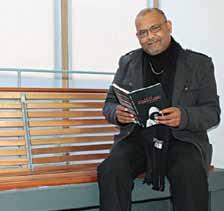
Educational researcher makes his mark internationally Research informs development of new Education honours programme
The Centre for International Teacher education (CITe) achieved a number of outputs and impacts in 2015.
Firstly, the potential contribution of the centre’s research to the field of education generally, and to teacher education in particular, is visible at the following levels:
teacher and peace building, and writing several pieces for the CPuT Bulletin. We have also appeared on two community radio shows.
• Knowledge: We have impacted debates about teacher education through our published work, conference presentations and invited keynote addresses, both nationally and internationally.
Prof Yusuf Sayed (Director) sayedy@cput.ac.za
• Policy: Through the centre’s Inaugural Colloquium in February 2015, and a variety of workshops and seminars during 2015, the centre has engaged with both national and provincial education departments and officials, and colleagues from various universities. In addition, CITe has engaged with stakeholders such as teacher unions and other professional bodies regarding research on teacher professionalism. This has laid the ground for more informed policy dialogue and engagement.
• Public media: We have engaged with public discourse of teacher education through providing commentary on the Budget Speech in relation to teacher education, blogging on
Secondly, the centre’s five large-scale research projects have already produced data that is contributing to significant debate in the SA policy environment. The projects comprise Policy Sociology, Initial Teacher education, Continuing Professional Development, Social Cohesion, and Teacher Professionalism. The findings of each of the projects will add much value to current debates in teacher education.
Thirdly, CIT e currently has ten doctoral students and seven master’s students registered. All of the centre’s students have already engaged in fieldwork, with at least four students set for graduation in September 2016, and a further four by April 2017.
This represents a very real achievement with regard to student output over the full grant term.
Fourthly, during 2015, the following research outputs were achieved: five published articles in peer reviewed journals, two books, three book chapters, two technical reports, two keynote addresses, five guest papers, six international conference presentations and twenty national conference presentations.
CITe hosted a research seminar in February, a week-long experts Workshop comprising a five-country project eSRC team members, CITe staff, associated postgraduate students, postdoctoral fellows, research fellows, officials from the Department of Basic education and representatives from uNICeF South Africa.
Prof Sayed and Prof Badroodien also presented Perspectives of Teacher Education in South Africa: 21 years into democracy at the Inaugural Colloquium of the Centre for International Teacher education (CITe) in February. This was a one-day colloquium hosted by CITe with three international guest speakers, an opening address by the Minister of Science and Technology, presentations by members of the Presidency and education Departments, presentations by senior academics from SA universities, and participation by 160 policy makers, officials, district officers, members of NGOs, academics, postgraduate students, and principals and teachers.
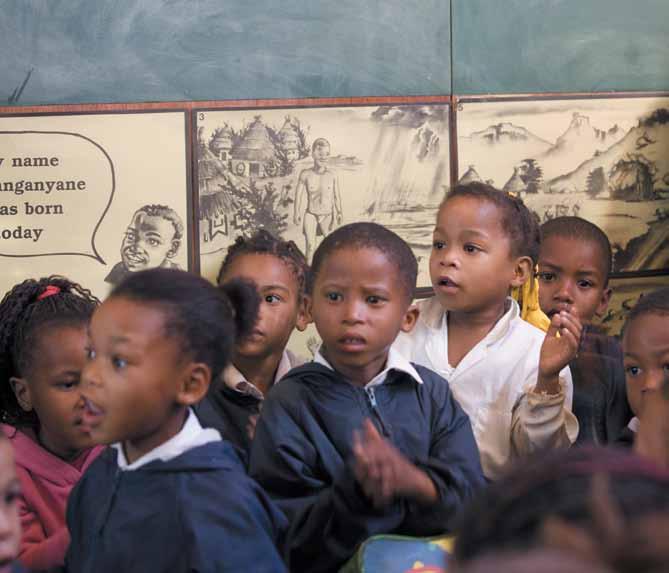
the centre’s five large-scale research projects have already produced data that is contributing to significant debate in the south African policy environment.
Years of hard work and a passion for Art education have resulted in Dr Georina Westraadt publishing an art education textbook titled Die Onderrig van Visuele Kuns in die Laerskool. Aimed at assisting students with lesson preparation, the textbook is a much needed resource, with the last book of its nature having been printed in 1972.
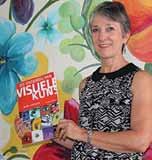
Already a prescribed textbook for first-year education students at CPUT, the volume contains teaching methods for Art from Grade R up to Grade 7. “It covers the planning, presentation and everything a teacher needs to present a quality art lesson,” says Dr Westraadt. “You have to write with the students in mind, because they have to comprehend it and be able to use it in their student practice and when they teach in schools.”
Telling Stories Differently: Engaging 21st Century Students through Digital Storytelling is a book about about digital storytelling (DST) at CPUT. It was launched at the 9th Pan African and 10th Reading Association of South Africa Literacy conference at the Baxter Theatre in September this year.
Digital Storytelling (DST) in HEIs is one of the most exciting emerging technologies of the 21st century. The national goal is that every South African manager, teacher, and learner in the general and further education and training bands will soon be information and communication technologies capable. It’s becoming increasingly important for 21st century HEIs to integrate technology into their teaching, learning, and assessment practices. This is in response to an argument that students are not ready for industry because HEIs are not using enough technology in their classrooms. Many South African HEIs face low throughput rates, and the need to enhance students’ engagement in their studies is a key objective.
The aim of this book is to share a relatively loose collection of studies using DST as a pedagogical tool at CPUT. The publication takes an informed social justice approach to teaching and learning, at the heart of which is the exploration of DST as a practice of voice and agency.
The book is the outcome of an NRF project. Appreciation is extended to its many contributors, including: Ms Daniela Gachago, Dr Eunice Ivala, Dr Agnes Chigona, Prof Yusuf Sayed, Prof Rajendra Chetty, Dr Sue Pather, Ms Nazma Vajat, Ms Chantyclaire Tiba, Ms Veronica Barnes, Ms Penny Gill, Mr Ignatius Khan Ticha, Mr Franci Cronje, Ms Anthea Adams, Ms Ayesha Reiners, Ms Lynn De Louw, Ms Mandie Richards and Prof Janet Condy.
At the launch, Prof Janet Condy thanked Mr Gerard Mare for writing the afterword. “We would like to also acknowledge our many students and facilitators for being part of our research projects,” said Prof Condy.
The textbook is not curriculum-bound and can be used as a resource for Art education anywhere. Dr Westraadt, who received her DEd from CPUT in 2013, says she started work on the book after wrapping up her thesis and completed the textbook late last year.

“I am very happy with the end result,” she says.
The 77-page book has been illustrated with photographs taken by Dr Westraadt of various projects with which she has been involved and is also available in English.
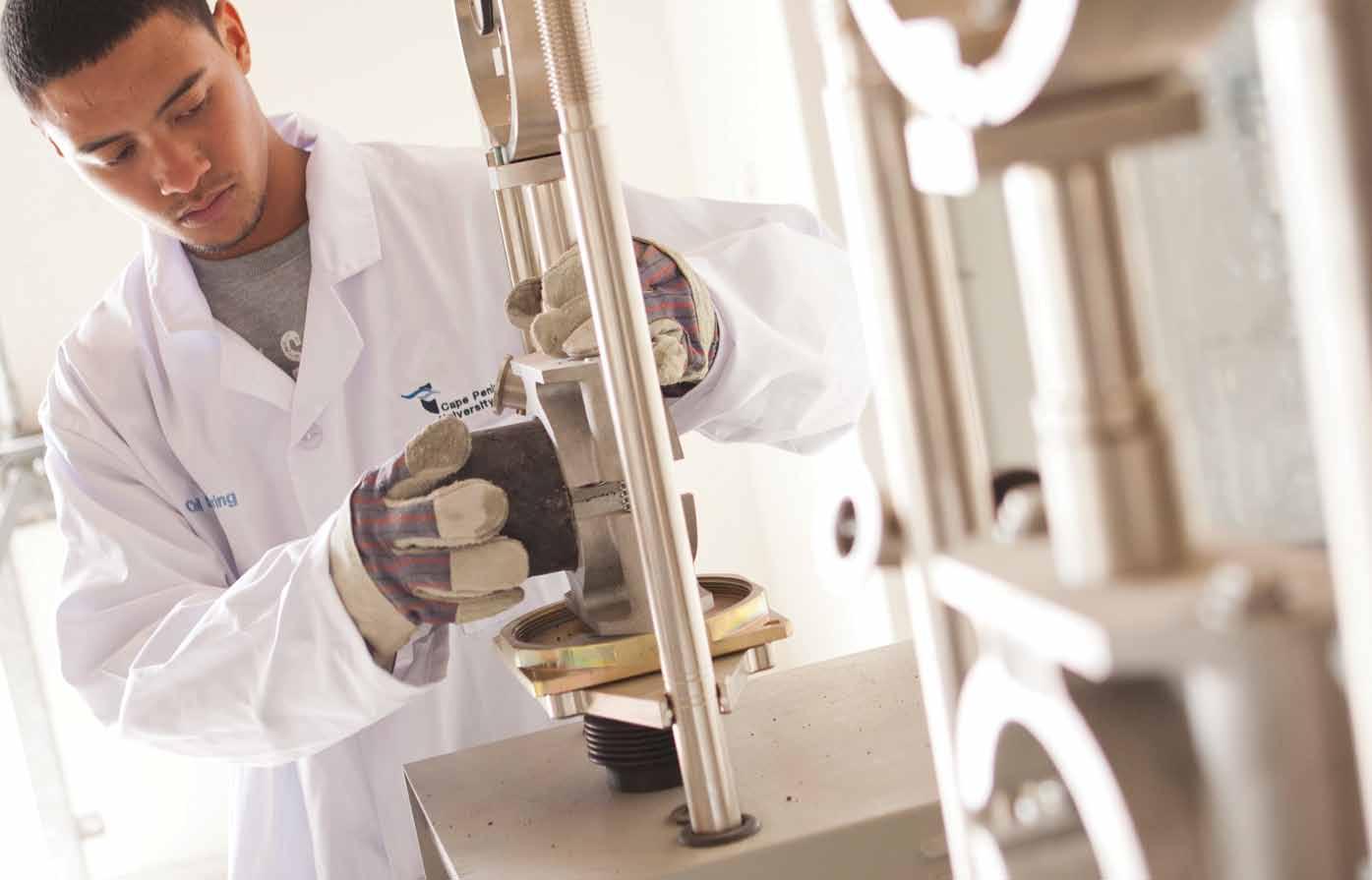
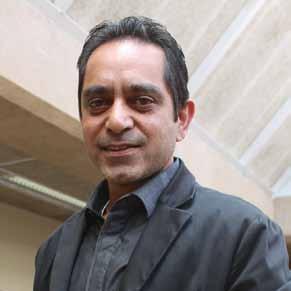
The Faculty of engineering covers a broad range of engineering disciplines, which are currently being reformed to respond to the demands of regional, national and global industry priorities in engineering education.
Through a range of multidisciplinary research institutes and centres, the faculty aims to integrate its education and research programmes into a cohesive system, providing students with modern technology platforms for relevant and industry-responsive education, with a high degree of work-integrated learning. These platforms include the Product Life Cycle Management Competency Centre, providing state-of-the-art education in product design through to simulation and life-cycle management, the Advanced Manufacturing Technology Laboratory, and the Centre for Substation Automation and energy Management Systems. Through this approach, the Faculty aims to emerge as a major driver of socioeconomic change in the region.
Regional, national and international partnerships provide an essential mechanism for research and technology transfer, while at the same time developing opportunities for student international experience. The Foundry Technology Programme with RWTh Aachen university of Technology, and
the Satellite Technology Programme under the French South Africa Technology Initiative are high impact examples of such partnerships. exchange programmes, such as those with Shanghai Dian Ji university and De haagse hogeschool, provide students with opportunities to participate in collaborative technology projects, while developing multicultural and global perspectives.
As part of a university of technology, our mandate requires participation in community-based and SMe projects, with a strong emphasis on commercialisation, providing a platform for technology transfer and spin-off technology enterprises. In this way, we provide our students and researchers with opportunities to engage at the highest level of engineering, and continue to have an impact on the development of high-end engineering skills as a basis for industrial competitiveness. Twenty-eight of our students completed their Magister Technologiae (MTech) degrees this year. Doctor Technologiae (DTech) degrees were awarded to seven of our students.
DTech: Chemical engineering
CPuT
godongwana b
Substrate mass and momentum transfer in a biocatalytic membrane reactor: effect on performance
DTech: mechanical engineering
CPuT
msomi v
Modelling and testing smart aileron servo tabs: Developing simulation tools for smart materials
mTech: Construction management
CPuT
Pinfold lF
Innovative practices for effective management of building production processes within urban centres
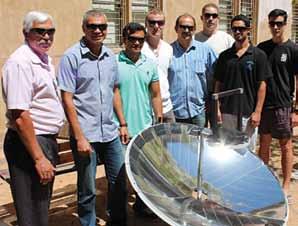
2015 PuBLICATIONS SuBMITTeD TO The DheT (MAY 2016) uNITS
27.91
(submitted) 0.32
14.19
An innovative revamp of an existing solar cooking device earned CPUT one of the top spots at this year’s International Xplore New Automation Competition in March.
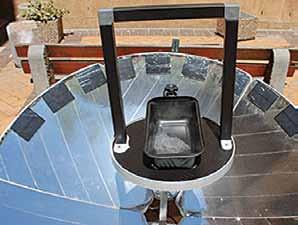
The competition is hosted by Phoenix Contact, the market leader in industrial electrical and automation technology, and is held every three years. CPUT students also participated in 2012, when their entry, a reciprocating kite generator, was awarded second place in the Environment and Renewable Energy category.
This year, a group of Electrical Engineering students won first place in the same category. The team was one of 29 out of 100 selected to compete in the finals that took place
in Germany. The students designed and built an automated solar oven power generator, a device that operates off-grid and which can be used to boil water, cook food and power a battery. The device is fully automated and features several new fittings, such as an engine that runs entirely on heat, a safety buzzer and several solar panels.
Lecturer Dr Wilfred Fritz says they will now look at further developing the device and explore how to make it more cost effective. Operating off-grid, the device’s implications will be far reaching, given the current energy crisis facing SA. Other team members are lecturer Mr Deon Kallis, master’s student Ben Dixon, BTech students Maahir Rahmna and Greyson Du Toit, and second-year students Werner Lotter and Brendon van Breda.
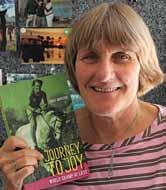
Mathematics lecturer, Dr Sibis Mouton, works in the Department of Civil Engineering and is also a practicing behavioural kinesiologist, a former world champion in the Ironman distance competition, an inspirational speaker, as well as facilitator of the ZEST4LIFE courses offered in CT, the UK and the Seychelles. She has now also recently joined the ranks of autobiographical authors, with her first book Journey to Joy: World Champ at Last.
An action-packed autobiography, Dr Mouton shares her life experiences, from climbing extinct volcanoes to visiting more than 40 islands, as well as her inspiring journey of becoming a world champion. “I am a very lucky person. I am doing all the things that I want to do and I am enjoying it,” she says. The idea of an autobiography came to her after she wrote an article that was published in an international magazine. “I thought that if I could write an article, I could write a book,” she says. It was a long and hard process, but one that was well worth the effort. “I love the book,” she says.
The 194-page publication is divided into twelve chapters with colour photos at the back. The first six chapters focus on her journey to win the World Ironman championships, while the remaining chapters reflect on her spiritual journey. Reviewers of the book have described it as “an uplifting and inspiring story that should convince the reader that life is indeed a miracle to be enjoyed and treasured”. Dr Mouton says the book is not just about sharing her adventures with the world – she hopes readers will be inspired by her story.
CPUT students are about to embark on a waste upcycling and renewable energy project that will benefit the student community. The project comprises collaboration between CPUT and the German-based World of Eve and Training Development Consulting. It is led by Engineering lecturers, Dr Wilfred Fritz and Mr Deon Kallis, and involves Electrical Engineering, Mechanical Engineering and Information Technology students developing an outdoor solar charging unit made from waste.
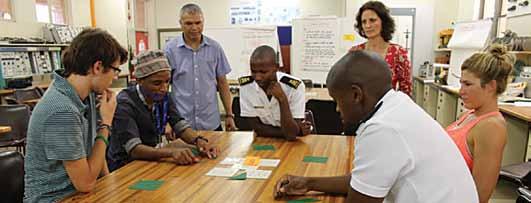
The project began in February, with a workshop coordinated by Ms Andrea von Gleichenstein, the Director of Training Development Consulting. Ms von Gleichenstein says the workshop aims at preparing students for the year-long project. “This is a realistic project; it’s not just theoretical,” she says. The workshop
covers aspects such as teamwork and project management, skills Ms von Gleichenstein says students will have to develop if they want to survive in industry.
Dr Fritz says when deciding on a project they looked at something that would be relevant to the university community and that could eventually be rolled out to the local community. A total of 70 students are participating in the project, working in groups to design a prototype. The best design will be selected, and the outdoor solar charging unit will be constructed by CPUT students together with several exchange students from Germany. Dr Fritz says a memorandum between CPUT and the German entities was signed, which will see the parties collaborate on similar student-based projects over the next five years.
CDPeS research areas include energy efficiency, renewable and alternative energy technology, distributed energy system technology, predictive control of power converters and electrical drives, and MeMS energy sensor technology.
Through its research, the centre aims to:
• Develop power conversions for renewable energy sources and investigate interconnectivity of distributed resources with microgrids and electric power systems
• Apply such technology over multidisciplinary applications, especially those pertaining to commercial and industrial applications
• Investigate and apply optical fiber and wireless communication techniques over large-scale power systems for telemetry and control
• Improve control schemes for power converters and drives
The introduction of electrical energy management into industrial sectors is an effective method of minimising energy consumed by industry; it also improves the reliability of the power system. CDPeS strives to find ways to improve this relationship, using networked sensor technology, ubiquitous computing, ambient intelligence, and associated electronic communication systems developments. Power electronics and drives are used in diverse sectors, ranging from industrial to residential applications.
The CDPeS team members are Prof Tariq Kahn (leader), Dr Marco Adonis, Dr Atanda Raji, Dr Wilfred Fritz, Mr Deon Kallis, Mr Ali Almaktoof, Mr Achmat Fish, Mr Christopher Wills and Mr Onwunta Onwunta.
Prof Mohamed Toriq Kahn khant@cput.ac.za• Study nuclear energy, environmental protection and sustainable development
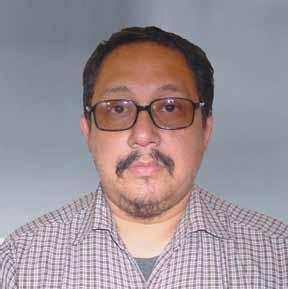
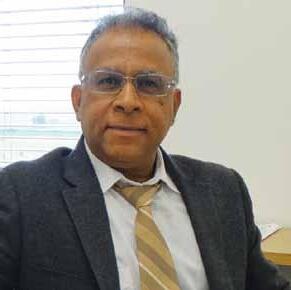
The Centre for Instrumentation Research has a long standing history within the Department of electrical, electronic and Computer engineering. The centre is now based in the new electrical engineering research building on the Bellville Campus, and also operates under the umbrella of the French South African Technology Institute (F’SATI). With a track record of more than 15 years, the centre has housed a large number of master’s and doctoral projects funded through various organisations.
The CIR is capable of hosting 20 BTech students for their final year industrial project, feeding into master’s and doctoral research. Over the last three years, the centre has witnessed renewed growth, with two new staff members, active in research, joining the centre, and postgraduate numbers steadily on the increase.
The main project areas are novel electronics for high frequency ultrasound, condition monitoring of transmission lines, and ultrasonic high voltage insulator cleaning (funded by eskom’s TeSP grant).
Also based within the centre, is the Quantum Physics Research Group, which focuses on quantum technologies and quantum communications (please see report opposite).
The Quantum Physics Research Group was established within the Department of electrical, electronic, and Computer engineering in 2014. The group, led by physicist Dr Kessie Govender, investigates and develops expertise in quantum based technologies. The group currently consists of three staff members (Dr K Govender, Dr Z Nkosi and Mr R Pentz) and five master’s students (Ms M Patel, Mr A Wyngaard, Mr J Stubbs, Mr V Opeolu and Mr e Moe-Mackossa).
A quantum optics laboratory is being developed for the purposes of cooling atoms, and subsequent development of quantum information processing components. The development of a microwave-based atomic clock for satellite applications is also being undertaken.
Collaborations have been established with researchers at the Laser Physics group at Stellenbosch university, iThemba Labs, the National Metrology Institute of South Africa (NMISA) and the Quantum Physics research group at uKZN. An Mou has been signed with Stellenbosch university, facilitating exchange of technical and scientific knowledge.
The group is currently funded through an NRF Thuthuka grant and a CSIR-NLC laser rental pool grant.
More information on the activities of the group can be found here: http://www.cput.ac.za/academic/faculties/ engineering/research/quantum_physics
the centre is dedicated to both fundamental study and applied technology development in the field of mechanics technology.
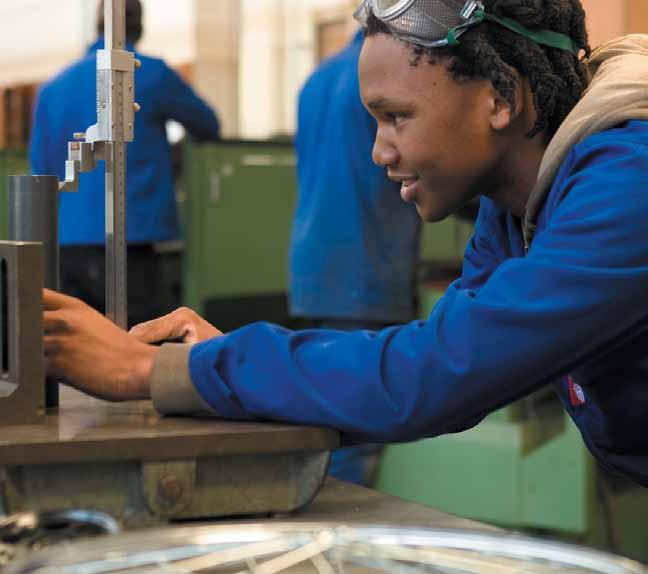
The centre is dedicated to both fundamental study and applied technology development in the field of mechanics technology, including soundwave cooling, packaging, MeMS sensor, turbulence and Lie group symmetry on nonlinear mechanics. Its team members are Prof Bohua Sun and Mr Walter Kohlhofer.
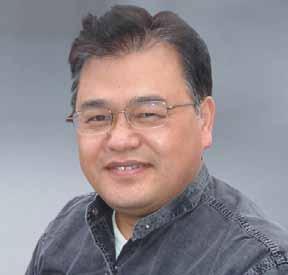
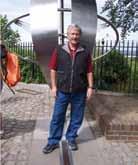
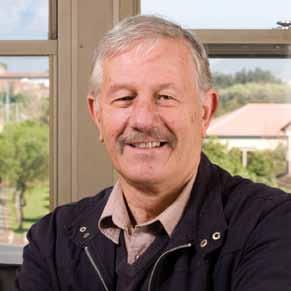
atkinsonhopeg@cput.ac.za
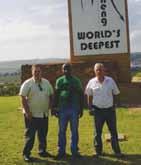
The CPRS conducts research on power systems, including high voltage alternating current (hVAC) and high voltage direct current (hVDC). It also studies renewable energy networks as well as energy efficiency and its optimisation under stable and contingency conditions, with a strong focus on the effects of distorted operations due to harmonics and filter solutions.
Research activities include investigations into hVDC systems and their delivery and integration into hVAC power systems. Studies are done at both transmission and distribution levels. The impact of renewable energy source integration into distribution networks is also investigated.
The CPSR is equipped with cutting edge software such as frequency and time domain tools, and the work involves modelling and analysis of real systems so that graduates will be able to apply these tools in their careers. The work encompasses both fundamental and harmonic frequency domain investigations extending to distortion solutions. At distribution level, efficiency and energy loss studies are performed under low reserve margin conditions and during load shedding (contingency analysis and impact on efficiency).
Research involves decision making regarding selection of the type of harmonic filter(s) and their impact on energy efficiency in distribution networks. It entails the study of energy interactions under pure sinusoidal waveform and distorted waveform operations that take place between power system components and between systems. The latter
includes looking at which are sources and which are sinks at the various harmonic frequencies, extending beyond real power and looking into reactive power interactions. Voltage source converter hVDC systems are also investigated.
A new field under study is “Customer versus utility Accountability for harmonic Distortion”, which embraces the development of computer and measurement based techniques to identify the harmonic source(s) responsible for the distortion extending to the development of power quality contracts with the appropriate clauses.
The centre further specialises in evaluation, application and comparison of modern industrial grade frequency and time-domain software packages and the production of graduates with advanced skills in the technological aspects of the real world environment of power systems.
The CRTDS team members are Prof R Tzoneva (leader), Mr C Kriger (deputy leader), Mr M Mnguni, Mr Q Bart, Dr S Krishnamurthy, Mr S Behardien and Mr A Adewole.
The centre strives to make a theoretical and application-based contribution to advances in realtime distributed systems. It is concerned with the development of novel models, design methods, software, hardware and their integrated application for real-time monitoring and control. It also aims at insightful and focused determination of proper areas of application and research through appraisal and reappraisal of emerging control technologies.
The core activities are:
• Design and implementation of nonlinear controllers
• Distributed control based on IEC61499 standard for function block programming
• Networked control systems design and implementation
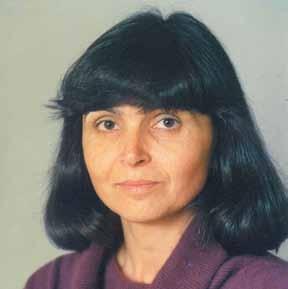
• Optimisation of complex distributed systems and development of algorithms for parallel computation
• New methods for design of fully decentralised nonlinear controllers for distributed nonlinear systems were developed and implemented in the software environment of Beckhoff PLC for control of continuous stirred tank reactors
• Collaboration with CPUT’s Department of Chemical engineering started for development of a control strategy for cleaning of poultry wastewater and producing of biofuel
• Research on state and parameter estimation of nonlinear ion exchange process for desalination of water resulted in producing of novel methods and software
• New research on design of nonlinear adaptive distributed networked controller was undertaken
Postgraduate research students include
J Muga, DTech; N Dube, DTech; Y Mfoumboulou, Deng; J Kongo, MTech.
FuNDING
eskom TeSP programme R130 000
uRF for DTech student J Muga R40 000
Prof Raynitchka Tzoneva tzonevar@cput.ac.za
the centre strives to make a theoretical and application-based contribution to advances in realtime distributed systems.
The CSAeMS team members are Prof R Tzoneva, Mr C Kriger, Adj Prof A Apostolov, Adj Prof P Petev, Mr M Mnguni, Dr S Krishnamurthy, Mr A Adewole, Mr S Behardien and Mr C Gumede.
• Training and knowledge transfer by equipment orientated courses, yearly industrial seminars on IeC61850, and organisation of the biannual PAC World Africa international conference
Prof Raynitchka Tzoneva tzonevar@cput.ac.za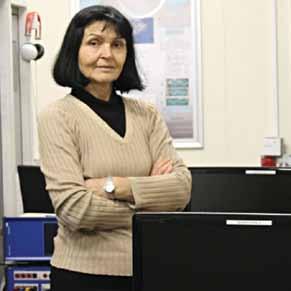
The centre seeks to help address SA’s need for research infrastructure development that supports human capital development and research and innovation in the areas of metering, monitoring, protection, automation and control of power systems, paying particular attention to current and emerging standards in the field.
Core activities concentrate on contributions to the theory and practice of substation automation and energy management systems
• Interpretation, modelling and implementation of the IeC61850 standard functions
• Development of innovative protection schemes for different applications
• Real-time simulation and innovative solutions of energy management systems
• Development of test-bench facilities for testing of ideas, project solutions, and new developments in the field of power systems
achievements in research, development, and applications of the IeC 61850 standard and technology
• Innovative FPGA implementation of the of the IeC61850-9-2 standard-based Process Interface Device as part of the outcomes of a CPuT prestigious research project
• Design and implementation of innovative algorithms of protection schemes for differential protection of power transmission lines based on PMu synchrophasor measurements
• New methods were developed and implemented in a real-time testbed for monitoring and control of power system voltage stability
t he centre pays particular attention to current and emerging standards in the field.
• New methods, algorithms and software for parallel solution of multiarea dispatch problems for power systems integrated with renewable sources were investigated
• New control strategies for grid connected and out-of-grid inverter-based renewable energy systems were developed and tested
• IEC61850 standard logical nodes for condition monitoring of electrical motors were developed
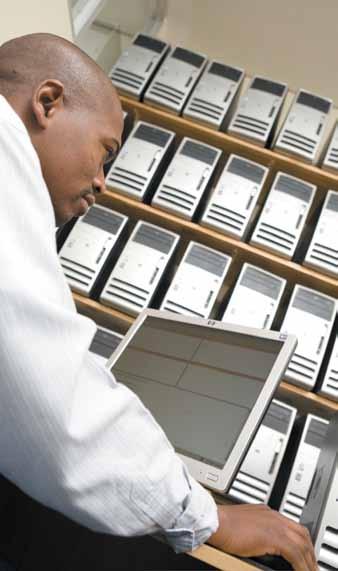
• Interpretation of the IEC61850 standard, and software application development utilising embedded kits for the projects: Synchrophasor estimation algorithms implementation, IeC 61850-9-2 standard-based sampling and status value mapping on an FPGA platform, and estimation of the rate of change of the frequency for synchrophasor implementation
• Power system protection using GOOSE messaging for development of IeC61850 standard-based schemes for: Differential inrush current discrimination-based digital protection for a three phase power transformer; Threeterminal differential protection; Interoperability of the protection functions in multivendor intelligent electronic devices; and Synchrophfasor-based differential protection
• Real-time simulation and energy management systems strategies for: Voltage stability assessment and wide area protection/control based on synchrophasor measurements; Development of IeC61850 standard-based
object models for conditioning monitoring; Adaptive load shedding for distribution power networks; estimation and control of the power swing in the smart grid; and Integrated monitoring, protection, and control of the CPuT power reticulation network
• Mr H Mataifa obtained his MTech degree
• Collaboration with Alstom UK, SEL SA and ABB SA was further extended, and new donations from industry were received
• New collaborations between the CSAEMS and the research groups of Prof Khan from uCT and Prof Bansal from uP were established
• CSAEMS participated at the organisation of the 2nd PAC World Africa Industrial Conference in Johannesburg in November
• Members of the centre presented exhibitions and demonstrations at courses, seminars and conferences in SA, and research papers at local and international conferences and industrial forums
Industrial partners, ThRIP programme: Alectrix R732 500
Industrial partner, ThRIP programme: MBSA R10 000
NRF ThRIP programme R732 500
eskom TeSP programme R190 000
The strategic objective of the DeeCe is to integrate cutting edge technology research with our academic programmes. In order to do this, it is essential that we align our academic programmes and research with the needs of the country and its relevant industries as contained in the strategic plan of the Department of Science and Technology (DST). From this flows CPuT’s RTI Blueprint and the strategic alignment of faculty and ultimately departmental objectives.
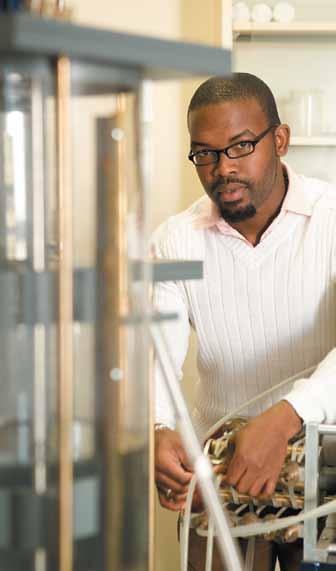 Mr Ben Groenewald groenewaldb@cput.ac.za
Mr Ben Groenewald groenewaldb@cput.ac.za
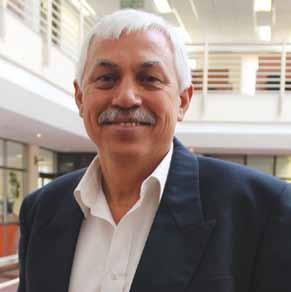
The members of the e nergy Institute are Prof Nico Beute, Prof Philip Lloyd and Prof h arold Annegarn. The institute is supported administratively by Ms Nadia Cassiem and Ms Xolelwa Bashala.
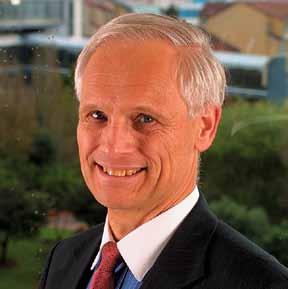
During 2015, the institute relocated to the magnificent new building of the SA Renewable e nergy Technology Centre (SAR e T e C) on the Bellville campus. This has brought the institute back into close contact with the related engineering disciplines which have also moved to this campus. It has also allowed us to support the work of SAR e T e C in training technicians for the growing renewable energy industry in SA.
“ e nergy” is a subject that covers every engineering discipline and impacts every aspect of human
many challenges facing the energy sector. As a result, a key aspect of our work is organising two annual conferences, the Domestic u se of e nergy (D ue ) and the Industrial and Commercial u se of e nergy (IC ue ). These conferences draw together academics and practitioners, and help find answers by fostering dialogue between disciplines. 2015 saw the 23 rd iteration of D ue and the 12 th of IC ue .
Our core business has been supported by numerous outreach activities
• Extension courses
- A three-day course on Bioenergy was run with the assistance of Dr Lutger eltrop of the university of Stuttgart
- Prof Jean-Pierre Favennec, of the Institut Français du Pétrole, Paris, assisted with a five-day course on an introduction to the petroleum industry
• A bilateral exchange programme with the Chinese Agricultural university in the area of cookstove design and testing, funded by the NRF, has seen SA students spending a month in Beijing and Chinese students visiting SA for a similar period
life. It is therefore core to our thinking that we must bring together experts of every kind, so that they may help each other find solutions to the
• The SABS nominated two of our members to serve on the International Standards Organisation Technical Committee 285, developing standards for clean cookstoves; both serve in leadership positions in Working
Prof Nico Beute
beuten@cput.ac.za e nergy is a subject that covers every engineering discipline and impacts every aspect of human life.
Group 1 of the Committee, and as such have input into other working groups
• The Minister of Energy nominated one of our members to serve on the Ministerial Advisory Council on energy, where he has had specific input to the evolving Integrated energy Plan for SA in the area of liquid fuels
• We provided expert analysis of energy activities in numerous local and international forums

• In March, the 23rd Due was held on CPuT’s Cape Town campus, where international experts gave excellent presentations. Among others, Dr Jan Desmet (Ghent university, Belgium) addressed us on Local Storage in LV networks; Sri Chandrasekaran (Ieee standards, uSA) told us about the standards being developed for Smart Grids; Prof Grünwald (Wismar university, Germany), head of PeeSA (Programme for energy efficiency in Southern Africa) gave an overview of the project which promotes international cooperation to build academic and scientific capacity to address the energy efficiency problem in SA and Namibia. In addition, 33 successfully peer-reviewed papers were presented, selected from 43 submissions.
• In March, Prof Annegarn served as external expert advisor to the CSIR Natural Resources and environment Research Advisory Panel Meeting: Global Change.
• In July, Prof Lloyd gave a keynote address energy efficiency and its role in energising
Sub-Saharan Africa at the Zimbabwe energy Regulatory Authority Workshop on energy efficiency in harare.
• In August, the 12th ICue was held in Cape Town, where 182 delegates considered the 55 papers that had been reviewed for acceptance. A particular focus of the conference was energy management, especially demand-side management, and there were some excellent contributions from the mining industry.
• In October, Prof Annegarn presented a keynote address Promoting innovation in gas for mobility to the Gas for Mobility Summit in Johannesburg.
• In October, Prof Lloyd attended the AGM of the International Council of Academies of engineering and Technological Societies in New Delhi, India, where he presented a keynote address on the possible impact of new energyefficient buildings.
• In October, Prof Annegarn visited the College of engineering, China Agricultural university, Beijing, to participate in the 2015 Forum of Renewable energy Promotion in Developing Countries, where he delivered a keynote address and chaired two sessions.
• In November, Prof Annegarn was sponsored by Global Alliance for Clean Cookstoves to participate in the ISO TC285 deliberations in Accra, Ghana, on the further development of the TC 285 standards for testing clean cookstoves.
During this year, seven conference presentations were made, twelve refereed journal and conference contributions were published, and a book and a book chapter were published by members of the institute.
The Flow Process and Rheology Centre, founded in 1995, applies the fundamental principles and techniques of rheology to solve industrial problems such as deformation and flow under different shear, material structure and process flow conditions. Since its formation, the group has produced more than a hundred peer reviewed publications.
The core activities of the group include
• Rheological characterisation and modeling of concentrated emulsions, suspensions, solutions and polymer melts
• Modeling of the phenomena of micro- and nanostructural evolution involved in the mixing, pumping, transportation and storage processes of multiphase systems
• Development of an ultrasound Doppler based in-line rheometry technique for enhanced monitoring and process control for industrial suspensions
• Modeling non-Newtonian flows in pipes, fittings, open channels and pumps
• Instrumentation systems to visualise and measure insitu concentration and particle velocity distributions in
coarse particle settling slurry flow in pipes and complex geometries
The team members are Prof Veruscha Fester, Mr Andrew Sutherland, Dr Reinhardt Kotzé, Prof Raj Chhabra (Indian Institute of Technology, Kanpur, India) and Prof Samier Mukhopadhayay (AeL Mining Services).
Collaborative research with AeL Mining Services, established in 2000 and headed by Prof Irina Masalova, currently comprises a 5-year fundamental study to investigate both theoretically and experimentally the structure-property relationships of super-concentrated emulsion systems.
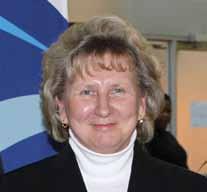
Prof haldenwang and team members Prof Fester and Dr Kotzé were awarded WRC funding for a project titled In-line rheometry for continuous and efficient polymer dosing control to optimise sludge dewatering. This study will evaluate the feasibility of using the locally developed FlowViz system to measure rheology in-line to control flocculent dosage in a filter belt press in order to optimize dewatering efficiency. The work aims to 1) establish variabilities of secondary sludge rheology at filter belt presses in Cape Town; 2) Determine

t he Flow Process and Rheology Centre applies the fundamental principles and techniques of rheology to solve industrial problems
the effect of polymer dosing concentration on the rheology of different concentration sludges at Potsdam WWTP; 3) Determine variation in sludge rheology over time using the Flow-Viz system; 4) Monitor rheological sensitivity to changes in polymer dosing; and 5) establish a relationship between inflow sludge rheology and polymer dosing that could be used to develop a polymer dosing control system.
As part of a funded project with IhS-eSDu (London), Prof Fester generated a significant amount of experimental data for flows through quadrantedge orifice plates, which will enable IhS-eSDu to carry out extensive validation of CFD models for such flows. The fittings test rig, sponsored by NRF funding and constructed and commissioned in 2005, continues to be a useful tool for generating credible experimental data for various types of pipe fittings and valves.
During 2015, Dr Kotzé spent extended periods at SP, the Technical Research Institute of Sweden (Gothenburg), to continue development work and participate in commercialisation activities of the Flow-Viz system. Two pilot plant installations and trial tests were successfully completed for large international companies specialising in food and cosmetic products and another for a major oil company. Dr Kotzé also attended the Innovation Bridge at the CSIR in Pretoria to showcase the latest Flow-Viz technology, and in August 2015 presented it at the CPuT Innovation Showcase. John Shamu, Dr Kotzé’s master’s student, visited SP and completed an innovative study by conducting advanced acoustic characterisation tests of the latest Flow-Viz sensors.
Prof Chhabra presented a course Research Methods for Engineers in October, which was
attended by more than 50 postgraduate students and staff members from the Faculty of engineering. The course was very well received.
Prof haldenwang and Prof Fester were selected president and vice-president respectively of the Southern African Society of Rheology (SASOR). At the biannual international SASOR conference held in Stellenbosch, six papers were presented by students from the group.
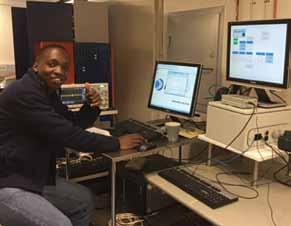
Prof Raj Chhabra (Adjunct Prof) from IIT Kanpur, India visited us in October. he pays annual visits to assist researchers and postgraduate students in the FPRC, and to present a course to the postgraduate students of the faculty.
AeL Mining Services: emulsion project R1 350 000
PPC: Self Compacting Concrete project R114 000
Water Research Commission (WRC): Sludge pipeline design project R400 000

Consulting/service fees R150 000
During 2015, the FPRC produced twelve journal articles, four papers in peer-reviewed conference proceedings, and two other conference papers.
The team members of this research group are Dr Nawaz Mahomed, Mr Llewellyn Cupido (MSc eng), Mr Jecois Fourie (MSc eng) and Mr Max du Plessis (MSc eng).
This programme is funded through the DST’s Technology Localisation Plan, and involves the development of human capital for the foundry industry in advanced foundry-related processes, linked to localisation opportunities in the energy and transport capital projects of state-owned companies.
The current research areas include: Numerical and experimental investigations of directional solidification in vacuum investment casting of superalloys; numerical analysis and optimisation of eB-PVD thermal barrier coatings; experimental and numerical investigations of heat treatment of non-ferrous alloys; and other foundry-related areas.
Dr Nawaz Mahomed
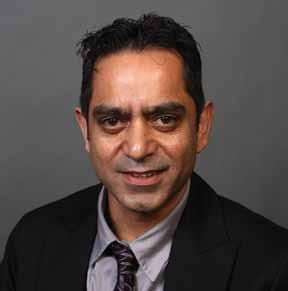
mahomedn@cput.ac.za
The research group uses specialised software for design and metal casting, which include Magmasoft and Procast, to analyse and optimise a range of casting processes. The programme is part of a national network of expert centres, which include Mintek, the Metal Casting Technology Station at uJ, and the Rapid Product Development Laboratory at Su.
TshepisoSAT is still doing well, having been in space for almost two years. Developed by postgraduate students enrolled in the Satellite Systems Engineering Programme at F’SATI, TshepisoSAT is the first nanosatellite to be developed on the African continent.
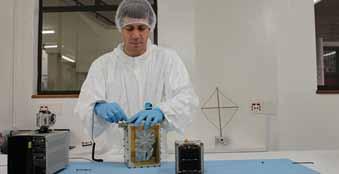
Engineer, Mr Leon Steenkamp, who monitors the nanosatellite’s daily movements from the ground station at the Bellville campus, says the mission is going according to plan. “We are communicating with it every day and receiving photographs and telemetry (data). It has shown that it can survive in space.”
TshepisoSAT has survived the harsh radiation from the sun, extreme temperature fluctuations, a strong solar storm and two close encounters with defunct Russian satellites. The nanosatellite carries a high-frequency radio beacon used to study the propagation of radio waves through the ionosphere, providing valuable space weather data to the South African National Space Agency Space Science Directorate.
Mr Steenkamp says his team recently travelled to the USA, where they presented on the progress of the nanosatellite at the 12th Annual CubeSat Developers’ Workshop.
TshepisoSAT’s mission is still on course
F’SATI hosts the CPuT postgraduate programme in Satellite Systems engineering which specialises in space science and technology research and innovation based on the nanosatellite platform. F’SATI offers postgraduate degrees, including an international MSc in electronic Systems engineering, through a partnering institution in France.
Prof Robert van Zyl vanzylr@cput.ac.za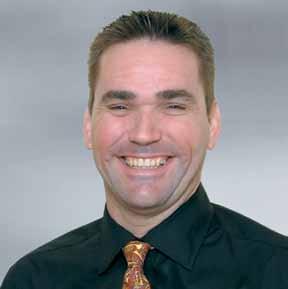
The centre’s vision is to become a uniquely indigenous, world-class hub with an end-to-end nanosatellite capability in the design, manufacture, operations and appropriation of data for the provision of cost-effective spacebased solutions to the pressing socio-economic challenges facing Africa. It has a multidisciplinary training programme that encompasses theory, research, professional development and innovation.
The professional development and innovation phases are conducted in the ASIC. Advanced communications subsystems are being developed for the international nanosatellite market and distributed globally through a strategic commercial partnership with Clyde Space, Scotland. hosted in state-of-the-art facilities, the
programme develops nanosatellite platforms for applications such as space weather research, resource management, and communications and technology validation. ZACuBe-2, a very advanced nanosatellite that is currently being developed, will provide data for maritime domain awareness. Future missions will see constellations of nanosatellites being deployed.
(F’SATI) AND A FRICA S PAC e I NNOVATION Ce NTR e (ASIC)
F’ s
At I hosts the CPU t postgraduate programme in s atellite s ystems e ngineering which specialises in space science and technology research and innovation based on the nanosatellite platform.

Mr Mandla Maseko is about to make history when he becomes the first black South African to venture out into space after being handpicked out of more than a million hopefuls as one of 23 winners of the global Axe Apollo Space Academy competition. The prize is an hour long sub-orbital trip of approximately 100 kilometres, a journey that would normally cost over R1 million.
In January, Mr Maseko visited CPUT’s world renowned F’SATI unit. F’SATI designed and built Africa’s first nanosatellite, TshepisoSAT, which was built by a group of 40 postgraduate students and launched in November 2013. Mr Maseko addressed learners and students at Belville campus saying, “The launch of the nanosatellite showed me that anything is possible through hard work”.
Unable to afford the tuition fees for his civil engineering degree, Mr Maseko had dropped out. However, after hearing about the competition on a local radio station, this young man set about making his dream of doing something out of the ordinary with his life a reality. “I wanted to do something that will motivate and inspire the youth of South Africa and Africa as a whole, and hopefully to some extent, the youth worldwide, and show that it doesn’t matter what background you come from, you can have whatever you want as long as you put hard work and determination into it.”
(http://www.bbc.com/news/magazine-25844863)
When he returns from his space trip, Mr Maseko hopes to finish his civil engineering studies He would also like to study aeronautical engineering and hopefully qualify as a mission specialist, so that one day he will be able to plant the South African flag on the moon.
The group’s energy activities are currently focussed on combustion stack height determination and diesel engine performance testing when running on biodiesel and biofuel blends.
Mr Selbourne Makhomo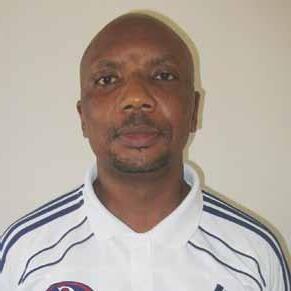
makhomos@cput.ac.za
Mr Ilyas Omaromari@cput.ac.za
Catalytic activities of iron oxide and iron oxide-based compositematerials have been investigated by Dr Chowdhury. Among many others, a novel -FeOOh/NiO composite material that exhibited potential application in the catalytic ozonation degradation of 4-chlorophenol was developed and evaluated together with co-workers from uWC and the Chemistry department at CPuT.
hydrogen generation. he also presented an invited talk titled Nanocatalysis at CPuT at the 2nd International exploratory Workshop on Photoelectrochemistry, Catalysis and X-Ray Spectroscopy.
The Water Research Commission project (Grant no. WRC K5/2386 of R1.25 million), Nanoparticles for the treatment of industrial scale effluents - particularly the removal of organic contaminants from textile effluents using nano-TiO2,was successfully completed by Prof Greyling and Prof Fester, together with collaborators from uJ, harare Institute of Technology and industrial partner Wade edwards of ATL-hydro.
Dr Chowdhury spent three months at eMPA in the laboratory of Dr Artur Braun, one of the Foreign Policy Magazine’s Top100 Leading Global Thinkers of 2014. During that time, he gained valuable experience on fabrication and designing of a photo electrochemical cell for
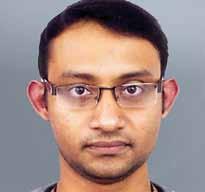
Prof Fester’s group investigated the critical process parameters and their interactions on the continuous hydrothermal synthesis of iron oxide nanoparticles. The critical process parameters for maximum product yield and high crystallinity with minimum effect on average particle size and size distribution was found to be the interaction between
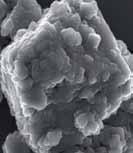
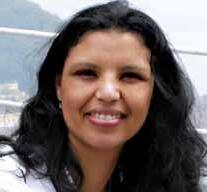
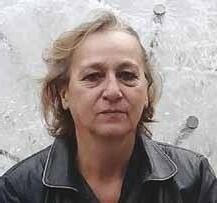
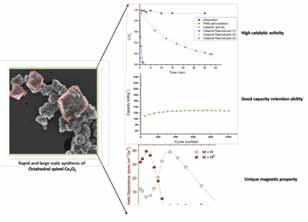
temperature and flow rate. This knowledge could be key for successfulup-scaling of the ChS process.
The highlight for the year for the group was certainly the development of rapid and largescale synthesis of Co3O4octahedron particles using the continuous hydrothermal synthesis (ChS) laboratory scale pilot plant. The cobaltoxidenanopowder exhibits very good super-capacitance, uniquemagnetic propertiesand very high catalyticactivity. It holds great promise, especially for the treatment of textile waste water.
Five journal papers were published during the year, and two master’s students graduated. Three BTech and five in-service training students were trained by the group.
The PLMCC team members are Mr Michael Petersen (Coordinator/Manager), Mr Donovan Cogan (Research Assistant), Mr Michael Khan Tal (Research Assistant), Mr Adriaan Broodryk (Research Assistant) and Mr Thaafier Israel (Admin).
The centre is an initiative in collaboration with the French Ministry of education and Research, Dassault Systemes and CPuT, and conducts research in product design and development, system engineering (Se), and product lifecycle management (PLM) through the use of high end CAD, CAM, CAe and PDM software. The PLMCC hosts and supervises projects at BTech and MTech levels, and trains students, technicians, engineers and designers to use this software, and to apply PLM and Se methodology.
Mr Michael Petersen petersenm@cput.ac.za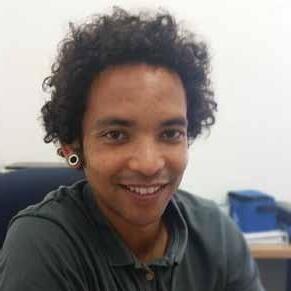
t he centre conducts research in product design and development, system engineering, and product lifecycle management.
t he highlight for the year was certainly the development of rapid and large-scale synthesis of Co 3o 4octahedron particles using the continuous hydrothermal synthesis laboratory scale pilot plant.
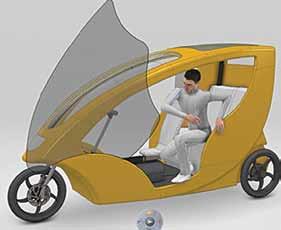
Micro-mobility vehicles could be the solution to traffic congestion, poor public transport integration, and carbon emissions. A Research and Development Officer at the CPUT PLMCC, Mr Neil de Vos, is an advocate of micro-mobility vehicles, which is the focus of his master’s research project.
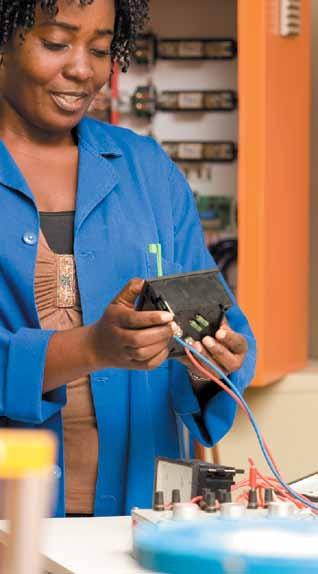
Mr de Vos says, given the current global transport situation, people are being forced to drastically rethink traditional transport. In SA, the lack of public transport services in key economic corridors coupled with the absence of an effective inner city transport system endorses the integration of micro-mobility vehicles. As part of his research, Mr de Vos has been working with the local company, Mellowcabs, which operates fully electric micro-mobility vehicles, and is set to introduce them in SA and abroad. His research is focused on ergonomics and improving design aspects to ensure all year round use of the vehicles, which currently have no doors.
“The design process is focused on creating a new side door, however, at the same time the product should be elegant, smart, fashionable, comfortable, economical, manoeuvrable and safe,” he says. To conduct his research, he is making use of CATIA, a highly specialised virtual product lifecycle management design programme that is housed at the PLMCC. This allows him to get immediate feedback in terms of physical-based data that correspond to how the door could hinder the passengers’ interaction when they enter and exit the vehicle. “This enables us to try various designs to perform a comparative study without building a single physical prototype,” he says.
Despite their size, Mr de Vos is positive that micro-mobility vehicles will play huge role in revolutionising the transport system. “I am very interested to see where we can go with something as small as this.”
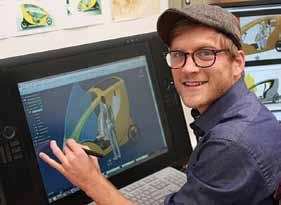
SAReTeC is the first National Renewable energy Technology Centre in South Africa. It is situated on CPuT’s Bellville campus.
SAReTeC offers specialised industry-related and accredited training for the entire renewable energy (Re) industry, along with tailored short courses and workshops. The centre receives funding from the DheT through the National Skills Fund (NSF) and substantial support from the German Ministry for economic Cooperation and Development, through the South African-German energy Programme (SAGeN), implemented by the GIZ, the South African National energy Development Institute (SANeDI) and Green Cape.
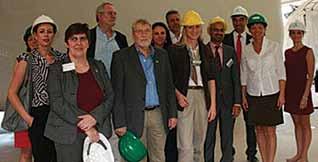 Mr Naim Rassool
Mr Naim Rassool
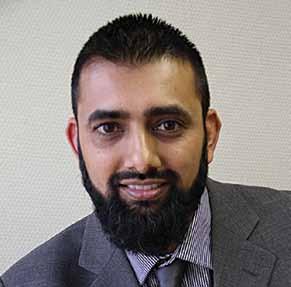
rassooln@cput.ac.za
As a National Centre, SAReTeC endeavours to make locally developed technologies more accessible to the renewable energy industry in partnership with education and research institutions in all provinces. The centre has established strong partnerships with government, academia, industry, associations and private sector companies within the renewable energy sector. The facility is housed in a green building designed to showcase the use of renewable energy and energy efficient technology.
A delegation of scientists from various institutions in Germany visited SARETEC on the Bellville campus when it opened in March. Led by the Prime Minister of the State of Hesse, Mr Dieter Sommer, the delegation was taken through a presentation on the renewable energy situation in SA and SARETEC’s role in it. Mr Sommer, a senior adviser at SARETEC, then showed the visitors the new facility. Construction of the centre started last year as a result of a strategic partnership between Nordex, German International Cooperation (GIZ) and CPUT. The centre will train wind turbine service technicians.
Dr Nawaz Mahomed, Dean of the Faculty of Engineering, welcomed the visitors and explained that the renewable energy sector in SA is not supported as much as it should be, but said that will hopefully change with the opening of the new centre. He said CPUT doesn’t want to be seen as owner of the facility but rather as custodian. “We need to make this an open model which can be replicated at other areas of the country”.
Dr Manfred Dutschke, Skills Development Consultant at Greencape, said they have been seconded in terms of the Bavarian Western Cape Partnership, which supports the project. He said they are looking at improving skills and qualifications.
a national training centre, but it needs to evolve [to have] the capacity to assist in the transfer and commercialisation of technology from academia into the renewable energy private sector for the benefit of the South African economy”. Part of this goal will see SARETEC create strong links with academia throughout the country and establish a strong presence in provinces close to renewable energy infrastructure projects.
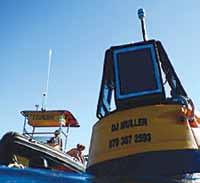
CPUT is on its way to becoming a leader in renewable energy skills and technology development on the African continent. Driving this agenda is Mr Naim Rassool, who has been appointed as the Director of the South African Renewable Energy Technology Centre (SARETEC). Based on the Bellville campus, SARETEC is the first national renewable energy technology centre in SA to deliver specialised training, education and services to the renewable energy sector.
An engineer by trade, Mr Rassool comes with strong credentials, having held the position of CEO of USC Metering (Pty) Ltd, Western Cape Regional Head of the TIA, as well as being the Commercialisation Manager at the Innovation Fund. With diverse experience in the engineering sector, Mr Rassool was exposed to the renewable energy sector during his time as a consulting engineer for CSIR. Whilst at TIA, he was involved in investments into renewable energy ventures in the private industry as well as in universities and science councils.
Mr Rassool has a bold vision for the facility, “SARETEC was set up and will remain primarily
The centre also hopes to offer the private sector more than just training solutions, i.e. technology solutions that can address a need or problem. Funded by the National Skills Fund, through the DHET, Mr Rassool also plans to work towards ensuring that the facility becomes financially self-sustainable. This would be achieved through aggressively marketing its training services to the private sector and introducing other ancillary offerings that are revenue generating.
“The Minister of Energy very recently announced that SA will allocate an additional 6 300 megawatts of renewable energy, adding to the 5 200 megawatts already being procured, to supply into the national energy grid. Hence the need for more technician skills for both wind and solar farms will become of paramount importance as we move forward,” he says.

SARETEC will also rollout refresher courses for current technicians in the field as well as train graduates for the renewable energy sector. Mr Rassool says, “The fact that we have a dedicated facility with industry-relevant equipment and training modules, will ensure that we make a huge difference in addressing the skills required in South African wind and solar farms”.
Thinking out-of-the-box has resulted in Mr Dirk Muller opting for an innovative approach to solving a problem he identified whilst working on a research project. A staff member at the TIA Adaptronics AMTL, Mr Muller has designed and manufactured a prototype coastal metocean buoy.
Buoys are used by industry and government for oceanographic and atmospheric data sampling. The data collected is crucial for severe weather prediction, disaster management, oceanographic research and coastal management.
During his internship at the Bayworld Centre for Research and Education, Mr Muller identified a shortfall in current buoy system functionality; technicians have to remove the entire buoy from the ocean for servicing with the result that crucial data cannot be collected during service periods. To counter this problem, he has developed an improved buoy with a modular design to simplify the operational procedures.
Thanks to his ingenious design, technicians will now be able to easily service the buoy by simply removing the electronic module and replacing it with a temporary service module. “This design will cut service costs and will ensure that minimal data is lost,” says Mr Muller. The design is sleek and has improved solar power capabilities and stability.
The AMTL team comprises Prof O Philander (director), Mr e erfort (operations manager) and Mr M Riddles (technical manager). Focus area leaders are Prof G Oliver (Ocean engineering), Prof M M’Rithaa (universal Design), Dr A Nemraui (Adaptronics) and Ms F harris (Automotive Technologies). Technical staff are Mr L Matshoba, Mr D Muller, Mr C Onochi, Mr D Wright, Mr G Coetzee and Mr J Cairns. Workshop staff are Mr K Lategan, Mr R Busch and Mr R Arendse.
The CPuT Adaptronics AMTL was established in 2007 by Prof Oscar Philander. The primary objective of the unit is to specialise as a national manufacturing, research and educational resource centre for adaptronic technologies in SA. Adaptronics is technology that integrates sensor and actuator functions into materials, components and structures so that they may react to environment stimuli thus making them intelligent.
Prof Oscar Philander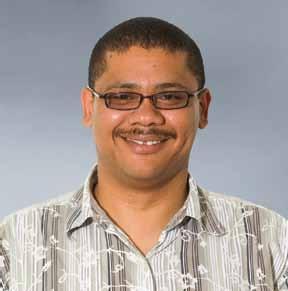
philandero@cput.ac.za
DeDAT of the Western Cape Provincial Government provided grant funding to establish the CPuT Adaptronics AMTL, and the DST through the AMTS (now the TIA) provided grant funding for capital equipment purchases. Based on the technology’s activities, innovation, and successes of the CPuT Adaptronics AMTL, it was officially incorporated into
the TIA’s Technology Station programme in March 2013, and became the 18th Technology Station in SA. A new vision and mission for the unit was formulated, focusing primarily on developing human capital in scarce skills with a specific drive towards innovation, technology, and commercialisation for SA’s engineering industry.
There are five research and technology focus areas of specialisation
• Adaptronic Technology: Research and technology projects into the development of intelligent structures, MeMS and nanosensing devices
• Unmanned Platforms: Research and technology development of nano, micro, mini and close/ short range unmanned aerial vehicles (uAVs) for both military and civilian applications
• Automotive Technologies: Research and technology projects related to motorsport and alternative/green propulsion systems (Formula Student competition)
• Ocean Engineering: Research and technology projects related to maritime applications
• Universal Design: Technology projects providing access to physically challenged individuals (Nicky’s Drive research simulator and demonstrator)
The Formula Student team are designing and building CPUT’s first electric vehicle. Shareef Kariem, an MTech Mechanical Engineering student, spent several weeks in Germany this year, as a participant of the Vula Innoprenuer E-Mobility Programme. An initiative of IBA Global and the TIA, the programme trains 100 individuals in the design and manufacture of electric vehicles each year. Shareef says he is excited to be part of this innovative project as electric vehicles will offer individuals an environmentally friendly driving experience. “SA will have to move into this industry,” he says.
Following his return to Cape Town, Shareef and his team, embarked on a year-long training programme. Working in small groups, the participants will also be offered the opportunity to launch technology start-ups that will produce sub-components for SA’s emerging electric vehicle industry.
Shareef says he also plans to use his skills to assist the Formula Student team to design and build an electric racing car, which they hope to enter into the future Formula Student competition. The Formula Student programme is based at CPUT’s TIA Adaptronics Advanced Manufacturing Technology Laboratory.
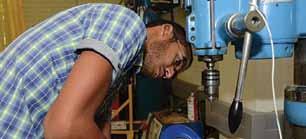
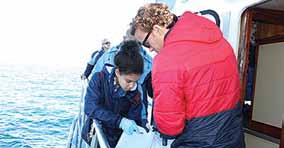
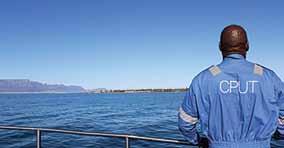
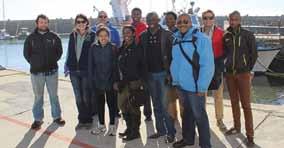
World Ocean Sampling Day is a global campaign which promotes the simultaneous sampling of microbes in the world’s oceans to provide a global set of samples that are all related in time, space and respective environments. CPUT Maritime Science and Adaptronic Advanced Manufacturing Technology students participated in one of its ocean sampling exercise in Table Bay in June. Approximately 70% of the Earth’s surface is covered by ocean, and this snapshot of the marine environment will help preserve the well-being of life on the planet.
CPUT’s Fathom 10 vessel transported a team from CPUT, UWC, staff from Lwandle Marine Environmental Services and learners from the Lawhill Maritime Centre based at Simon’s Town School to a location near Robben Island for the sample gathering. The samples were analysed within hours of collection by a Biotechnologist from UWC, and then mailed to Germany for the international part of the exercise.
This is the second year Cape Town has participated in the exercise, and Mr Andrew Russell from Lwandle says it is a unique opportunity to show learners how accessible a career in Marine Science can be. The learners assisted by drawing the samples, labelling them, then working in the lab to analyse the seawater. Seawater microbes are the most underresearched organisms on earth despite containing a wealth of life-saving potential, especially when one considers that HIV and cancer treatments have been derived from microbes found in the sea.
The TSCT is located in the Faculty of engineering on the Bellville campus. The unit was established to assist the clothing and textile industry with innovation support in order to become more competitive. This provides feedback into teaching, learning and research at CPuT. By engaging staff and students in its programmes, the TSCT assists CPuT to become increasingly responsive to industry needs. TIA is the main sponsor of the TSCT.
The TSCT provides the following services to the clothing, textile and related sectors
Mr Shamil Isaacs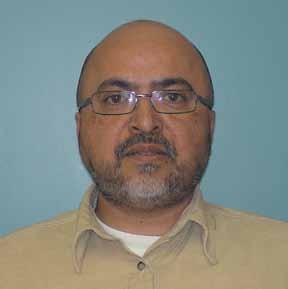
isaacssh@cput.ac.za
techstation@cput.ac.za
http://active.cput.ac.za/tsct
manufacturing advisory services examples include manufacturing audits and assessment; industrial engineering services for the improvement of productivity, including process layout, optimising sewing methods and work-study; implementation of production systems to improve production; and advice on the acquisition of new or improved technology.
The TSCT has a number of specialised machines which are available by appointment to small businesses.
The laboratory at the TSCT provides product testing and an analysis service to the clothing and textile and related industries, and is accredited by Woolworths.
CPuT has been appointed by the Fibre Processing and Manufacturing Sector education Training Authority (FP&M SeTA) as an Institute of Sectoral Occupational excellence (ISOe).
The TSCT offers a menu of short learning programmes and has been appointed by the FP&M SeTA as a host training provider, which allows the TSCT to offer learnerships in conjunction with qualifying firms.
Services include technical drawing, pattern development, sample making, pattern grading, marker making and 3D body scanning.
Firms are provided services as a group to facilitate cross-learning and sharing of resources and cost. Clustering of small businesses into joint training and project interventions allows for network facilitation and benchmarking.
The TSCT undertakes product and process development studies for clothing and textile companies, including the identification of hazardous substances in textiles and the treatment of textile effluent. It also provides size and fit studies using a 3D body scanner.
An innovative method of determining body measurements will help South African clothing manufacturers to develop garments with a better fit. The country’s first portable 3D body scanner has been set up at CPUT’s TSCT and was recently unveiled to the industry. This innovative device was acquired from Germany, thanks to sponsorship from the TIA.
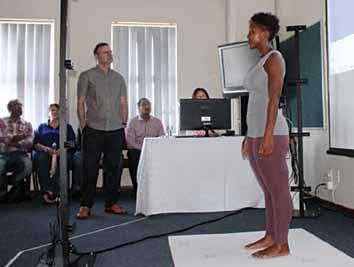
Director of the TSCT, Mr Shamil Isaacs, says the machine will revolutionise SA’s clothing industry, helping to produce better sized garments for a diverse consumer base. Instead of relying on the traditional measuring tape, the portable scanner uses infrared technology to measure, generating up to 44 different measurements in a few seconds, with a set up time of only 30 minutes.
Mr Isaacs says the scanner will allow for large-scale measurement exercises that could result in the development of the first sizing chart for the South African population. “A current sizing survey undertaken in Mexico, where about 109 million are living, will at least have to measure 18 000 people to get an accurate chart. Here in SA, we need to measure at least 6 000 people for us to get an accurate size chart,” he says.
Prof Michael Ernst of the University of Niederrhein, Germany, who demonstrated the machine’s capabilities, says it has multiple applications, ranging from sizing surveys to virtual product design. The machine generates avatars from the data recorded and also allows clothing manufacturers to conduct virtual fittings, says Prof Ernst, who is an adjunct professor at CPUT.
Clothing and Textiles lecturer, Ms Shaheeda September, is exploring the use of ultrasonic welding in the production of sport clothing for cyclists as part of her master’s degree research. The inspiration for her paper, titled Ultrasonic welding – Innovative joining technology for sporttech application, was her sibling’s involvement in cycling. “My brother cycles and I always wondered about how comfortable the clothing is that cyclists wear because they are on a bicycle for so many hours. I then started to explore alternatives to the mainstream garments,” says Ms September.
Unlike traditional sewing methods where garments are joined by needle and thread, ultrasonic welding uses high frequency ultrasonic vibrations to join garments. “This is an innovative way of melting synthetic fabric,” says Ms September. “In terms of comfort, the seam is really flat and there is less chaffing on the skin. Traditional sewing is still a popular method of joining materials but has disadvantages such as discontinuous joints which produce perforated seams and sewing thread deteriorating with time, and sewing speed limitations.” Ultrasonic welding requires no needles, solvents, adhesives, mechanical fasteners, or other consumables.
Ms September, who is collaborating on this project with a local producer of sport clothing, has already identified weldable technical textiles which can be used to produce garments suitable for cycling and will soon start the process of testing the strength of the seams.
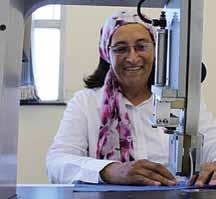
3D body scanner to revolutionise SA’s clothing industry Researcher explores innovative technology for sports clothing production
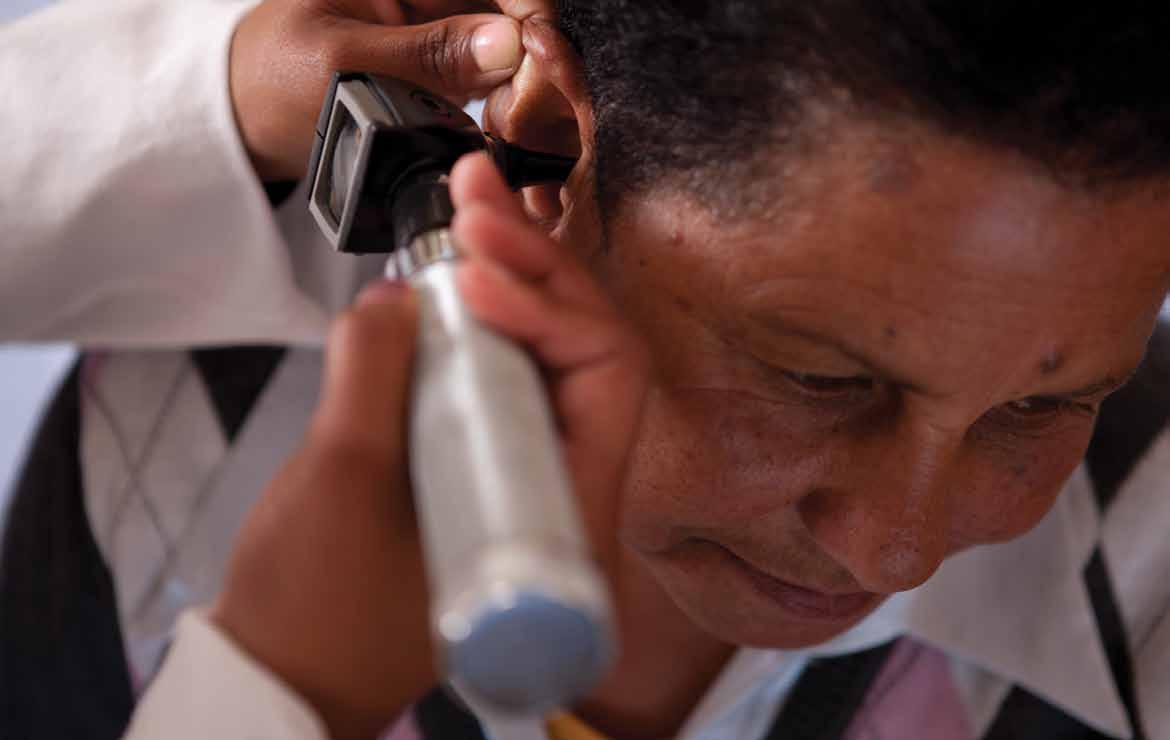
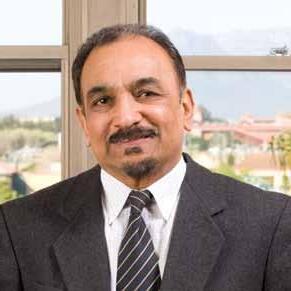
health remains one of the most critical and prominent issues in society, in our country, and indeed on our continent.
2015 was yet another pivotal year for research in the Faculty of health & Wellness Sciences. The recent introduction of the 4-year professional degrees has stimulated an interest in research among undergraduate students, which bodes well for an increased number of postgraduate research students in the future.
The main focus of our academics is to translate their research into tangible health intervention plans for the public. Championing this cause is research associated with the high prevalence of diabetes and obesity in local urban and peri-urban areas in the Western Cape. This is a clear example of how a clinical epidemiological study is considered significant in the understanding and promotion of healthcare in under-served communities.
The quality and quantity of research output has improved throughout the year. We are particularly proud of those researchers who have contributed to chapters in books. Staff, as well as students,
presented their research findings at prestigious conferences. Irrespective of our small staff complement engaged with research, we have sustained an appropriate level of
publications in refereed journals, and there are indications that this will grow in the future.
Our research drive is promising, with an increased number of graduates at master’s and doctoral levels. As always, we are appreciative of those individuals who offer their ideas, support and encouragement to our researchers. Through these means, we are together on a continuous journey of making a contribution towards a greater understanding in health science, and translating this into making the appropriate health interventions in our communities, in South Africa and on our continent.
Ten of our students completed their Magister Technologiae (MTech) degrees this year.
the main focus of our academics is to translate research into tangible health intervention plans for the public.
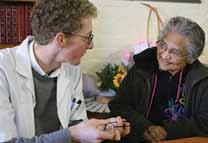
Members of two Cape Flats senior centres have found that small adjustments make a big difference thanks to CPUT Ophthalmic Science students. The students visited the Lotus River and Belgravia CPOA to assist members with everyday eye conditions like ill-fitting glasses, diabetes related eye problems and the common dry eye, with symptoms including a weepy, red or itchy eye.
Students also handed out brochures with information on accessing cataract surgery and glasses, as well as spectacle cleaning cloths and inexpensive eye drops and gels. Ophthalmic Science graduates become dispensing opticians and are able to craft a pair of spectacles and accompanying lenses. CPUT is the only institution in SA to offer this qualification.
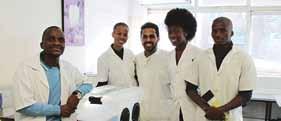
Student Jaydee Rex and his team manufactured a cost effective version of a sandblast machine that is key in the production of metal dentures. To keep costs down, they made use of everyday products, such as a plastic tub, a sandblaster gun and various vents. The team spent just over R1 000 to recreate a machine that normally costs over R30 000.
Ms Francis Dodgen was one of the few residents with perfectly fitted glasses; however she did understand a lot more about dry eyes after second-year student Bradley Atkinson explained more about the condition. Her friend, Ms Bernice Jones, says she had always applied pressure to her eyes to try and clear her vision. “Now I know I only have to add some drops. After he did that, my vision is much better,” she says.
Each year, lecturer Mr Abduraghman Latief asks his BTech students to create a cheaper prototype of one of the machines in their laboratories, which functions just as well or even better. Mr Latief says the project is always very successful with students eager to participate. “They are not engineers, but this is a good exercise for them to see how things are put together,” he says.
Student Abdul Rawood and his team developed a spotwelder, a device that is instrumental in the production of orthodontic appliances. The current spot-welders are labour-intensive, however, these students designed a far more convenient one that is powered through a voice app.
Student Thando Jita says being involved in the project has not only helped the class to improve their ability to work as a team, but showed them the value of thinking out-of-the-box.
The event was made possible thanks to donations from Genop Healthcare, the Xailin eye care range and Essilor. The visit forms part of Service Learning, a valuable experiential component of all CPUT courses.
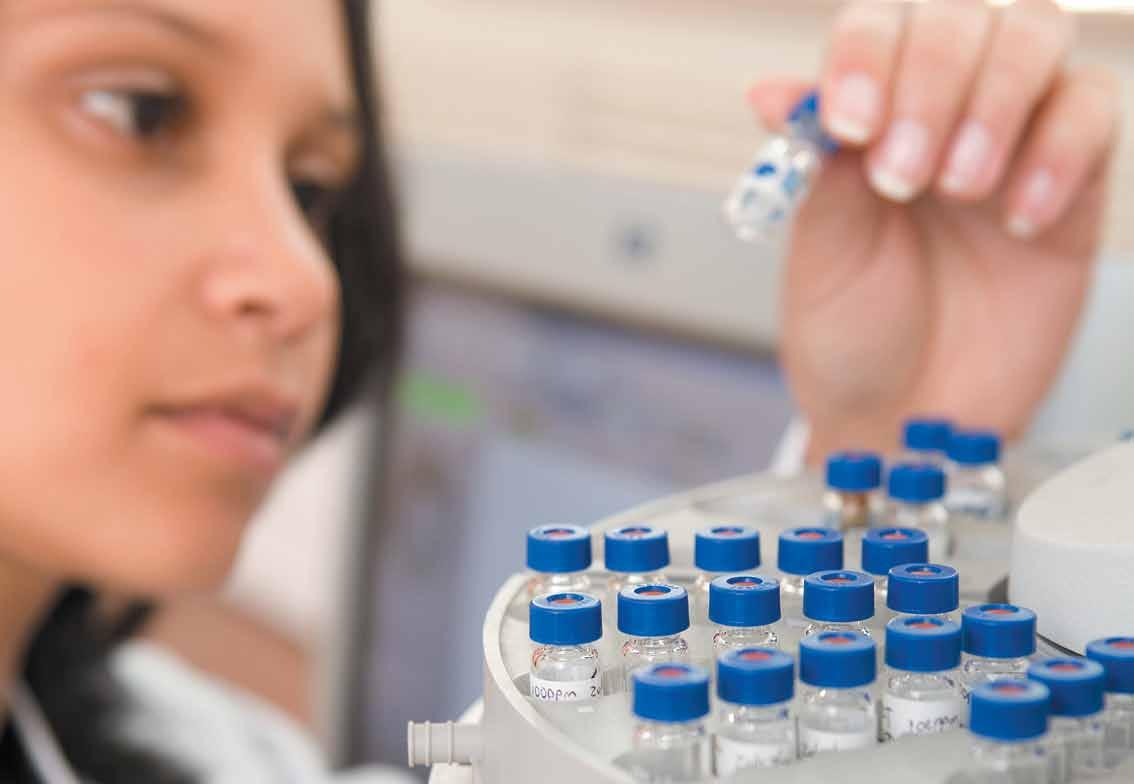
The main focus area of this research group is water-borne pathogens, specifically bacteria and viruses in wastewater, river water and roof-harvested rain water. Projects are carried out in collaboration with the Water Research Group within the Department of Microbiology, Stellenbosch university.
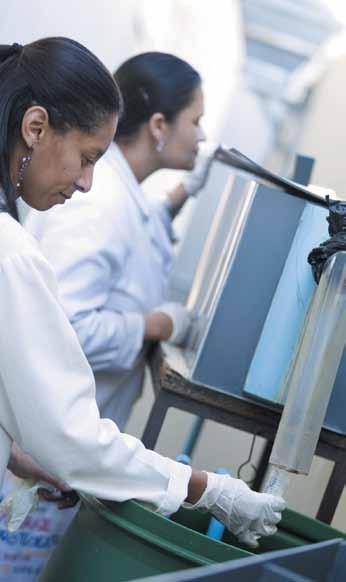 Prof Sehaam Khan khans@cput.ac.za
Prof Sehaam Khan khans@cput.ac.za
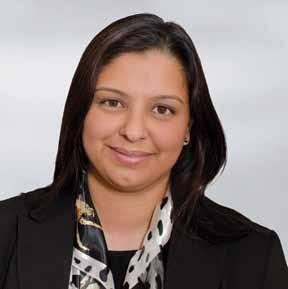
t he main focus area of this research group is water-borne pathogens.
The mission of the Cardiometabolic health Research unit is to create an environment for collaborative solutions in order to better understand the underlying reasons for the increases in diabetes and cardiovascular diseases, with the goal of improving cardiometabolic health in South Africa and beyond.
In this unit, the research cluster employs an integrated research programme focusing on obesity, cardiovascular risk, metabolic syndrome, chronic kidney diseases and diabetes. The unit strives to accelerate research advances by employing innovative, multidisciplinary intra- and inter-institutional collaborative approaches aimed at improving cardiometabolic health through translation to healthy lifestyles, early diagnosis, and cost-effective prevention and management of these diseases. Much of the group’s work comprises communitybased studies, specifically Cape Town’s Bellville South.
The research unit is involved in studies including periodontal diseases, immune activation, hepatic steatosis, pollution, Vitamin D deficiency and insufficiency, and genetic and epigenetic novel risk factors for cardiometabolic traits in mixed-ancestry South Africans, funded by the South African Medical Research Council (SAMRC) Flagship, the NRF and CPuT.
The Cardiometabolic health Research unit is dedicated to research, which includes not only infrastructure like a laboratory, but also space for clinical examinations of participants, including oral health assessments, research fellows and graduate students. The unit provides researchers
with much needed characterised cohorts and a biobank to carry out novel and technologically advanced research.

Our research is broad, spanning epidemiology to discovery-based laboratory science. Much of the work is interdisciplinary, integrating with the Non-Communicable Diseases Research unit (NCDRu), SAMRC; the Department of Pathology, Department Interdisciplinary health Sciences, Su; and the Department of Dentistry, uWC; and the South African National Bioinformatics Institute. International collaborations include the Centre for Cardiovascular Genetics, British heart Foundation Laboratories; the Institute of Cardiovascular Science, university College London; and the Department of Pathology and Molecular Medicine, McMaster university, Canada.
Major achievements during 2015 include the graduation of one master’s and two doctoral fellows. Prof Matsha visited harvard Medical School, uSA, and was also invited guest speaker at a number of conferences including the DSThoward university Advance-It Women in Stem Conference. The unit published eleven manuscripts, and members of the group presented research findings at both national and international conferences.

o ur research is broad, spanning epidemiology to discovery-based laboratory science.
The main aims of the OSRC are to contribute to existing knowledge regarding the role of oxidative stress in health and disease development and to devise innovative strategies for the prevention of disease in order to improve our population’s health status.
emphasis is placed on the use of indigenous medicinal plants or derived phytochemicals. We elucidate the possible mechanisms of protection afforded by these, establish biomarkers of exposure, efficacy and bioavailability, and investigate their possible drug interaction. Research uptake is very important, and we prioritise educating and informing the public of our research outcomes.
The centre houses an analytical testing laboratory, which provides training to postgraduate students, and delivers a testing service to the food and beverage industry and other stakeholders. 2015 marks our second year as part of CPuT’s new research institute, IBMB. This has proven to be a fruitful partnership with access to new research expertise, collaborations and international exposure opportunities for our scientists and students.
A highlight in 2015 for members of the OSRC was the opportunity to meet the true Redox pioneer, Prof Dr helmut Sies, the founder of the concept of “oxidative stress”, at the SFRR-Africa conference in Mauritius.
1. medicinal Plant Research: leader Prof Jl marnewick
2015 has been a particular good year for Rooibos Research as Prof Marnewick and her team were awarded one of CPuT’s Prestigious Projects (R5 million) as well as an innovation grant (R500 000) from the TIA for the development of an exciting new rooibos nutraceutical. Prof Marnewick appeared as guest speaker at Annique’s Premiere event; African extract’s launch of their new rooibos skin care range for the mature skin; and at a u3A meeting at WITS Medical School (as part of the lecture series done by the Royal Society of SA). She was also a guest on SABC’s radio station RSG during SA heart & Stroke Week and featured in the July edition of Get It magazine. Two postdoctoral fellows, Dr Popoola and Dr Lawal, joined our group with specific focus on the skin health-enhancing properties of Rooibos and its protective properties against diesel exhaust particles, in collaboration with uWC and uCT. Our Rooibos studies featured internationally, from Sport Science (uK) to Free Radical Research (Mauritius), resulting in a variety of outputs. Prof Marnewick was invited as speaker and session chair at the 9th International Conference of the Society of Free Radical Research (SFRR)-Africa in July.
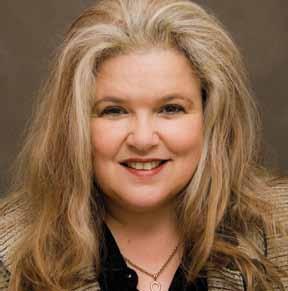
leader Dr liana van der Westhuizen
This new niche area is being established in order to support projects under the Bioeconomy and Biotechnology and human and Social Dynamics Focus Areas. It is an integral part of the Production of a rooibos-based product with enhanced antioxidant capacity and the Bioavailability projects within the CPuT Prestigious Project. Three undergraduate students from Bergen university College, Norway completed their 3rd year research project with an initial study on the bioavailability of the main rooibos (Aspalathus linearis) flavonoids by analysing human blood. Further research on the bioavailability of rooibos flavonoids in humans was presented as oral talks at the National Indigenous Plant use Forum in Clanwilliam in June, and at the International Society of Free Radical Research-Africa Conference in Mauritius in July.
leader Dr Dirk bester
Focused around cardiovascular health, this group’s studies involve mostly dietary supplementation of potential medicinal plants (RPO, Buriti oil, Rooibos and Kolaviron) using an experimental animal model, measuring cardiac function and biochemistry, which includes signalling pathways, such as PKB/Akt, MAPkinases and oxidative stress markers. In 2015, the group relocated its laboratories to the OSRC and started projects which aim to apply Rooibos
and honeybush as treatments rather than dietary supplements in a cardiovascular setting. The group was well represented at conferences during 2015, with two oral presentations, and four published abstract proceedings. Five collaborative studies are underway with partners in the university of Szeged and Bergen university College (Norway), Carotino and Malaysia Palm Oil Board, the Nigerian Research Institute, Ibadan university (Nigeria), and Stellenbosch university.
The current focus of this group is medicinal plants and the treatment and management of diabetes, and its research contributes significantly to knowledge generation and
capacity building. Diabetes has a rapidly increasing prevalence globally and remains one of the most serious and challenging health problems in Africa. It is known that metabolic disturbances contribute massively to most diabetic complications such as nephrotoxicity and hepatic injury. Also, reactive oxygen species and inflammatory mediators have been implicated in diabetic complications. The treatment for diabetes mellitus includes hypoglycemic agents such as insulin and glibenclamide. however, the high cost and side effects arising from the use of these drugs are of major concern. This has prompted the exploration of the vast reserves of medicinal plants such as Garcinia kola, Moringa species and other plants for their anti-diabetic, antiinflammatory, antioxidant, antigenotoxic and hepatoprotective activities. The group produced six scientific publications in accredited journals and three conference presentations in 2015. One master’s student, Mediline Goboza, graduated cum laude. Prof Oguntibeju received an Award for excellence from the Association of Medical Laboratory Scientists of Nigeria in recognition of his contribution to biomedical research. he also delivered the key note address at the 51st National Scientific Conference of the Association of Medical Laboratory Scientists of Nigeria (AMLSN) held in Nigeria in October. Particularly memorable was the inaugural address of Prof Oguntibeju, which focused on the potential role of medicinal plants in the management and treatment on diabetes.
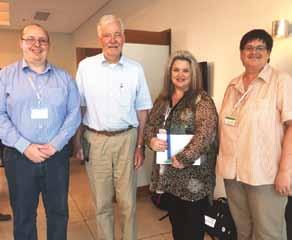
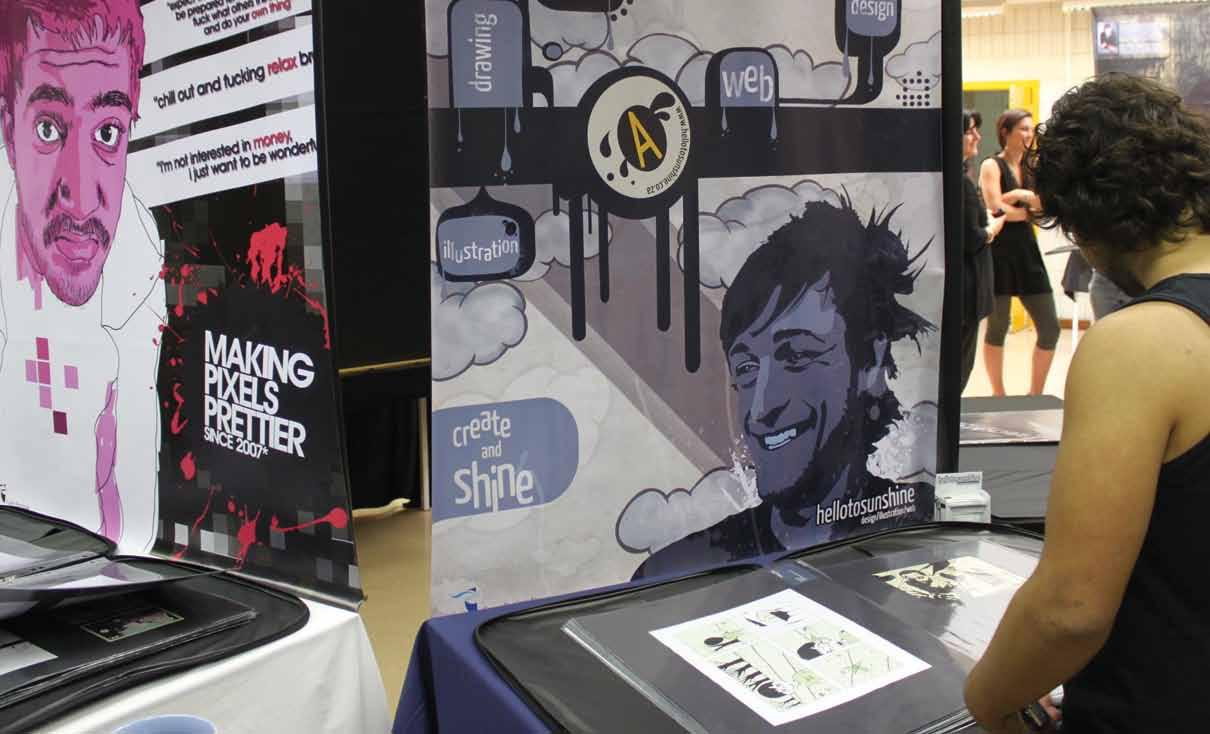

2015 has been a year of consolidation for the faculty research effort. One of the highlights of our year has been the presentation of our Design Development and Research conference in association with the university of Georgia, Athens, Georgia, uSA.
Furthermore, we have aligned our own research effort by identifying 18 themes of research that are associated with the university research aim of Design for Sustainability. Together with this comes an increased focus on technology transfer and commercialisation. We encourage our students to shift in their minds from being employees, to being employers, and thus to contribute more robustly to the economy when they graduate. Once again an exciting range of products and programmes such as mobile apps have been produced.
At a postgraduate level, we have a number of strong working groups. These are the Design Research Action Workgroup (DRAW), The Dean’s Monday evening M & D Support Group, the Postgraduate Media Research Forum, and Ladies of Research.
With twenty-seven master’s and six doctoral graduates this year, we continue to produce the highest ratio of postgraduate students relative to the size of the faculty.
Finally we are working constantly on integrating our Work-Integrated Learning and Community Service with our Teaching and Learning and research, which has resulted in some really creative, innovative research projects, some winning national and international prizes.
DTech: Design
CPuT
Futerman Rg
Design for collaboration in South Africa: An activity theory perspective on Participatory Design
We encourage our students to shift in their minds from being employees, to being employers, and thus to contribute to the economy when they graduate.
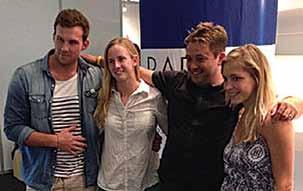
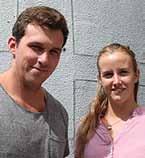
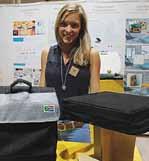
CPUT students have been awarded the top five places in a furniture design competition run by the DTI. The competition involved students designing a multipurpose furniture piece for a limited space. Jess Kuhlenthal’s Trimod table, which is an interlocking, interchangeable series of three triangles, was awarded first prize for its functionality and versatility. The Trimod connects with magnets and has nine different configurations.

Interior Design student Nicky van den Aardweg exhibited her backpack lap-desk a year ago at Design Indaba as a finalist in the Jigsaw competition. The desk fits neatly into a specially designed backpack and addresses issues around the lack of desks at some rural schools. This year, Nicky’s design was awarded second place.
Third-year student Daniel Afonso’s Gud News Chair incorporates storage into a seating solution and also promotes good posture; it received the third place award. Created out of African fabrics and indigenous pine wood, the chair was commended for its unique African feel.
The winners each received a share of R25 000 worth of prizes, however, all agree that the best prize was actually exhibiting their work at Design Indaba 2015. The platform allowed them to interact with like-minded designers, network and promote their work to potential employers.
First-year CPUT film and video production student Tony Gum was dubbed “Coolest girl in Cape Town” in October this year, by one of the most influential style authorities in the world, Vogue Magazine. The 20-year-old (real name, Zipho Gum) is affectionately known as Tony Gum, and is one of SA’s most popular bloggers. This is in
addition to her roles as visual artist, vlogger, model and occasional brand ambassador. Tony uses an Instagram feed as her gallery to reach out to big corporate brands like Coca-Cola and Adidas to encourage dialogue about race, women, art and pop culture.

Tony stole the show at the recent 2015 FNB Joburg Art Fair, a gathering of artists, curators, creatives and art lovers from across Africa, despite being one of the youngest exhibitors. The prestigious event featured over fifty exhibitors from seven countries, including, Nigeria, France, Germany, Spain and the UK.
The Watt Scooter is an initiative of Industrial Design staff and students. It has captured the attention of Rhodes University which grapples with an over reliance on cars on its campus. The scooter also suits CPUT student needs with its variety of campuses spread out across the Cape Town central business district.
The electric scooter can carry approximately 125kg, and has a top speed of 25kph on a two hour charge. Thanks to its sturdy wheels and upright design, it can confidently tackle hills. BTech student Mikhail Wertheim Aymes who is a collaborator on the project along with lecturers Mr Craig Finnan, Mr Johan van Niekerk and Mr Daryn Molenaar says of the scooter, “It locks up easily like a bike and our next step is to develop docking stations which could be activated by your student card”.
The Watt Scooter won the Innovation Award at the Design Indaba recently, and was commended for its local design and the fact that the technology is easily upgradable. The team plans to use the prize money to explore docking station options.
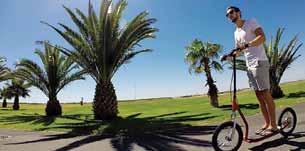
Backpacking through Europe turned out to be more than just a travel adventure for student Ryan Higgo. An Industrial Design graduate, Ryan’s travels sparked an innovative idea which resulted in Snugpack, a daypack attachment facilitating comfortable and safe resting for backpackers. “While taking long train trips across France, I noticed many other young people in the same situation, wanting to rest more comfortably,” says Ryan. He noticed that backpackers often rested against a window with their heads covered with a top and a leg positioned through the strap of their backpacks to prevent theft.
Wanting to solve this problem, Ryan decided to make it the focus of his BTech research project and conducted extensive ethnographic research into the backpacking community. “The results pointed towards a need for a simple product that allows a more comfortable and more secure resting option while in transit,” he says. The
Snugpack wraps around a backpack strapped to the front of the body, allowing the wearer to slide hands and arms into a pocket for comfortable support. The product also features an extractable hood that can be pulled over the user’s head whilst resting as well as a cushion.

The design has been successful in its user testing stage in SA, England, Scotland and Ireland, and the first production run has recently been completed.

CPUT student voted “Coolest girl in Cape Town”
Frustrated with flimsy clothes drying racks that offer a limited amount of hanging space, a Mechanical Engineering student thought out-of-the-box and came up with a solution to his family’s laundry day problems. Wayne van Diemen invented the Dryway™, a portable, sturdy and lightweight clothes drying rack specifically designed for use in small areas.
“My wife and I have two children and we live in an apartment. We always had problems with clothes drying racks,” says Wayne. “They were unstable and had a lack of capacity, and some were bulky. We decided to think of a solution.” After several months of working on his concept, Wayne developed the device manufactured from aluminium, wood and premium engineering materials. The simple construction of the device allows for plenty of airflow around each garment causing them to dry in no time. Dryway™ also features several accessories, including an attachment allowing for additional hanging space. Wayne has completed a prototype and the device is now ready for manufacturing.



Braaiing is practically a national past time in SA, so anything which makes the job easier is sure to be a success. The Braai Tool (TBT) is a multifunctional braai utensil that incorporates five key utensils into one sleek product. This handcrafted tool started out at as a fourth year Industrial Design project by Alejandra Olivera, Salmon Nortje, Stehan Botha and Sebastian Bosman. “TBT was our entry into the now well established 5K Project, which sees groups of BTech students design, prototype, manufacture, market and sell a product of their creation with the goal of achieving a minimum net profit of R5 000,” says Sebastian.
The product proved an enormous success, and its magnetic hinge and groove system has been patented. The special system is the magic of TBT, allowing users to break the device into two elements, which can be used as a knife, fork, spatula and bottle opener. When combined, the magnetic hinge and groove system mimics the action of a tensioned spring. The product is manufactured locally from sustainably sourced materials and is weather and fire resistant.

Four BTech fashion graduates finished their undergraduate studies on a jubilant note, after having been selected to participate in the Nedbank Cup-Football Fan Fashion Competition. They form part of the final 16 (selected from fashion schools across the country) to collaborate with 16 football super fans and 16 of SA’s top designers.
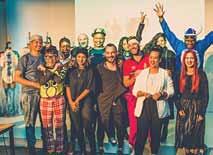
An innovative product called Cookable™ has the potential to change the lives of individuals living with disabilities. The device has been designed to aid in the preparation of food and has several fittings, each with specific functions that allow for slicing, grating and peeling of foods as well as the opening of cans and bottles.
Cookable™ assists people with disabilities to prepare food
Cookable™ was originally built by Mr Hekkie Brink, an elderly gentleman who only has one arm. Mr Brink sold hundreds of the products but then lost strength in his one hand and had to stop production. He was put into contact with CPUT academic, Prof Mugendi M’rithaa, who along with a team of industrial design students developed the device into a mass producible product.
WARC does research in the knowledge economy, producing outputs which guide industry on decisions relating to search engines, internet marketing and website design. The centre focussed on two fronts during 2015. Firstly, achieving high search engine rankings based on using SeO (search engine optimisation) and/or PPC (pay-per-click). Secondly, the design and use of institutional repositories (sometimes called digital libraries) by universities was investigated.
to determine the best way for these companies to apply their marketing funds (using SeO and/or PPC) to ensure exposure on the search engines.
SeO involves adjustments made to websites in such a way that search engine crawlers will find enough relevant signals on each webpage to lead prospective clients to them. PPC is a scheme where advertisers pay the search engines to rank their advertisements
Prof Melius Weideman weidemanm@cput.ac.za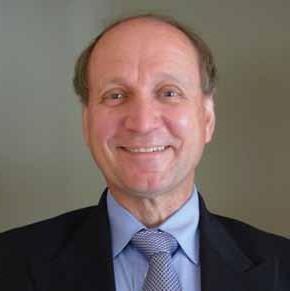
Achieving top rankings on search engine result pages is not negotiable for any e-commerce concern, as these rankings determine income in most cases. These companies often spend large amounts of money on achieving and maintaining high rankings. Furthermore, search engines often update their algorithms in sympathy with industry trends, and these changes might negatively impact rankings overnight. It is therefore imperative that ongoing research be done
(as opposed to natural results with SeO) above those of competitors. Both SeO and PPC incur expenses, which could run into hundreds of thousands of rands per month for a large concern. Research has indicated that it would be better to spend more money on SeO than PPC, which will produce better results at a
t he centre focussed firstly on achieving high search engine rankings and secondly, on the design and use of institutional repositories.
At CPUT, innovation is about solving everyday problems facing our communities, and TshedzaApp™ is doing exactly that. A mobile app is a virtual career coach that allows users to interact with coaching professionals and access information on tertiary courses and bursaries in SA.
TshedzaAppTM empowers learners to make good choices lower cost. In one case study, it was shown that after approximately six months, the traffic generated by SeO could bypass that coming from PPC, leading to large cost savings. however, both platforms should be considered, as the marketing environments for various companies and products are different.
Any university which produces research outputs should have a digital repository, making these outputs available to a wide Internet user audience. Other research has shown that many researchers default to using standard search engines before falling back on academic databases when looking for peer reviewed research. It is therefore necessary to consider the way search engines, and specifically Google Scholar, indexes these institutional repositories. A detailed study was done on the national Indian repository (Shodhganga), and the
Inventor and project leader, Mbavhalelo Mabogo, says the app aims to counter high tertiary institution dropout rates by providing high school learners with correct information so they can make informed choices about their future. “Many drop out because they are in the wrong course. Others cannot apply to university because they have the wrong subject combination.” Mbavhalelo and his team hope that TshedzaApp™ will empower learners to make the right choices.
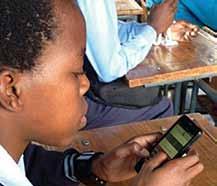
The app has a built-in career screening tool which is based on information created by the user in their profile; it lists possible study options along with the universities

indexing its documents receives from the Google Scholar crawler. Results indicate a surprisingly low degree of exposure, which was found to be due to the way documents were stored. Also, no attempt seems to have been made to follow the guidelines provided by search engines to achieve high visibility. Any digital library designer should consider the
that offer the courses. It contains information from higher education institutions in SA, which includes everything from course information and requirements to funding.
TshedzaApp™ will also assist high school learners in choosing the right school subjects, and allow them to interact with industry professionals in a monitored and open discussion group. Mbavhalelo, who is supported by a team of professionals, says the mobile app has been tested at schools in Khayelitsha and Kraaifontein and has also had a pilot run on Google Play. It will soon go live on Google Play where it will be available for free.
findings of this study, to ensure that research publications are indexed by search engines.
A set of (free) Internet-based tools to test website usability and visibility are available on WARC’s website at: http://web-visibility.co.za/websitevisibility-measurement-tools-seo/

Mr Theo Legrange, Mr Garnet Gabriels and Mr Paul Bayendang have designed and manufactured the Driver’s License Control Unit (DLCU), an innovative device that can assist in restricting unauthorised access to motor vehicles by people who do not have a valid driver’s license. The concept was formed when Mr Legrange, a retired traffic official, encountered a driver who had his license revoked due to a serious traffic offence, but was still driving his vehicle.
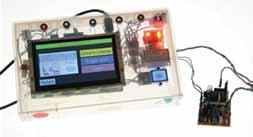
“I approached Garnet with the idea of this device. I thought CPUT would be able to assist me because as a university of technology they are in the business of creating things,” says Mr Legrange. The two teamed up with Mechanical Engineering staff member, Mr Paul Bayendang, and together they developed the DLCU, a control panel featuring fingerprint and password authentication that is fitted in a vehicle. To function, car owners register their information on the DLCU. When entering a vehicle, they are prompted to scan their driver’s licence card, fingerprint and enter a pin. Thanks to their innovative technology, drivers not registered on the DLUC will not be able to start the vehicle.

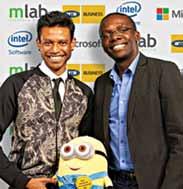
The CPUT Mobile App won the Best Enterprise Development App award at this year’s prestigious MTN Business App of the Year Awards, outshining competitors FNB, Standard Bank and 12 other businesses. “This award is a validation of hard work by people across our institution and shows recognition of CPUT’s leadership in mobile communications,” says Mr Lovemore Nalube, Head of Web Development, who developed the app along with Mr Ashley Jones. “Receiving this honour from some of the country’s leading mobile experts reaffirms how technology can serve and support the values of our institution.”
Judges assessed product solution and design, creativity, usability, market impact, and long-term sustainability when deciding on the winners. CPUT’s Mobile App links to a wide range of information and services such as course announcements, paperless meeting documents, exam results, prospectuses, application statuses, etc. It makes CPUT services and information available at one’s fingertips. The app has been intelligently customised and it tailors information depending on whether one logs on as a student, staff member or a member of the public.
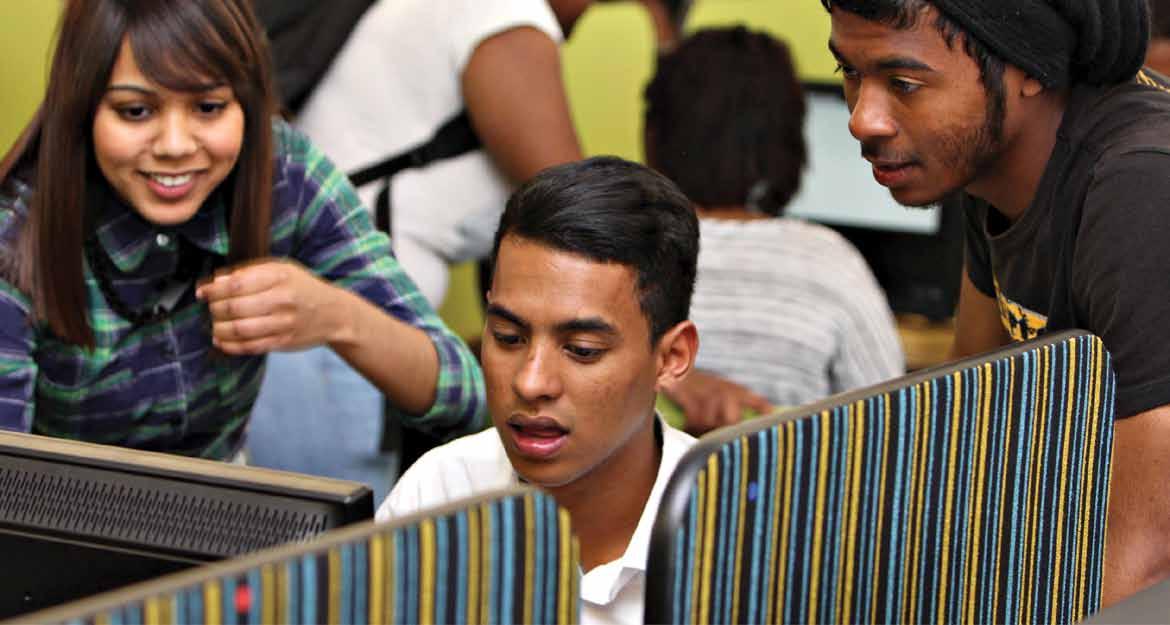
The former Centre for eLearning merged with the Fundani educational Technology unit at the end of 2015, establishing the Centre for Innovative educational Technology (CIeT). The new centre comprises a team of senior researchers, instructional designers, educational technology facilitators, administrators and IT technicians. The primary aim of CIeT is to support the academic project in the effective use of digital technology for learning and teaching. Further to this, the centre regards its activities as central in the application of knowledge in addressing real world problems, especially as experienced in a constrained higher education environment. Within our university of technology, CIeT’s goal is to research, develop and employ digital technology – informed through pedagogical principles – to make teaching and learning practice more effective.
Mr Izak SmitCPuT has set out short- and medium-term targets for the period 2016-2020. These are based on improving student success, enhancing the level of qualifications of academic staff, and increasing the research and innovation outputs of the institution. The role of CIeT in meeting these targets is to provide a sustainable information resource base on the effective use of educational technology; to train users to employ digital technology and virtual learning environments effectively within the latest available pedagogical knowledge base; to provide conducive informal learning spaces for students; to maintain a sound institutional learner management

system platform; and to allow for proper real-time learner analytics, building data warehouses of student engagement that can lead to full predictive analytics.
Both locally and internationally, CIeT partakes in fundamental research activities, predominantly in the field of educational technology. This includes mentorship and supervision of postgraduate students, academic leadership (hosting of symposia, participation in organising committees, and membership of editorial boards), active fieldwork, as well as publication in respected peer reviewed journals and conference proceedings. The centre employs an NRF rated researcher and is an active member of several institutional, national and international sponsored research projects.
CIeT also plays an active role within the South African Technology Network (SATN) in the identification of technologies used by all member institutions and the development of benchmarks for effective utilisation of technologies for teaching and learning, and to develop adoption strategies in line with international best practice on the early identification of students at risk. A workshop was held this year to start the process of adding academic performance indicators to the existing annual SATN performance indicators report. The first indicators added were throughput and success rates. CIeT also plans to explore those indicators that point to the effect educational technology may have on student throughput and success.
The CPGS staff members are active in their own research while still playing a supporting role to postgraduate students and postdoctoral fellows.
Research interests of staff members include ms l bingo: evaluation of practices in human resource management
Prof m mcPherson: Condensed matter physics, solar thermal energy storage and fuel cell technology Dr C Uys: Applied statistics and ICTs for development
Prof McPherson co-authored one DheT subsidised journal article, and Dr uys co-authored two DheT subsidised journal articles this year.
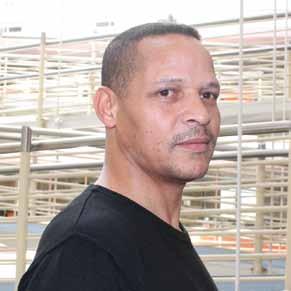
Please see page 14 for an overview of CPGS’s activities during 2015.
DTech: Informatics
CPuT
Uys C
Framework for evaluating information technology benefits in local communities
The CWsR is the hub of CPUT’s water and sanitation network for:
• The identification and establishment of waterrelated niche activities/units/centres based on regional and national priorities
• The facilitation and execution of interdisciplinary projects which generate research, income and graduate opportunities
• The development and maintenance of partnerships on behalf of CPuT with relevant stakeholders in the water sector regionally, nationally and internationally
• The project partnership featured in the BGCMA Newsletter
• Building and sustaining a research and training partnership was presented to the BGCMA board for continued funding of the established livinglaboratory in July
• Building and sustaining WRM partnerships using the living laboratory concept: A case study was presented to CeOs of the catchment management agencies in SA in September
• Ms Sandra Williams and Ms Sinazo Mnyaka presented papers at the 16th WaterNet/WARFSA/ GWP-SA Symposium in Mauritius in October
Prof Alvin Lagardien lagardiena@cput.ac.za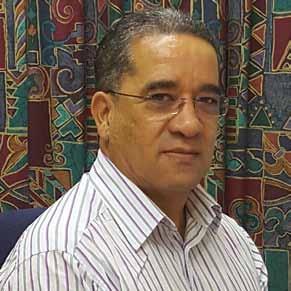
The Nuffic Niche integrated water resource management (IWRM) project partners are the university of Twente, unesco–Ihe and the university of Wageningen
• The 2014 annual report and financial audit were given a clean audit result by ernst & Young
• The IWRM Partnerships in Action Workshop was hosted in Somerset West with BGCMA WRC and WISA as part of Water Week in March; 80 delegates from 25 institutions participated in the seminar, including representatives from national, provincial and local authorities, CMAs, water user associations, international partners, NGOs and academic institutions
• WRC 2084: Insights into indigenous coping strategies to drought for drought adaptation in agriculture: The southern Cape Scenario, February, WRC publication featured in the WRC Water-Wheel publication
• Dr Bongani Ncube chaired a session in the National Women in Water Consultative Conference in August, and featured in the conference’s promotional video
• WRC 2088: Adapting and piloting concepts of community led total sanitation (CLTS) in the
South African municipal environment: Revision of guideline was presented at the enrichment Workshop in February
• Two additional papers were published:
- Applicability of community led total sanitation (CLTS) in South Africa: A case study experience of opportunities and challenges, WRC Report 2088/P/13
- CLTS in South Africa: Guide, tools and training aids, Report TT 626
• WRC 2208: An investigation into the social, institutional and economic implications of reusing reclaimed wastewater for domestic applications in South Africa
- Report 3b: The applicability of factors governing people’s perceptions regarding reuse of reclaimed wastewater
- Report 4: Strategies for influencing public opinion on the reuse of reclaimed wastewater for domestic application
- Mr C Muanda presented two papers at the Water Reuse Workshop in Pretoria in September
• WRC 2329: Combined effect of urbanisation, industrialisation and population growth on water quality of the Palmiet River and its tributaries in the Overberg West sub-catchment of the Breede Water Management Area: An integrated catchment risk assessment
- Report 2: environmental hazard assessment of anthropogenic activities surrounding the Palmiet River and tributaries
- Report 3: hazard characterisation of pollutants from anthropogenic activities surrounding the Palmiet River and tributaries
• WRC 2310: Approaches for emerging farmer participation in water resource management: The case of the Breede-Overberg Catchment Management Agency (BOCMA), Western Cape
- Report 2: Stakeholder consultations and surveys of water institutions and their roles in water resource management in the BreedeOverberg catchment
- Report 3: Challenges faced by emerging farmers in accessing water and participating in water user associations
- Dr Ncube presented the project at WRC 2015 Symposium and Water-Tech Summit
• Collaborating on WRC projects with the BTB Research Group and Textile Technology Laboratory Services; Mr C Muanda completed fieldwork in KZN on the BTB project
• The CWSR was successful with the RINA proposal improving emerging farmer resilience to climate change through improved access to irrigation water: A case of Breede-Gouritz Catchment Management Agency, Western Cape
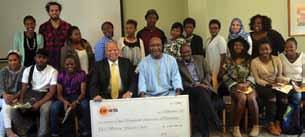
The Energy & Water Sector Education and Training Authority (EWSETA) has contributed a generous R2 million towards bursaries, enriching the lives of 45 deserving students from the Environmental Science and Environmental Management departments. EWSETA’s main focus areas are in the fields of electricity; oil and gas; nuclear and renewable energy; and water, waste and sanitation. This SETA plays a crucial role in ensuring that the National Skills and Development Strategy is executed within these critical sectors.
Speaking at the cheque handover at Bellville campus in December, EWSETA CEO, Mr Errol Gradwell, emphasised SA’s growing need for technicians and artisans in the energy and water fields. He says that with Eskom struggling and the severe drought currently gripping the country, innovation, investment and large-scale skills development is now crucial. “SA’s desperate need for energy and water will intensify, as the next decade brings more people to a resource-stressed land. These bursaries will enable students to acquire scarce skills the nation requires. Education in new technologies, shared through private and public partnerships and university collaboration, will ensure that the latest ideas in solar power, wind turbines and hydroelectric delivery are made available to a technically savvy generation.”
In 2015, CPuT Libraries continued its initiatives aimed at supporting research and innovation through collaborative partnerships internally and externally. During this period, we have started realising the benefits of streamlining theses submission processes and have managed to archive all theses produced this year on Digital Knowledge.
In support of postgraduate students and improving their information skills, the Libraries has introduced the Advanced Information Literacy programme, which is an important part of the pursuit of knowledge.
articles in other journals, three conference papers, and four conference posters.
ReSeARCh OuTPuT
Dr Elisha ChiwareIn addition to the normal research support services that the Libraries provide – such as support in information resources, citation analysis, and scholarly communication – the Library has continued its endeavors in creating awareness and developing research data management (RDM) services. This year in particular, as part of its awareness activities, the Libraries hosted a guest from Queensland university of Technology (QuT), who shared experiences of how QuT is managing and sharing research data.
Through our commitment to collaboratively partner in the development and support for RDM initiatives locally and internationally, the Libraries have managed to develop a skills base that has resulted in receiving requests from international donor agencies to assist in RDM policy and programme development in some developing countries.
CPuT Libraries staff continue to produce high quality output, including a chapter in a DheT subsidised book, six articles in DheT accredited journals, two
mbs (master of business systems)
hoschule Wismar, Germany
sikhosana R
Managing electronic resources at selected tertiary institutions in the Western Cape, South Africa
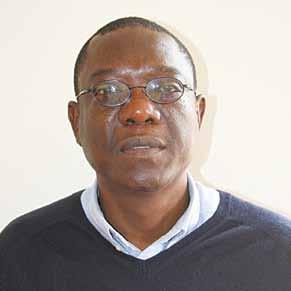
mIT (master’s in Information Technology)
university of Pretoria
kleinveldt l
The role of the embedded librarian using Blackboard as a knowledge management tool to support blended learning at the Cape Peninsula university of Technology
The Disability unit provides a comprehensive range of specialised support services to students with disabilities and staff working with these students at CPuT. It also serves as an advisory and information centre for staff with disabilities and people wishing to learn more about accommodating people with disabilities in the workplace and student life.

Data is regularly gathered through quantitative and qualitative methods. Research results are presented as annual reports, conference papers and articles, and at workshops.
To showcase the comprehensive electronic resources available to students and staff members, CPUT Libraries hosted the Electronic Resources Fair in May. The event aimed to equip students and staff members to make use of the university’s vast digital resources, which include 22 919 e-books, 43 Elsevier e-textbooks as well as 31 platforms which provide access to 100 databases and numerous e-journals.
At the event, CPUT librarians and several vendors demonstrated how to access and navigate various electronic resources. Marketing Officer for CPUT Libraries, Ms Hillary Hartle, says they want to increase the usage and awareness of digital resources because of the benefits they hold for students and staff members. Electronic resources are available 24/7, can be accessed from any location where staff and students have access to the internet, and provide access to information needed for research papers, coursework and studies.
Dr Nina du Toit
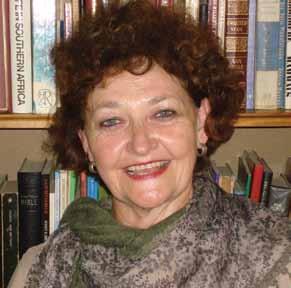
dutoitn@cput.ac.za
2015 PuBLICATIONS SuBMITTeD TO The DheT (MAY 2016) uNITS Journal
Fundani Centre for higher education Development supports research into teaching and learning across the faculties, and a number of CPuT staff members engaged in their doctoral and master’s studies are currently supervised by Fundani academics. Approximately R1.2 million was disbursed to faculty members in order to conduct classroom-based research in 2015 under the DVC for Teaching and Learning’s RIFTAL project. The RIFTAL budget was considerably expanded due to generous support from the DheT’s Teaching Development Grant. Many staff presented the results of their research at the annual CPuT Research into Teaching and Learning (RITAL) Conference at Granger Bay in December.
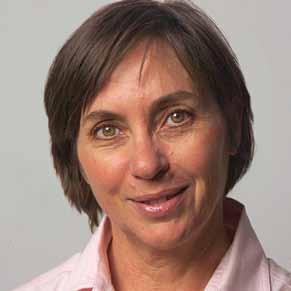
Fundani staff also conduct their own research into classroom practices, student transitions and enhancing staff development, often in collaboration with faculty staff, as is attested to by our research outputs. Research conducted through Fundani thus contributes significantly to improving teaching and learning at the university, which ultimately impacts student retention and throughput.
highlights for 2015 were, firstly, the one day workshop on Researching boundary-crossing/
change laboratories by Prof Yro engestrom and Dr A Sannino from the university of helsinki. This was also about using Activity Theory in research (see WILRu). Fundani plans to pursue research projects around this theme in 2016. Secondly, in association with uCT and Su, Fundani hosted the first International Legitimation Code Theory/(LCT) Conference at the Graduate School of Business. Professor Karl Maton (university of Sydney), the originator of the theory, gave the keynote address, and many CPuT academics presented research papers. Thirdly, Fundani was instrumental in hosting three writing for publication breakaways, in cooperation with the other regional universities (one of these was for the purpose of developing articles from the LCT conference).
Fundani also organised and hosted two additional conferences in 2015. The first of these was the regional Innovative Pedagogical Practices in extended Curriculum Programmes (eCP) colloquium in August. In December, Fundani organised the 5th Annual university Teaching Research Conference (RITAL), titled evaluation and Impact of educational Interventions.
Fundani staff members were co-researchers in and made significant research contributions to the national collaborative NRF project Structure culture and agency in academic development, which was extended for an extra two years. Staff members are also participants in the international academic development project New knowledge in the work-
Prof Chris Winberg
winbergc@cput.ac.za
Fundani contributes significantly to improving teaching and learning at the university.
Researchers gathered at the Granger Bay campus to discuss pertinent issues about language development and multilingualism in June, when CPUT hosted the 18th international conference of the African Language Association of Southern Africa (ALASA). The theme of the conference was New Directions and Perspectives in African Language Research in the 21st Century.
Academics from universities in Africa and Holland presented papers investigating issues such as language in education, curriculum development and translation. The three-day conference is organised by Fundani’s Language Unit headed by Prof Monwabisi Ralarala. CPUT’s VC, Dr Prins Nevhutalu, challenged delegates to enable Africans to acquire technological skills in their mother tongues.
ALASA executive chair, Dr Mantoa Smouse, encouraged academics not to conduct research only for the purposes of gaining promotion or funding, but to undertake studies that will develop our communities. The conference’s keynote speakers were Prof James Ogude, Deputy Director: Centre for the Advancement of Scholarship at UP, Prof Matthias Brenzinger, Head of Linguistics at UCT, and Ms Naledi Mbude-Shale, Director of Language in Education Policy Unit in the Eastern Cape Department of Education.
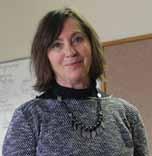
group: An inquiry into the meso-level dynamics of teaching, learning and curriculum change, with universities in the uK, Australia and Sweden. Fundani presented on this project at the international Researching Work and Learning Conference in December.
Fundani staff are valued for their research expertise as evidenced by their teaching on the regional Postgraduate Diploma in higher education research module and on the CheC research course, both for academic staff.
CPUT academic, Prof Chris Winberg, was recognised for outstanding research contribution to professional and vocational education in SA and globally by Science and Technology Minister, Ms Naledi Pandor. Prof Winberg, Director at Fundani, was awarded a prestigious NRF SARChI Chair in WorkIntegrated Learning during a ceremony at the Centre for the Book in September.
The award will cover her salary, her master’s and doctoral students’ expenses and visiting scholars over the next 15 years. The chair’s
programme will see her, her co-researchers and students tackling a number of research projects, and contributing significantly to CPUT’s research output. Her research will focus on how professional and vocational education might play a more prominent role in local economic development.
Prof Winberg says, “I believe that universities of technology need to make regional dynamics a more explicit part of their strategy, improve access to their programmes through multiagency collaboration, and take advantage of opportunities to develop joint profiles and grow strong alliances… I was very honoured to have both the VC and the DVC for Research there to support me.”
CPUT’s VC, Dr Prins Nevhutalu said, “Let me also congratulate Prof Winberg for a deserved acknowledgement as a leader in her area”.
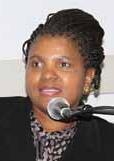
universities of technology have traditionally identified themselves through close ties with industry, and see themselves at the forefront of university responsiveness to the world of work. however, the complexities of students’ crossing boundaries between two quite different sites of learning, and the need to reconcile more scientific knowledge with work-based knowledge and practices, had not been extensively researched or theorised. These pressures led to the formation of an NRF funded research unit, WILRu, by a small group of dedicated staff in 2002. Thirteen years on, this original group of staff have published extensively, both locally and internationally, in the field of work and learning, and some have obtained higher degrees in this field.
Prof James Garraway garrawayj@cput.ac.za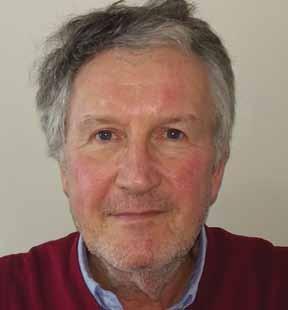
Though based in Fundani, WILRu is a cross-faculty unit, consisting of researchers with common interests in the various faculties. There are currently four lines of research, all of which stem from strong theoretical bases.
The first line is that of learning through practice, whether at work or in community projects, as seen through the lens of Activity Theory. Secondly, researchers are examining knowledge claims in the vocational curriculum using Legitimation Code Theory, for example, what counts as legitimate knowledge in workplace assessments? The third line involves investigating the field of innovation.
here the interest is that innovation involves many twists, turns and dead ends, and is furthermore strongly linked to the society, including ethical
Complexities of students’ crossing boundaries between different sites of learning, and the need to reconcile more scientific knowledge with workbased knowledge and practices led to the formation of WILRU.
issues, in which the innovation must be carried out. The question then becomes how to learn to “do” innovation journeys, and do them better, or at least, avoid unnecessary mishaps. This is the starting point for the innovationjourney project. It aims to collect stories about innovation journeys that have been followed, or are being followed, by CPuT academic staff, and distil lessons out of the stories, building on the growing scholarly and managerial literature on the real-world complexity of innovation. The notion of an innovation journey is a metaphor, reminding us of the non-linearity of innovation processes. It can be used to recognise patterns in the journey and recurring pitfalls. The most recent issue of Paradigms consists of a volume of such journeys. Lastly, there is the issue of lecturer development as professional educators in the higher educator sector, which is being carried out as part of both NRF and international research projects. The research focus is that of structure, culture and agency though more socio-material approaches are also explored.
As from the end of 2015, WILRu will move from Fundani and fall under the auspices of the SARChI chair: Work Integrated Learning (Prof Chris Winberg), though Prof James Garraway will continue to play an active role.
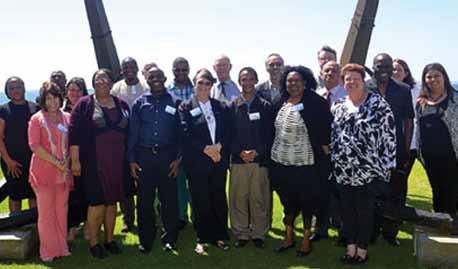
CPUT’s Work Integrated Learning (WIL) and Recognition of Prior Learning (RPL) research roll-out has begun. With the financial backing of the Education, Training & Development Practices Sector Education & Training Authority (ETDP SETA), CPUT’s ETDP Research Chair, Prof Joyce Nduna, Assistant Research Chair, Dr Andre van der Bijl, and Research Associate, Dr Cathy Robertson, have been putting structures in place and obtaining approval for their research plans.
The trio has been working closely with the Western Cape TVET Colleges and the SETA itself to formulate questionnaires to underpin the research roll-out, which aims to maximise success in teaching and learning in higher education. It is hoped that the questionnaires will provide important findings, new knowledge, and a way forward in this critical sector.
At the ETDP SETA’s recent Research Workshop for the WIL and RPL Research Chair, stakeholders joined forces to select and verify research questions for the questionnaires. These included the nature of WIL in the curriculum, lecturer and industry WIL needs, integrating technology in WIL and the effectiveness of industry involvement in curriculum design, implementation and change.
Prof Nduna says this research is specifically designed to be a catalyst for real transformation and improvement in the WIL field across TVET colleges, universities, UoTs and industry in SA. Describing the research rollout as a win-win situation for all, Nduna says relevant and responsive curricula and WIL and RPL best-practice models are sure to result. “As this occurs, we will develop and upskill our staff capacity, and ultimately our students will reap the rewards. They will enter the workforce with relevant workrelated competencies, thus boosting economic growth and development in SA.”
Professor Chris Winberg was amongst the 42 women researchers who were awarded an NRF SARChI chair at the Centre for the Book in September 2015.
her field of research is work and learning. The rationale for the Research Chair in Work-Integrated Learning, and its associated research centre, Work-Integrated Learning Research unit (WILRu), is to build knowledge in professional, vocational and technical education. This includes traditional professional programmes as well as new and emerging professions that have the purpose of preparing candidates to engage meaningfully with the world beyond the university.
Prof Chris Winberg winbergc@cput.ac.zaunderstanding the relationship between academic study and the world of work or professional practice is key to building knowledge in the field of work-integrated learning.
Prof Winberg’s research focus is professional, vocational and technical education – all forms of education that aim to students to engage meaningfully with the world beyond the university.
Prof Winberg believes that it is important to find convergence between educational interests and those of communities and workplaces. education should broaden the mind, but it should also have relevance to local economic development. university students need to be employable at the minimum –and hopefully contribute much more to society than that.
Prof Winberg, her colleagues in the Work-Integrated Learning Research unit (WILRu) and students have produced a range of publications over the past 15 years of working in this field.
Prof Winberg’s hope is that the research that she and colleagues are doing will strengthen the university of technology sector.

Understanding the relationship between academic study and the world of work or professional practice is key to building knowledge in the field of work-integrated learning.
During 2015, CPuT tested over 8 000 students and staff in an hIV campaign, supported by higher education AIDS and its partners (which include DheT, Global Fund, NACOSA, Department of health, Department of Social Development, uSAID, PePFAR and the German government). The campaign aimed to make hIV counselling and testing accessible for all students and staff at all campuses. The hIV/Aids unit worked on this in collaboration with Student Counselling Services, Campus health, Student Affairs and Student housing. The service included screening and referral for Tuberculosis and sexually transmitted infections; voluntary medical male circumcision; hIV counselling and testing; pap smears; breast examinations; contraception; and condom distribution. The Mobile Wellness unit brings health care services to all campuses.
Ms Melanie Marais maraisme@cput.ac.za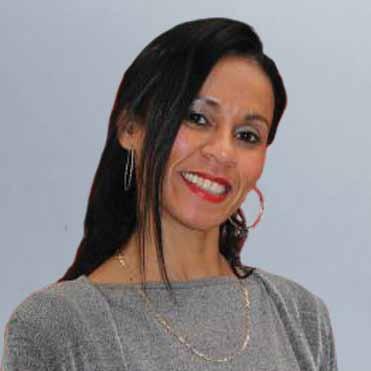
This year also saw an increased focus on alcohol and substance abuse through the launch of the hope Structure sponsored by Al Anon. The structure was erected on the Bellville and Cape Town campuses for three months. It is made out of bottles held in a steel frame. Inside each bottle is a message of hope, showing how Al Anon has helped people to rebuild their lives. There were also discussion groups within campus residences.
The integration of hIV within the curricula became a focus area in 2015. The objective is to support graduates in developing competency to deal with hIV in the workplace and in their personal lives. CPuT kicked off with its first workshop attended
by academics, representing five of the six faculties. hIV curriculum integration dialogue took place in June, and academics had the opportunity to share their concerns and get clarity as to how they are expected to integrate hIV awareness within their existing curricula.
The unit continued to be involved with community engagement and school visits. Focus areas included hIV, STIs, tuberculosis, teenage pregnancy, sexual and gender-based violence, alcohol and substance abuse, peer pressure, decision making, career planning and healthy social norms. Sessions were interactive and students were encouraged to attend
the open days at higher education Institutions to assist them with career choices.
CPuT’s hIV/Aids unit partnered with the College of Cape Town to help them establish their own hIV programme. Support included assisting with hIV counselling and testing, peer education, guidelines
During 2015, CPU t tested over 8 000 students and staff in an HIV campaign, supported by Higher e ducation AID s and its partners.
for an hIV policy, confidentiality, and care and support.
Peer educators supported the World TB Day march on 24 March 2016 to show their support for the fight against tuberculosis.
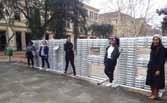
Arts and culture and general health care services were integrated within the hIV/Aids unit’s conference. This added fun and counteracted information overload. It also showcased the need and importance of integrating arts and culture in hIV related interventions. Students had the opportunity to have their blood pressure, blood sugar levels and body mass index measured, helping them see that hIV is a normal health condition that is manageable and treatable.
Partnership with neighbouring departments and higher education Institutions worked exceptionally well in 2015.
The 2015 peer educators were rewarded for their vital role in the fight against hIV through attending an excursion and award ceremony where each one was presented with a certificate. hIV awareness amongst their peers, condom distribution and mobilising their peers for hIV testing were some of their key functions during the year. A successful Youth Leadership hIV Conference was led by the peer educators.
The hIV/Aids unit provided internship for Public Relations and Business Management students. They also provided marketing and branding support for a CPuT-patented product of Mechanical engineering graduate Musa Morgan, who designed medical male
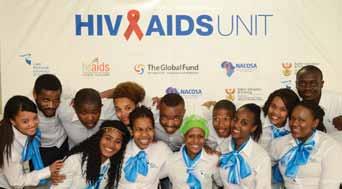
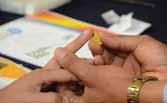
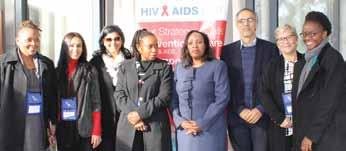
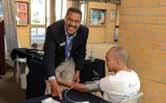
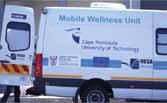
circumcision underwear, uyindoda MMC underwear, now registered as Circumfort ® MMC underwear.
CPuT introduced its first Youth Leadership hIV/ Aids Conference this year, in collaboration with neighbours uWC, uCT, Su, College of Cape Town, and Northlink’s Boland and False Bay colleges. Important youth leadership panel discussions about alcohol and substance abuse, student development, LGBTQI, innovative methods of reaching youth and creating safe spaces for students took place.
Student leadership represented at the conference included SRC, Women in Leadership, the Debating Society, peer educators, peer helpers, resident student assistants and house committee members.
The unit commends various staff members on their research endeavours. This year, Mr Alex Semba completed his MPhil at Su. Ms Melanie Marais is currently working on her PhD Nursing through uWC; Ms Nomzamo Tabata is doing her MTech through CPuT; and Ms Sweetness Kola is doing her M Public health through uWC.
mPhil Stellenbosch university semba a
An assessment of hIV and AIDS knowledge, attitudes and safer sex practices among student men who have sex with men (MSM) at a higher education institution in the Western Cape
The IBMB’s mandate is to conduct excellent and world class multidisciplinary research in reducing relevant health risks in SA associated with food/water safety, mycotoxicology, oxidative stress, community health and chemoprevention through integrated research in biotechnology, encouraging the development of key scarce skills in areas such as biocatalysis and nanobiotechnology in the realisation of SA’s bio-economy strategy.
Research focus areas as defined by the RTI Blueprint
• Focus area one: Bio-economy and Biotechnology
• Focus area three: Energy
Prof Wentzel Gelderblom (Research Chair) gelderblomw@cput.ac.za• Focus area four: Climate change and Environment
• Focus area seven: Design and Sustainability
The institute houses five NRF rated researchers: Prof WCA Gelderblom (B1), Prof GS Shephard (B1), Prof hF Vismer (C1), Prof JL Marnewick (C2), and Dr L van der Westhuizen (C2).
Innovative research approaches form the basis of our research institute. The dynamic nature of our scientists is key in developing specific niche areas which will eventually find application in establishing a Centre of excellence in Biotechnology at CPuT. Although many challenges existed, 2015 was yet another successful year for IBMB, which contributed to a wide range of specialised research areas, both nationally and internationally.
Prof J Marnewick (Co-Chair) marnewickj@cput.ac.za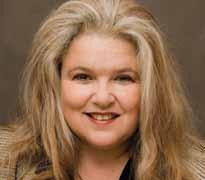
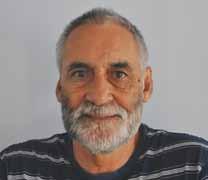
Prof Gelderblom was honoured to be elected as Fellow of the African Academy of Sciences. This award is presented
to scientists who have attained the highest international standards and have made significant contributions to the development and application of science, technology and innovation in Africa. We are also particularly proud of three Grade 10-12 learners from the Centre for Science and Technology (COSAT) at Khayelitsha, who received Gold awards and were invited to compete in the National e SKOM e xpo 2015 held in Johannesburg. One project received a silver medal, which included a Stellenbosch u niversity scholarship. The project was also selected as best in its category and has subsequently been entered into the international competition to be held in China. Drs Burger, Abel and Rheeder from the institute were involved with the training and mentoring of these students. We also hosted seminars by four internationally acclaimed scientific experts at IBMB in 2015: Prof M Kotze (S u ) on Assessment of the impact of hereditary factors on biochemical parameters of cardiovascular risk in relation to moderate alcohol consumption ; Prof DA Cowan ( u P) on Microbial ecology of the Namib Desert ; Prof h F Vismer (IBMB) on A lifetime of “magical” mycological experiences and Prof M Kovács ( u niversity of Kaposvár, h ungary) on Mycotoxin research at Kaposvár University: Results and challenges.
The IBMB has four sub-units: Biocatalysis & Technical Biology (BTB) Research Group, Chemoprevention Research Group, Mycotoxicology Research Group, and Oxidative Stress Research Centre (OSRS). Please find reports from each below, except for OSRS, which can be viewed under the Faculty of health & Wellness Sciences.
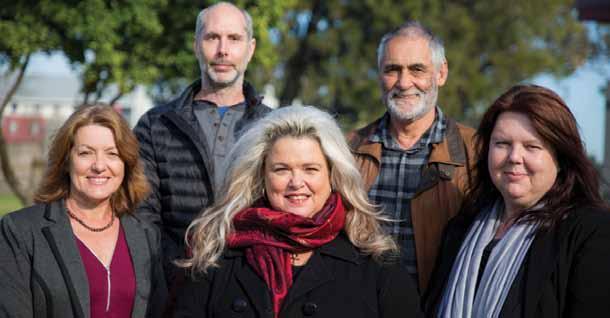
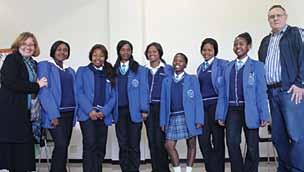
Learners’ projects supervised by researchers from CPUT’s IBMB won accolades at this year’s Cape Town Eskom Science Expo for Young Scientists. As part of its contribution to uplift the community, the institute has been mentoring learners from the Centre of Science and Technology (COSAT) in Khayelitsha over the past two years. Four of their projects were entered into this year’s expo: Effect of fatty acids on learner concentration; Dangers of public transport; More to the meat-stand than “meats” the eye; Reducing mycotoxins on homegrown umbona (maize).
Project 1 was awarded bronze, and the other three received gold awards. Winners of the gold awards qualified to take part in the national expo in Johannesburg. The learners say they are very excited to have got this far in the competition, as at some point they had felt like giving up on their project due to the workload. “We feel privileged to be in the nationals as we want to emulate the achievements of another group also from COSAT who won a trip to China in 2012 after winning,” says Grade 11 learner, Kholiswa Ntshinga.
In 2015, the BTB Research Group celebrated its sixth year at CPuT. The group has expanded past its focus on Microbiology, Biochemistry, Biotechnology and engineering to include aspects of environmental Microbiology, Molecular and Cell Biology and Inorganic Chemistry.
Our research, headed by Dr Marilize Le Roes-hill (group leader and senior researcher) focuses on
• Actinomycete biology and biodiversity, with a particular focus on actinobacterial diversity associated with South African peatlands and rooibos;
• The discovery and application of novel oxidative enzymes in biocatalysis reactions;
• Wastewater research, with a focus on the biological treatment of agri-industrial and domestic wastewater; and
• Bioremediation and beneficiation of food waste using a biorefinery approach.
In 2015, the BTB Research Group saw some changes in its staff complement. We said farewell to Dr Nuraan Khan, who joined KAPA Biosystems, and we welcomed the appointment of Dr Thandeka Mthethwa as the new manager of the LC-MS facility, based at the BTB laboratories. With her expertise in Inorganic Chemistry, she hopes to develop her own research niche here, and thereby develop a new
research focus area for the group within the field of nanotechnology.
• Community engagement and research uptake
- The final reference group meeting for the Water Research Commission (WRC) project K5/2104, Adapting constructed wetlands for real world applications was held and the technical report was finalised.
- Site visits to various industries in Gauteng, Western Cape, and KwaZulu Natal were conducted to collect information for WRCfunded national surveys on water and wastewater management practices in the edible oil, laundry, tannery, textile and sugar industries.
- Rooibos samples from farms in Clanwilliam were collected by Dr Marilize Le Roes-hill, Mr Alaric Prins, and collaborators. The samples are to be used in two postgraduate projects, including Mr Prins’s PhD study.
- Dr Pam Welz served as a member of the scientific committee for the International Water Association (IWA) congress, Winery 2015.
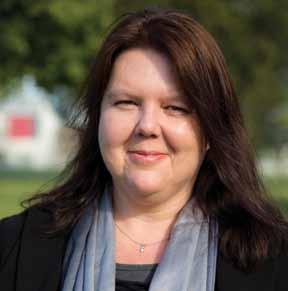
- Dr Pam Welz served on the Winetech environmental committee which evaluates project proposals and ongoing projects funded by Winetech.
- Dr Pam Welz attended WRC reference group meetings for Project K5/2380 titled A biorefinery approach to wastewater management and for Project K5/2378 titled A functional description of urban effluent treatment in a rhizofiltration system.
- Dr Marilize Le Roes-hill chaired a Royal Society meeting held in Observatory.
Prof M Bruton presented on When I was a fish: Tales of an ichthyologist
- The reference group meeting for the WRCfunded project National survey of filamentous bacterial populations in activated sludge was held.
- Dr Nuraan Khan visited the laboratory of Prof Sergey Shleev, Malmö university, Sweden. An NRF equipment-related travel grant was awarded for Determining the redox potential of the small laccase from Streptomyces coelicolor (SLAC) and selected mutants
- Two international students, Ms eva Steenacker and Ms Arifka Dujardin from Thomas More, Geel, Belgium, presented on work they did during a four month stay in SA.
- Dr Marilize Le Roes-hill met with the Director of the Office of Sponsored Research, Wellesley College, uSA, to discuss research at CPuT.
- A Material Transfer Agreement (MTA) was signed between CPuT and Ru. Dr Marilize Le Roes-hill and Prof Rosemary Dorrington (Ru Chair in Marine Natural Products) will be the end users.
• Workshops organised and attended
- Dr Pam Welz (Project leader, WRC Project K5/2471), arranged and chaired a workshop at DuT, of which was attended by students and collaborators from the City of Cape Town, the east Rand Water Care Company and DuT.
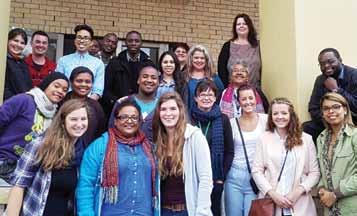
- Dr Marilize Le Roes-hill attended the Foundational Biodiversity Information Forum held at the Pretoria Botanical Gardens. New collaborative projects with researchers at uWC, Ru and uP were discussed.
- Seven BTB-based engineering students attended a workshop on environmental modelling and remediation hosted by the university of Twente in collaboration with CPuT’s CWSR.
- Dr Marilize Le Roes-hill and Dr Pam Welz hosted a WRC workshop and reference group meeting for Projects K5/2404/3, K5/2405/3, K5/2504/3, K5/2489/3 – national surveys on water, wastewater, and energy management in the edible oil, laundry, sugar and textile industries. The workshop was attended by academics and industry representatives from around SA, local and metropolitan
government officials from Durban, Gauteng and Cape Town, and representatives from the Department of Water and Sanitation and the WRC.
- Dr Marilize Le Roes-hill was part of a discussion group on the amendment of Chapter 6 of the National environmental Management and Biodiversity Act (NeMBA).
- Dr Marilize Le Roes-hill was invited to give a presentation on environmental ethics at CPuT’s 1st ethics Day.
- Mr Alaric Prins obtained his MSc Biotechnology, uWC cum laude
- Mr Patrick hermaan Ngemakwe obtained his MTech Food Technology, CPuT cum laude
This group aims to research the mechanisms of carcinogenesis in order to reduce human health risk and to identify dietary constituents as chemopreventive agents to prevent/reduce the outcome of cancer.
The main emphasis on chemoprevention focuses on South African herbal teas, such as rooibos, and dietary unsaturated fatty acids, such as omega-3 fatty acids, which can have an impact on the physical and biological cellular responses that can influence carcinogenesis. Cellular processes involved in carcinogenesis and chemoprevention are monitored relating to alterations in fatty acid profiles of blood or tissue, apoptosis, cell proliferation and cellular oxidative status in suitable physiological fluids or tissues. Other research areas include polyunsaturated fatty acids and nutrition-related products.
Dr Stefan Abel abels@cput.ac.za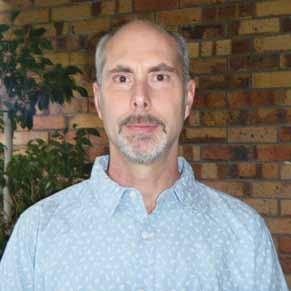
• Selected by CPUT Libraries director and staff to work on the implementation of an electronic
research data management system (eRIC), specifically the MediaTuM software program, developed by the Technical university of Munich, Germany
• Discussion with Dr V Nartey, chairman of the environmental Protection Agency (ePA) from Ghana and Mr I Dean, consultant for the ePA, regarding the research activities of the group
• Election as chair of the organising committee for the Nutrition Congress 2016
• Collaboration with Elsenburg (Directorate: Animal Sciences) and Department of Food Technology (CPuT) regarding the production and testing of dairy products derived from milk with a high conjugated linoleic acid (CLA) content
• Student exchange agreement with the University of Paris-est-Creteil, France, to host French students as part of their practical training programme
• Participation at the Cancer Association of South Africa (CANSA) Research in Action Conference
• Development of a lipid-herbal tea emulsion as part of a technology development research project
• Participation in an IP Wise™ workshop presented by the DST, SARIMA and NIPMO (National Intellectual Property Management Office)
This group also had an MTech and an MSc graduate this year, one cum laude (Mr L Arendse, The modulating effect of conjugated linoleic acid on cancer cell survival in vitro) from uWC.
Chemoprevention focuses on s outh African herbal teas, such as rooibos, and dietary unsaturated fatty acids.
Research conducted by this group aims to assess and reduce exposure of rural subsistence maize farming communities to carcinogenic mycotoxins produced by toxigenic food-borne fungi. The intention is to protect populations in SA from the impact of dietary exposure to mycotoxins.
Research during 2015 focussed on the main research objectives of the group
- To monitor multiple mycotoxins and surveillance of toxigenic food-borne fungi in rural subsistence farmed maize
- To implement advanced analytical methods
- To study the molecular mechanisms of fumonisin biosynthesis by Fusarium verticillioides
- To investigate the relationship between dietary multi-mycotoxin exposure, and infant and young child growth
Dr Hanneke Alberts albertsh@cput.ac.za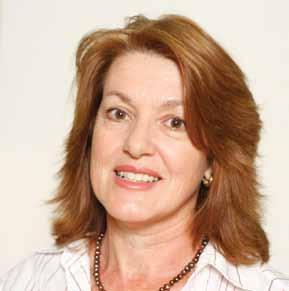
- To employ biological methods for the reduction of mycotoxins in maize
• Four field studies were undertaken in rural areas of the eastern Cape, Kwazulu-Natal, Limpopo and Mpumalanga as part of research projects funded by the South African Maize Trust
- Consortium study (IBMB, ARC, TuT) on multimycotoxin and mycological surveillance of small-holder farmers in four maize growing
provinces in South Africa
- Collaboration between IBMB and NWu on The relationship between mycotoxin exposure and infant and young child growth amongst infants from deep rural areas of the Eastern Cape Province, South Africa: A pilot study
• Expert decision making took place on national and international levels with regard to regulatory levels of mycotoxins in food, fumonisin risk assessment and analytical methods
- Technical meeting of African experts on contaminants in foods (Prof GS Shephard)
- Risk assessment of mycotoxins with emphasis on aflatoxin M1 (Prof GS Shephard)
- International 9th Codex Committee decisions on Contaminants (CCCF) (Prof GS Shephard)
- Consultation with the National Department of health (Prof WCA Gelderblom, Prof GS Shephard)
- South African Maize Trust inter-laboratory evaluation study on a LC-MS analytical technique for quantification of multiple mycotoxins in maize (Dr JF Alberts, Prof GS Shephard)
• Material Transfer and Confidentiality and Nondisclosure agreement documents between CPuT and the united States Department of Agriculture (uSDA) were finalised. A collaborative project was undertaken: Molecular
profiling of morphologically characterised Fusarium strains
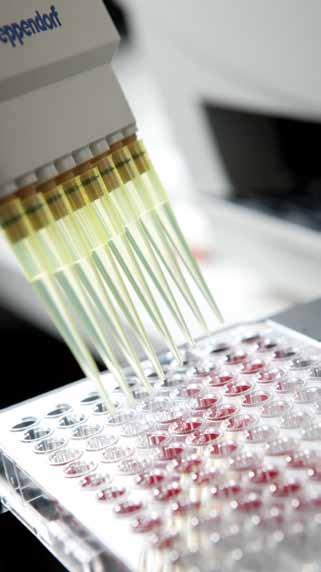
• Dr JF Alberts was elected as a member of the management committee of the African Society of Mycotoxicology
• Dr JF Alberts was invited to serve on the Mycotoxin Research Review Panel of the South African Maize Trust
• Supervision was undertaken of learners of COSAT in Khayelitsha with regards to their research projects entered into the Cape Town eSKOM expo for Young Scientists; four gold medals and a bronze medal were won at the regional competition, and a silver medal and a Su scholarship were won at the national competition
• Dr JF Alberts received a CPUT bronze award for Research excellence in the Industry Funding category
• Discussions with universities and industry with regards to collaborative projects took place
- The National Metrology Institute of South Africa re fumonisin purification, sales and collaboration on the development of fumonisin reference material
- Dr LK Nyanga, Chairperson of the Institute of Food, Nutrition and Family Sciences, university of Zimbabwe, re the International Development Research Centre (IDRC) funded project Post-harvest management technologies for reducing aflatoxin contamination in maize grain and exposure to humans
- The Faculty of Natural Sciences, NWu: Prof Jh hamman from the Centre of excellence for Pharmaceutical Science, re the effect of mycotoxins on porcine intestinal function and bioavailability of rooibos constituents; Prof F van der Westhuizen from the Biochemistry Department, re the use of their Metabolomics platform; Dr T Lombard from the School of Physiology, Nutrition and Consumer Sciences, re stunting and health effects of mycotoxins in children; and Prof CM Smuts from the Centre of excellence for Nutrition, re lipids in gut function.
- Maize Trust funded collaborative projects
- Future exchange programmes for students and researchers with the university of Parisest-Créteil, France


CPUT signed an exchange agreement with the Hochschule Neu-Ulm University of Applied Sciences in Germany in order to develop active cooperation in various areas between the two universities. The promotion of international academic cooperation and the exchange of teaching and research experience between the two institutions are among the main core objectives of this agreement, and will entail the development of friendship and mutual interests on a reciprocal basis of respect for the independence and equal status of each university.
Prof Dr Uta Feser, President of Hochschule Neu-Ulm, says they are particularly looking at joint research on Business Intelligence and Health as a start. She says their focus is to work with a number of universities in sub-Saharan Africa. Prof Louis Fourie, CPUT DVC: Knowledge & Information Technology Services, says the relationship will make provision for students and staff to expand their horizons. “They will get an opportunity to work with other students and staff while experiencing another way of thinking.”
fouriel@cput.ac.za
The relationship will also see both institutions holding joint international conferences, conducting joint research projects and engaging in other activities in order to enhance mutual understanding and cooperation. Prof Fourie says this agreement also has the potential to provide the necessary training for people working at the SKA project, who are dealing with substantial quantities of data.
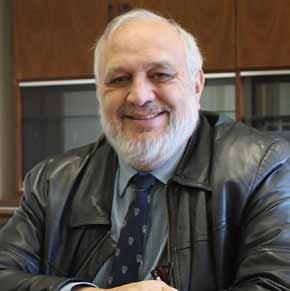
The Office of International Affairs assists CPuT in furthering its objectives for internationalisation, such as establishing a pervading internationalisation culture on campus and introducing an international perspective in university policies and strategies. It does so by promoting international cooperation in the fields of higher education and research. Through agreements with institutions in over 50 countries, CPuT has a framework for academic and research cooperation and capacity building across borders.
to bring these universities to a more advanced level in terms of management and strategies of internationalisation through the training of staff and the strengthening of structures and policies.
Ms Merle McOmbring-Hodges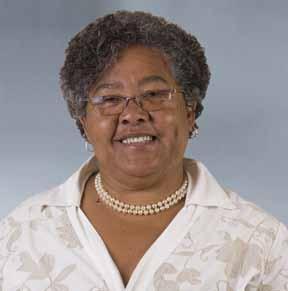
hodgesm@cput.ac.za
One of our key action areas for 2015 has been Capacity Building in higher education (CBhe 2015): IMPALA (Internationalisation and Modernisation Programme for Academics, Leaders and Administrators). The project aims to set up a network of european and South African universities and educational organisations to respond to the needs in our country’s higher education community. It aspires to develop clear and viable internationalisation strategies within South African partner universities to bring them up to par and give them a much needed head start for future international cooperation initiatives. It also seeks
The IMPALA project is composed of nine full partners: five european higher education organisations (university of Antwerp, university of Bologna, university of Graz, utrecht Network, Academic Cooperation Association) and four local universities (CPuT, university of Limpopo, university of Fort hare, university of Venda). The university of Antwerp acts as project coordinator, and CPuT takes the role of joint coordinator. The IMPALA project also includes one associated partner, the International education Association of South Africa (IeASA).
The objectives stated will be accomplished through four task teams working on different subject areas: Staff Training, Policy Development and Implementation, Academic Issues and Mobility. A large group of South African university staff (academics, university management and administrators) will be trained, and will attend workshops and participate in site visits. Internationalisation of university strategies and management structures will be defined and implemented according to the needs and nature of the partner university. Quality assurance in higher education including the establishment of joint programmes and credit recognition in the european and South African contexts will be studied and
t he o IA assists CPU t in furthering its objectives for internationalisation by promoting international cooperation in the fields of higher education and research.
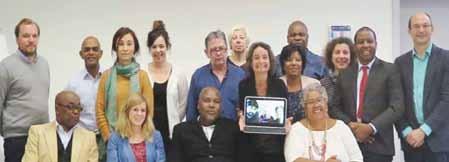
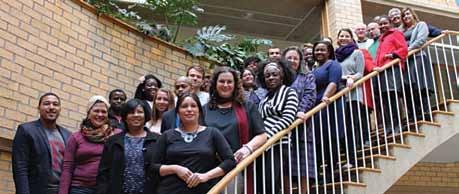
The Erasmus Mundus programme offers South African staff and students the opportunity to complete a master’s, PhD or postdoc with affiliate universities in Europe. Staff members can also apply for staff visits to investigate aspects related to their work at European universities. So far, 55 CPUT staff members and students have had the opportunity to improve their qualifications at European universities.
Director of the Office of International Affairs and coordinator of Eurosa (one of the Erasmus Mundus programmes), Ms Merle Hodges, says the alumni chapter will play a key role in CPUT’s Erasmus Mundus activities. Apart from providing support to new participants and promoting the programme, alumni can also assist with various studies and reports requested by
the European Commission, who funds the programme.
DVC: RTIP, Dr Chris Nhlapo, commended the programme, saying it has played a key role in supporting staff improving their qualifications. In addition, Dr Nhlapo says the programme has other positive spin-offs, like the successful roll-out of the university’s Medical Laboratory Science qualification.
Former head of the Biomedical Sciences Department, the late Prof Johan Esterhuyse, who was one of the first recipients of the programme, participated in a staff visit at Antwerp University in Belgium and Han University College. While in Holland, he had the opportunity to benchmark the new programme against similar international options.
compiled. Barriers to mobility will be identified and tips and tricks to overcome these barriers will be formulated. The project will produce a handbook for academics and administrators on internationalisation in all its aspects based on the outcomes and achievements of the project. it will also produce a handbook for students including tips for a smooth mobility period abroad.
The ultimate goal of the IMPALA project is to translate the policies and strategies into action, and to lay the foundation of a solid partnership of a european network of universities and a South African network of universities that will engage in consortium-to-consortium cooperation initiatives.

CPuT’s VC has supported us in the successful submission of a number of erasmus+ Credit Mobility Proposals. With the termination of the erasmus Mundus mobility programme – within which 67 erasmus Mundus alumni were produced – the erasmus+ programme was established by the european union. CPuT is doing very well with the erasmus+ Credit Mobility programme, which is more focused and discipline specific. We have signed Mou erasmus+ Credit Mobility agreements with Turkey (engineering), France (engineering), Latvia (FID), hungary (health Science) and Belgium.
We are very proud of everyone involved in these initiatives.
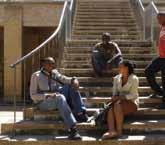
CPUT is participating in a multimillion rand capacity building programme over the next three years. The institution is one of several South African universities that have impressed decision makers running the European Union funded Erasmus+ Programme. Director of the Office of International Affairs, Ms Merle Hodges, who oversees the programme at CPUT, says up to now, the Erasmus Mundus programme has largely focused on mobility programmes, which have provided staff and students with opportunities to complete a master’s, PhD or postdoc programme with affiliate universities in Europe.
The organisation is broadening its scope to include capacity development in the higher education sector, and recently put out an international call for proposals. The capacity programmes include: Entrepreneurship, Modernisation and Innovation in SA (EMISHA); Internationalisation and Modernisation Programme for Academics, Leaders and Administrators (IMPALA); and The International Learning Network on Sustainability (LenSin).
EMISHA aims to enhance innovation capacities by training students, researchers and staff, and IMPALA focuses on internationalisation at four historically disadvantaged institutions, i.e. CPUT, and the universities of Forth Hare, Venda and Limpopo. “This project aspires to develop clear and viable internationalisation strategies within these universities to bring them up to speed and give them a much needed head start for future international cooperative initiatives,” says Ms Hodges. As part of the IMPALA programme, South African university staff will be trained in the areas identified. CPUT is the principal partner and joint coordinator of IMPALA.
The LenSin project looks at internationalisation, intercultural cross-fertilisation and accessibility of higher education by consolidating and empowering a global network.
Please see page 12 for Prof Burger’s message.
BY STAFF MeMBeRS
mTech (business administration)
CPuT
Rorwana av
Prof Dina Burger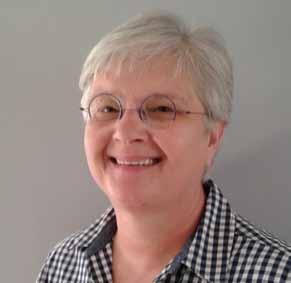
burgerd@cput.ac.za
The role of academic entrepreneurs and spin-off companies in the process of technology transfer and commercialisation in South Africa: A case of a university of technology
Student Counselling provides a comprehensive range of services to registered and prospective students. These services are provided through different levels of engagement, ranging from individual counselling and therapy sessions, to support groups, skills development workshops and wellness promotion. The following are some of the department’s core services: individual counselling and psychotherapy; career development; advocacy and learner support; skills development; a peer helper programme; research; community outreach; a wellness programme; student welfare; marketing and promotion; professional staff development; and training of interns.
Ms E Smit smite@cput.ac.za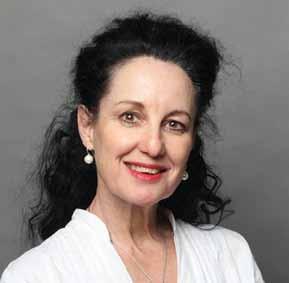
As part of their contact with students, the professional staff members regularly gather information through qualitative and quantitative methods. The results are presented as either informal (annual reports and newsletters) or formal (conference papers, workshops, poster presentations and journal articles) research outputs. A number of staff members in the department are engaged in PhD studies.
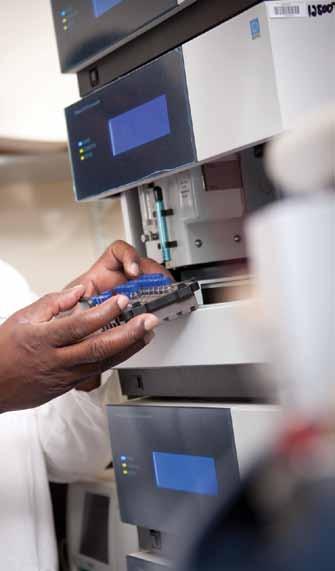
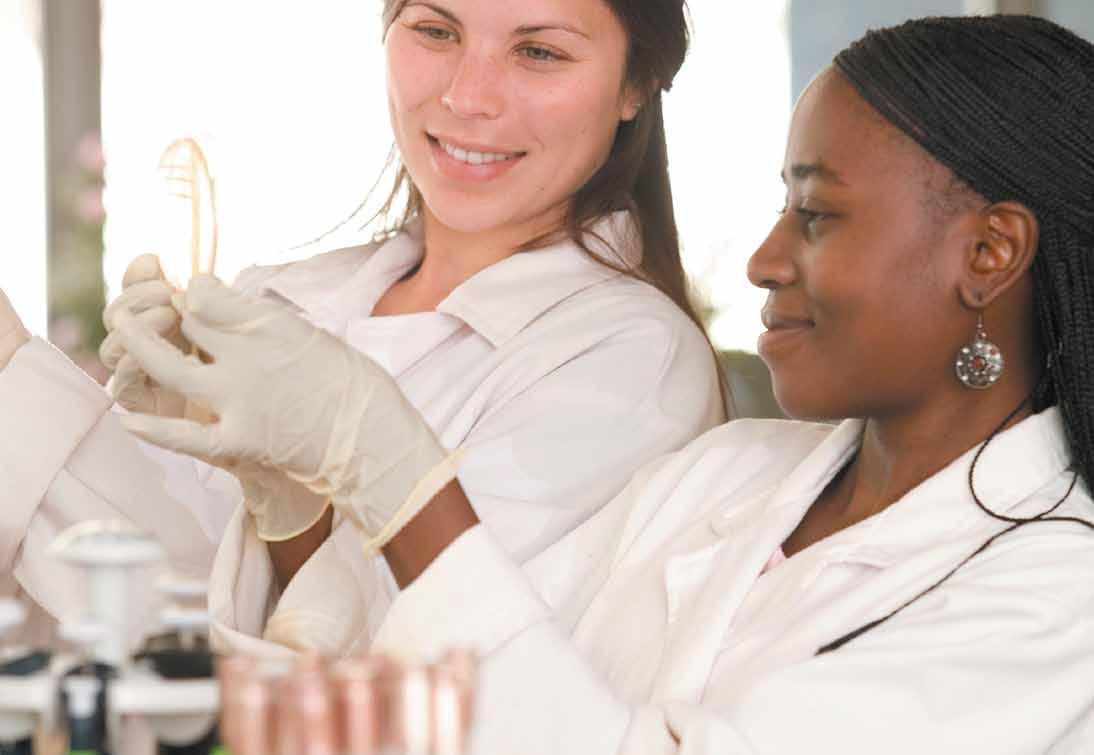

Dr Chris Nhlapo
021 959 6203
021 959 6002
nhlapoc@cput.ac.za
Room 228, Administration
Building, Bellville
Secretary ms samantha Pivalizza-Coetzee
021 959 6242
021 959 6002
pivalizza-coetzees@cput.ac.za
Room 228, Administration
Building, Bellville
Prof Rene Pellissier
021 460 3402
pellissierr@cput.ac.za
Room 6.18, Administration
Building, Cape Town
Secretary ms Jeanine gordon
021 460 3403
gordonj@cput.ac.za
Room 6.18, Administration
Building, Cape Town
PROF DINA BuRGeR
Director: Research
021 460 3878 / 021 959 6568 / 6699 burgerd@cput.ac.za
Room 2.8, Administration Building, Cape Town Old Language Building, Bellville
MS eDWINA PeDRO
Secretary to the Director
021 460 3128 / 021 959 6568 / 6699 pedroe@cput.ac.za
Room 2.8, Administration Building, Cape Town Old Language Building, Bellville
MS SAMANThA COeRT
NRF Intern
021 460 3074 coerts@cput.ac.za
Room 2.8, Administration Building, Cape Town
MS ShAFeeQA heNDRICKS-DRAMAT Research Finance Administrator
021 460 4241
dramats@cput.ac.za
Room 2.8, Administration Building, Cape Town
MS TANIA hOLMeS-WATTS
Research Grants Manager
021 460 4240 / 021 959 6699
holmes-wattst@cput.ac.za
Room 2.8, Administration Building, Cape Town Old Language Building, Bellville
MS LuYOLO KAMATI
Coordinator: Research Information Management System (RIMS)
021 460 3843 kamatil@cput.ac.za
Room 2.8, Administration Building, Cape Town
MR MARVIN LA MeYeR
Research Finance Administrator
021 460 3798/021 959 6568
lameyerm@cput.ac.za
Room 2.8, Administration Building, Cape Town Old Language Building, Bellvillee
MS PuMZA MAKAuLA
Research Grants Officer
021 460 3895
makaulap@cput.ac.za
Room 2.8, Administration Building, Cape Town
MS hLeNGIWe NZAMA
NRF Intern 021 460 3887
nzamah@cput.ac.za
Room 2.8, Administration Building, Cape Town
MS AMeLIA RORWANA
Coordinator: Research Finance 021 460 4283
rorwanaa@cput.ac.za
Room 2.8, Administration Building, Cape Town
MS SISANDA SIThOLe
Research Compliance Officer 021 460 3539
sitholesi@cput.ac.za
Room 2.8, Administration Building, Cape Town
MS LARA SMITh
Coordinator: Research Writing, Information & Publications 021 460 3328 smithll@cput.ac.za
Room 2.8, Administration Building, Cape Town
MS PhAThISWA SWAARTBOOI
Research Finance Administrator
021 460 3796
swaartbooip@cput.ac.za
Room 2.8, Administration Building, Cape Town
PROF MIChAeL MCPheRSON Director 021 953 8455 021 953 8632
mcphersonm@cput.ac.za
Centre for Postgraduate Studies
New Library Building, Bellville
MS LAuReN DYeRS Secretary to the Director 021 953 8600 021 953 8632
dyersla@cput.ac.za
Centre for Postgraduate Studies
New Library Building, Bellville
DR LILLIAN BINGO Coordinator 021 953 8463 021 953 8632
bingol@cput.ac.za
Centre for Postgraduate Studies
New Library Building, Bellville
MS eThNe MeNTOOR Finance Administrator 021 959 6505 021 953 8632
mentoore@cput.ac.za
Centre for Postgraduate Studies
New Library Building, Bellville
DR CORRIe uYS
CPGS Statistician 021 460 3258
uysc@cput.ac.za
Centre for Postgraduate Studies
e-Ikamva Building, Caledon Street, Cape Town
MS PhAPhAMA MhLeKWA Evaluation & Monitoring Officer 021 953 8462 021 953 8632
mhlekwap@cput.ac.za
Centre for Postgraduate Studies
New Library Building, Bellville
MS SALOMe MASWeu Bursary Administrative Assistant 021 953 8600 or 021 464 7249 021 953 8632
masweus@cput.ac.za
Centre for Postgraduate Studies New Library Building, Bellville
PROF GARY ATKINSON-hOPe
Director of Technology Transfer & Industrial Linkages
021 959 6431
atkinsonhopeg@cput.ac.za Technology Transfer Office Technology Institute, Bellville
MS hALIMAh RABIu
Coordinator: Technology Promotion 021 959 6879
rabiuh@cput.ac.za
Technology Transfer Office Technology Institute, Bellville
MS KAReN MARTIN
TTO Officer
021 959 6044
martink@cput.ac.za
Technology Transfer Office Technology Institute, Bellville
MR MARLIN FRANSMAN
Contracts Manager
021 959 6044 fransmanm@cput.ac.za
Technology Transfer Office Technology Institute, Bellville
MS LOuISe GROeNeWALD
Contracts Manager
021 959 5895
groenewaldl@cput.ac.za
Technology Transfer Office Technology Institute, Bellville
MR ChRIS LOMBARD
Business Manager 021 959 5871 lombardc@cput.ac.za Technology Transfer Office Technology Institute, Bellville
MS NOMAPheLO NDINDWA Assistant TTO Officer 021 959 6044 ndindwan@cput.ac.za
Technology Transfer Office Technology Institute, Bellville
MS LARA SMITh smithll@cput.ac.za
MR JOhAN uYS johan.uys@gmail.com
MR STePheN ASPeLING spling8@gmail.com
MS LuYOLO KAMATI kamatl@cput.ac.za
The 2015 Research Report is published by the CPuT Research Directorate. The editors acknowledge, with thanks, the contributions of:
• The Marketing and Communication Department at CPUT for photographs and items retrieved from the News Archive, including news story writers Kwanele Butana, Lauren Kansley, Candes Keating, Thami Nkwanyane and Janyce Weintrob
• Dr André Steenkamp (Faculty of Education), for the Afrikaans translation of the Vice-Chancellor’s message
• Mr Zakhile Somlata (Faculty of Education), for the isiXhosa translation of the Vice-Chancellor’s message
• The Research Directorate staff
• All researchers, faculties, research units and research centres
MS BRIDGeTTe huNT bahunt@wol.co.za
RSA LIThO www.rsalitho.co.za
